Pocket Mystery is the new “3 minute mysteries” game for the iOS and Android platforms where you solve crimes by tapping on the right area in the crime scene. There are hundreds of questions in this game, and we have all of the answers.
Read on for a list of all answers, solutions, and spoilers for Pocket Mystery!
Stage 1:
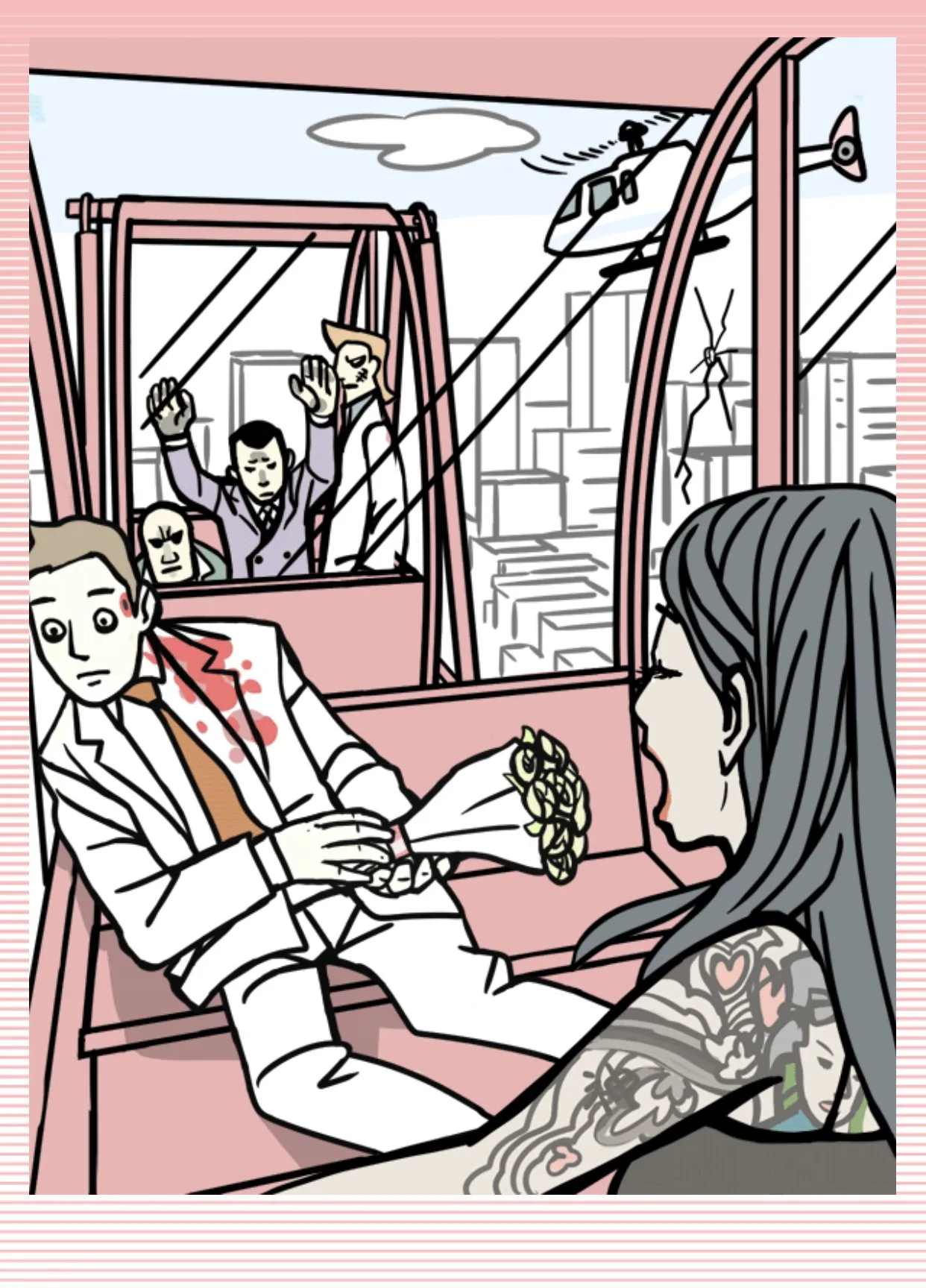
Question 1: The man on the Ferris wheel was shot in the head, so tap in the bullet wound on his head.
Question 2: The investigator knew that the victim was shot from outside of the Ferris wheel, because of the hole in the glass.
Question 3: The shooter was inside of the helicopter. This is known because the helicopter is at the same height as the Ferris wheel car.
Question 4: The gang members giving angry looks from the next car over are the ones who cued the shooter to fire at the victim.
Stage 2:
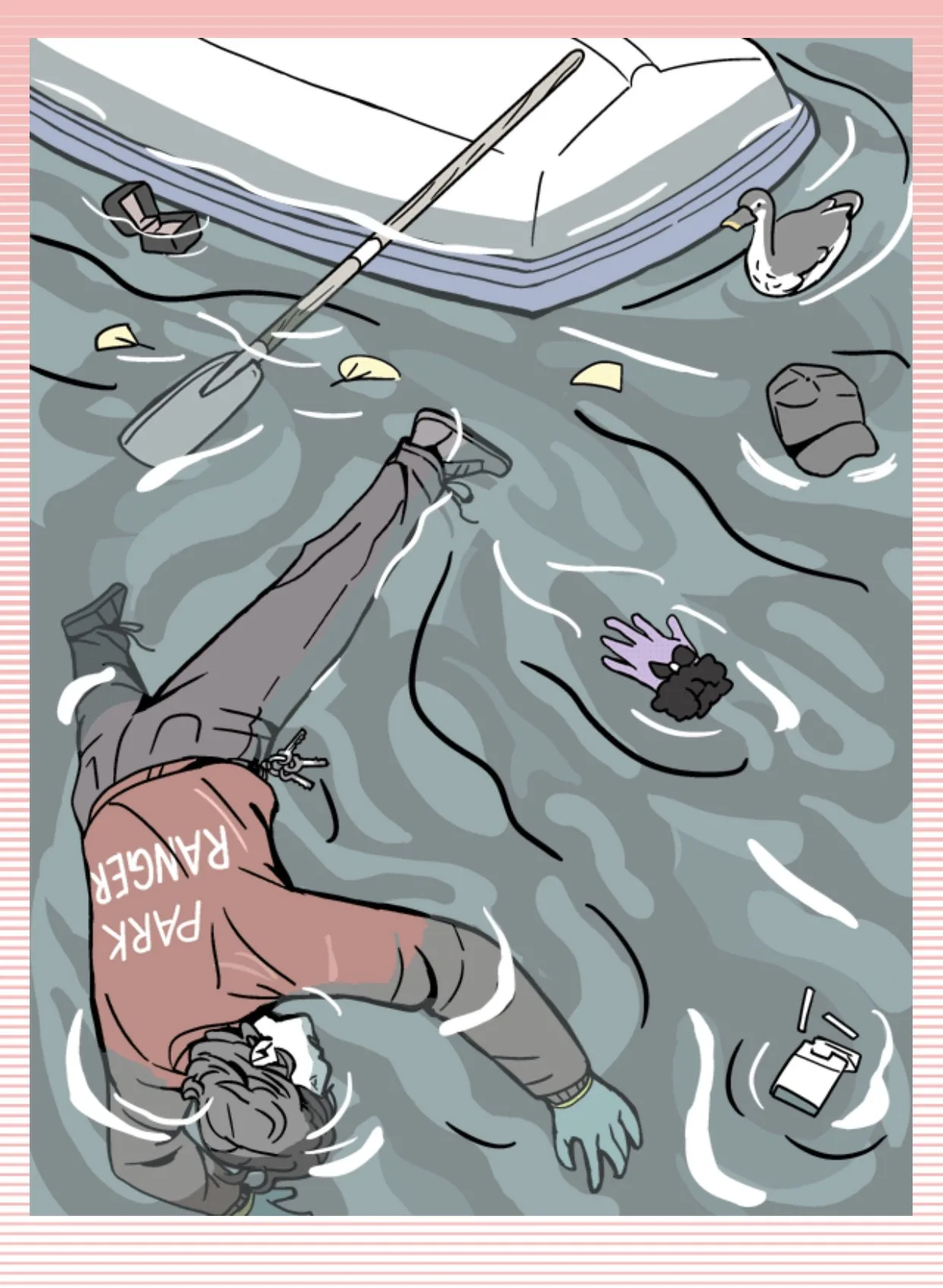
Question 5: The victim is known to have worked for the park, due to the park ranger vest on his back.
Question 6: The boat was locked away, but it is known to have gotten out due to the keys on the victim’s waist.
Question 7: The victim was known to be with someone when he died due to the glove floating next to him in the water.
Question 8: A relationship is suggested between the victim and his companion due to the ring box floating in the water next to him.
Stage 3:
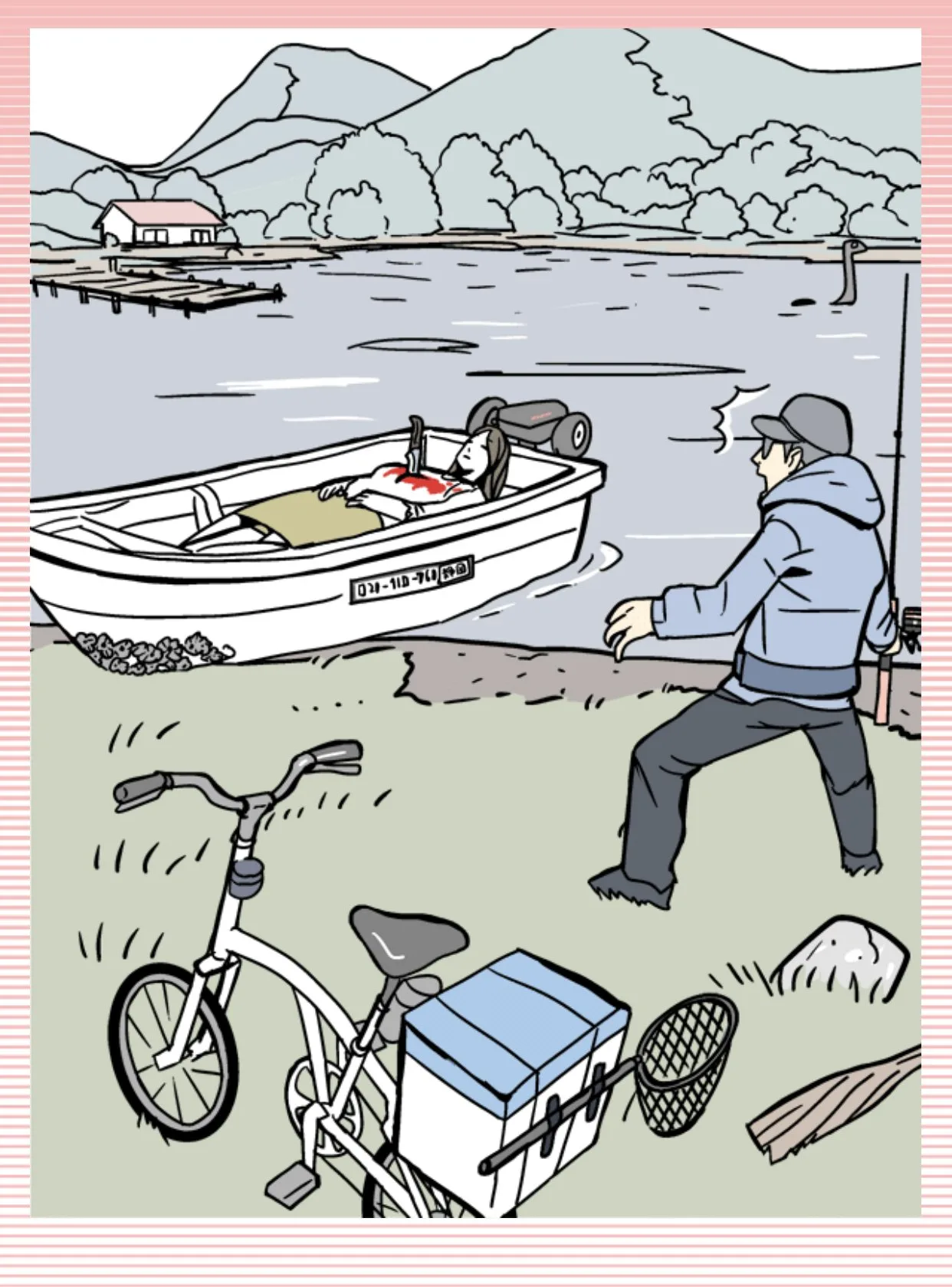
Question 9: The fisherman knew that the woman in the boat was dead due to the knife wound in her chest.
Question 10: The owner of the boat was easily found due to the vessel ID number on the side of the boat.
Question 11: The fisher was ruled out as a suspect due to the bike that he road to the scene on. The boat was towed by a vehicle; a bike can’t tow a boat.
Question 12: Police knew that the boat came from elsewhere due to the barnacles on the front. Barnacles grow in salt water, but the lake is fresh water.
Stage 4:
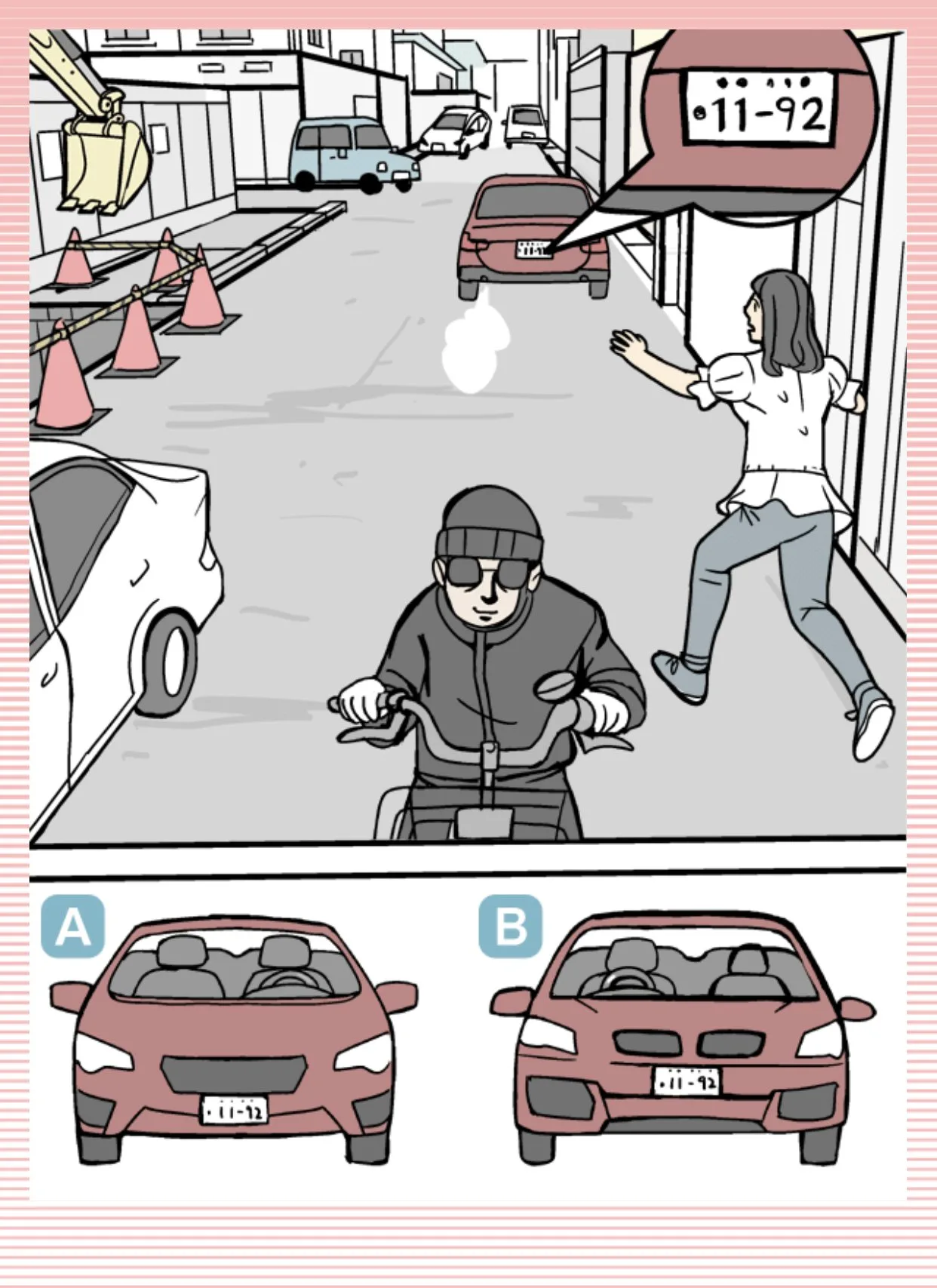
Question 13: The vehicle at the top of the picture (the red one) is the one that the purse snatcher was driving.
Question 14: The woman was walking on the right side of the road due to the road construction going on on the left side.
Question 15: The woman remembered the license plate number on the snatcher’s car, allowing the investigator to narrow down the suspect list significantly.
Question 16: The suspect was inside of car B, because car B is right-hand drive, allowing him to drive and snatch purses simultaneously.
Stage 5:
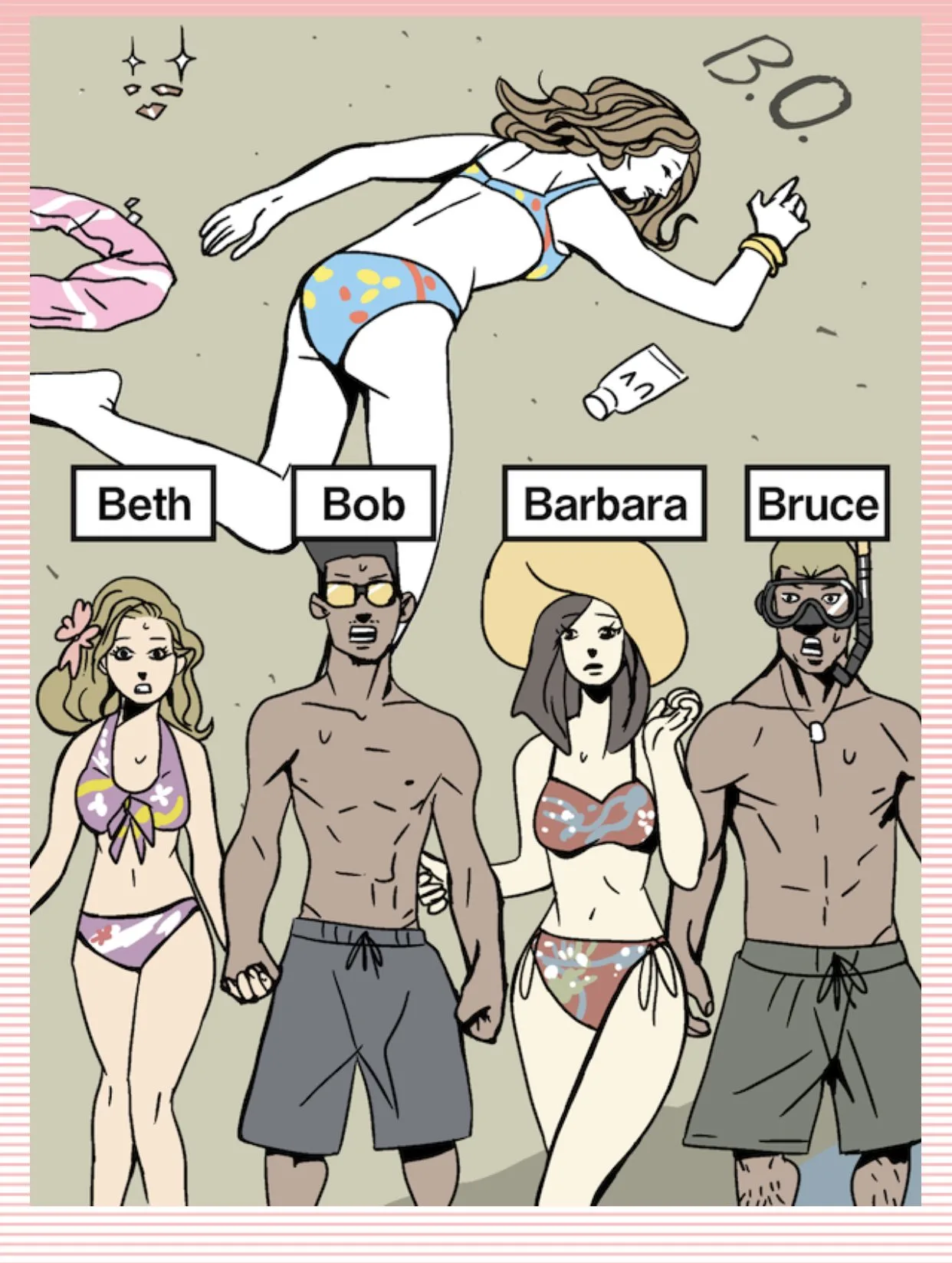
Question 17: The pieces of broken glass to the left of the woman’s head are remnants of the weapon used in the crime.
Question 18: The “BO” drawn in the sand above the head of the victim is the clue as to who did it.
Question 19: Police should question Bob because he is the only one with “BO” in his name.
Question 20: Bob murdered his girlfriend because he was in a relationship with Beth, so tap on his and Beth’s hands holding.
Stage 6:
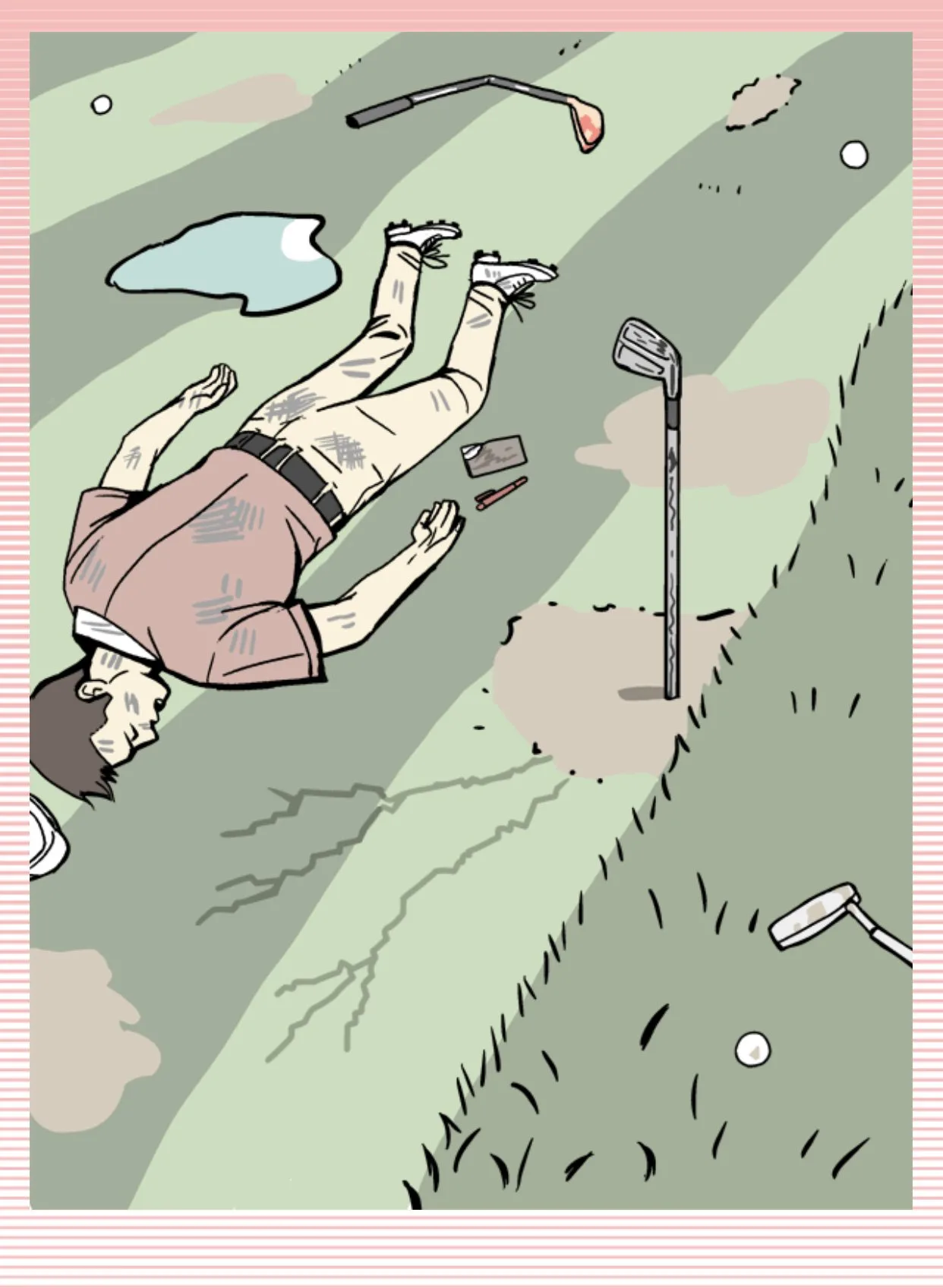
Question 21: The lightning-shaped marks in the grass show that the golfer was hit by lightning and died.
Question 22: The puddle of water next to the golfer’s body indicates that the weather was bad during the incident.
Question 23: The lightning specifically struck the golfer, despite the tall trees, because of the golf club planted in the ground next to him. Golf clubs are metal, and metal attracts lightning.
Question 24: Police conclude that the man was immobilized before the lightning strike by being hit over the head with another golf club, which is laying on the ground bent next to him.
Stage 7:
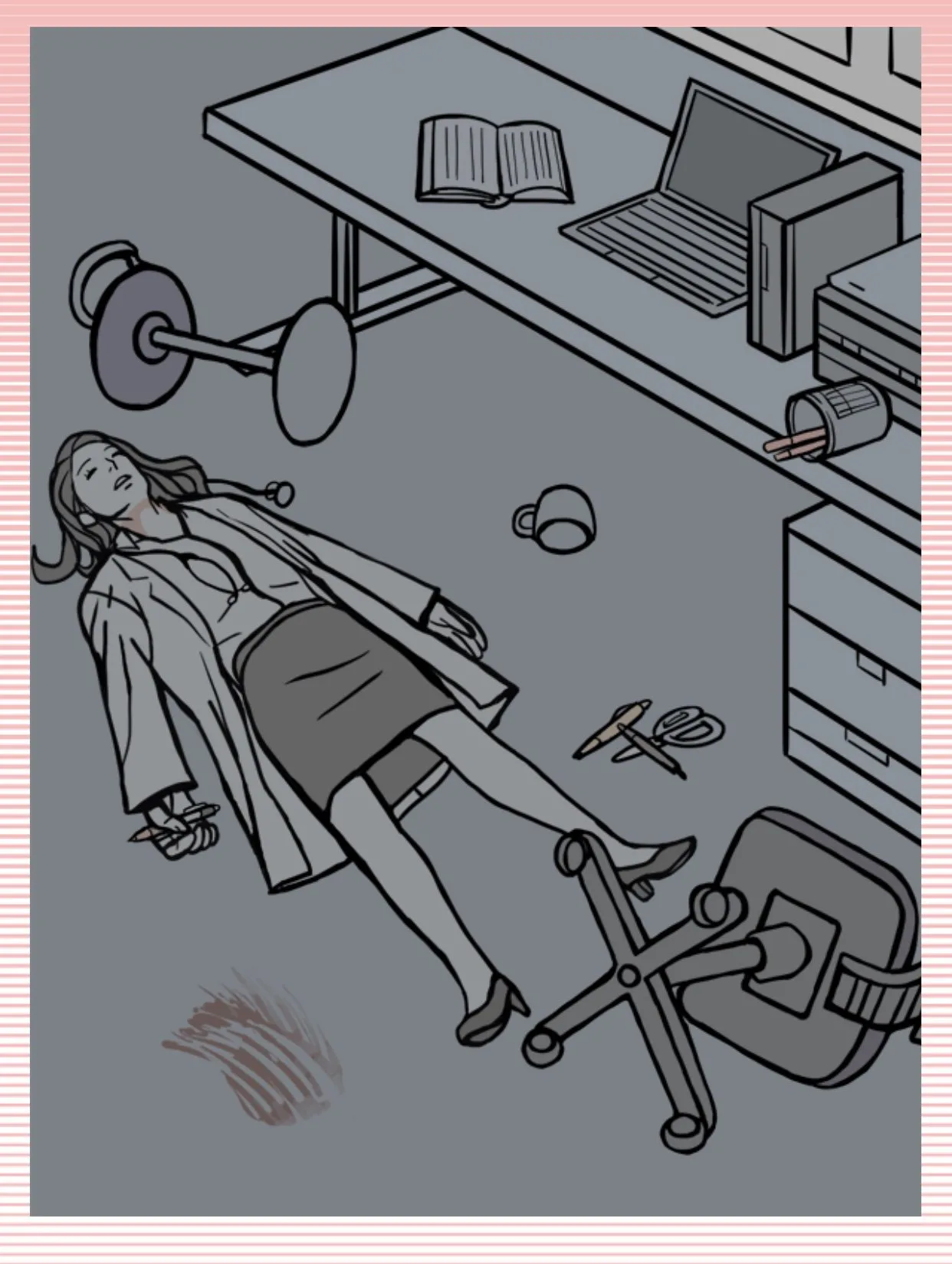
Question 25: The red mark on the victim’s neck indicates that she was strangled.
Question 26: The blood smear on the ground is indication that the assailant was injured, because the victim fought back.
Question 27: The murderer was injured by the pen that the doctor was holding, and is still holding even after her death.
Question 28: She was killed by someone working at the hospital, due to the open book on her desk. The book indicates that she was on her break at the time.
Stage 8:
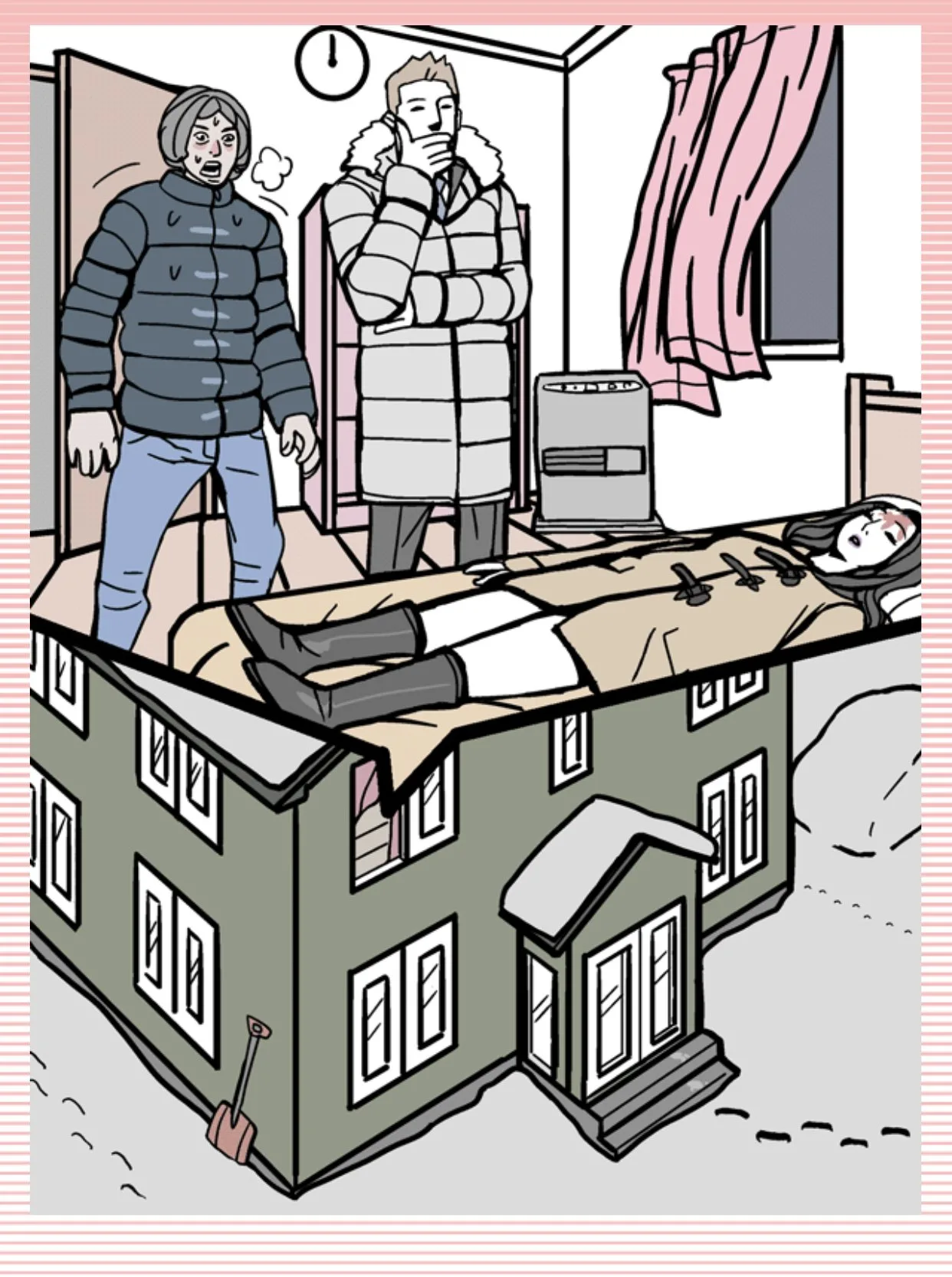
Question 29: The woman’s fatal wound is on her forehead.
Question 30: The artist is the sweating, panting guy in the black jacket. His panting makes the investigator wonder if he was exercising.
Question 31: The woman was murdered outside because of the warm jacket that she was wearing.
Question 32: The foot prints in front of the house are deeper than the other footprints due to the added weight of the woman being carried, which is why the artist is a prime suspect.
Stage 9:
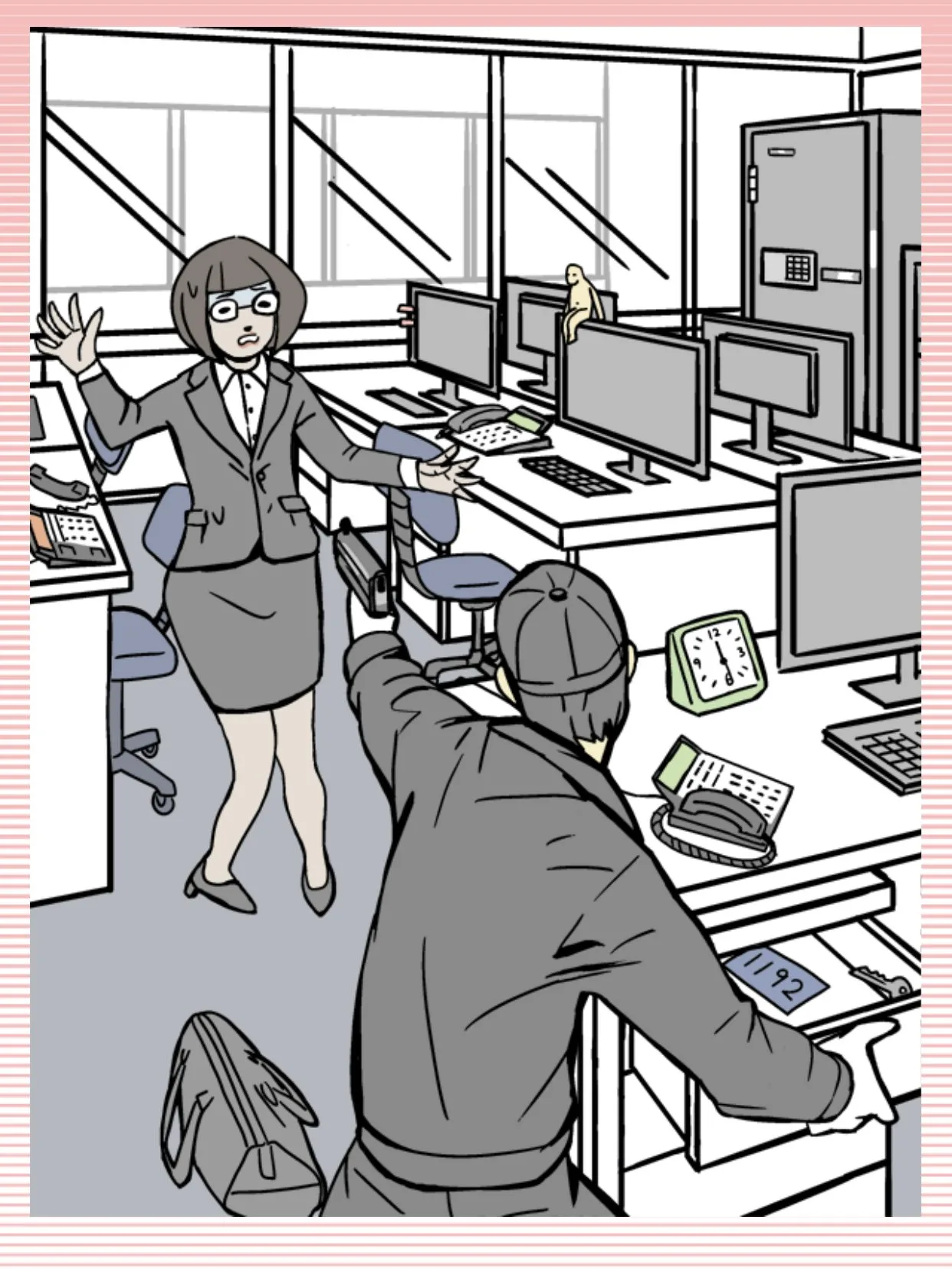
Question 33: The big safe in the upper right corner of the office made the robber think that there is a lot of cash
Question 34: The woman was the only one present because the clock said 12:30. Everyone else was out to lunch.
Question 35: The robber was looking through a specific drawer, because of the paper that says 1192, which is the code to the safe.
Question 36: The phone is the reason that the woman was able to stop the robber. She called emergency and left the phone off the hook.
Stage 10:
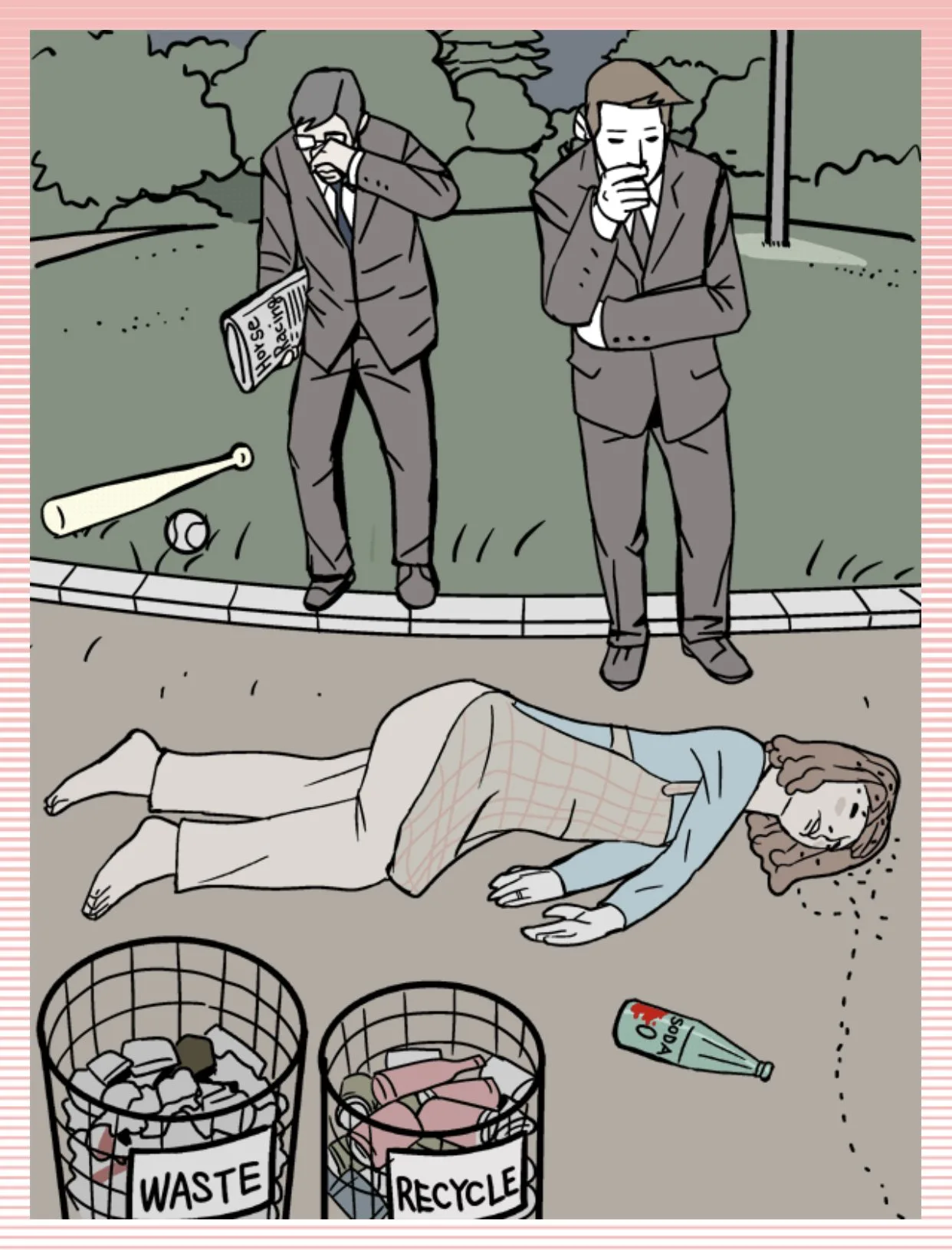
Question 37: the fact that she is barefoot indicates that she was brought to the park against her will.
Question 38: The ants indicate that the soda bottle was full before it was used as the weapon.
Question 39: The ants aren’t anywhere near the soda bottle, leading investigators to believe that it wasn’t the murder weapon.
Question 40: They were arguing about the paper in his hand, which had horse racing odds on it. The husband is addicted to gambling.
Stage 11:
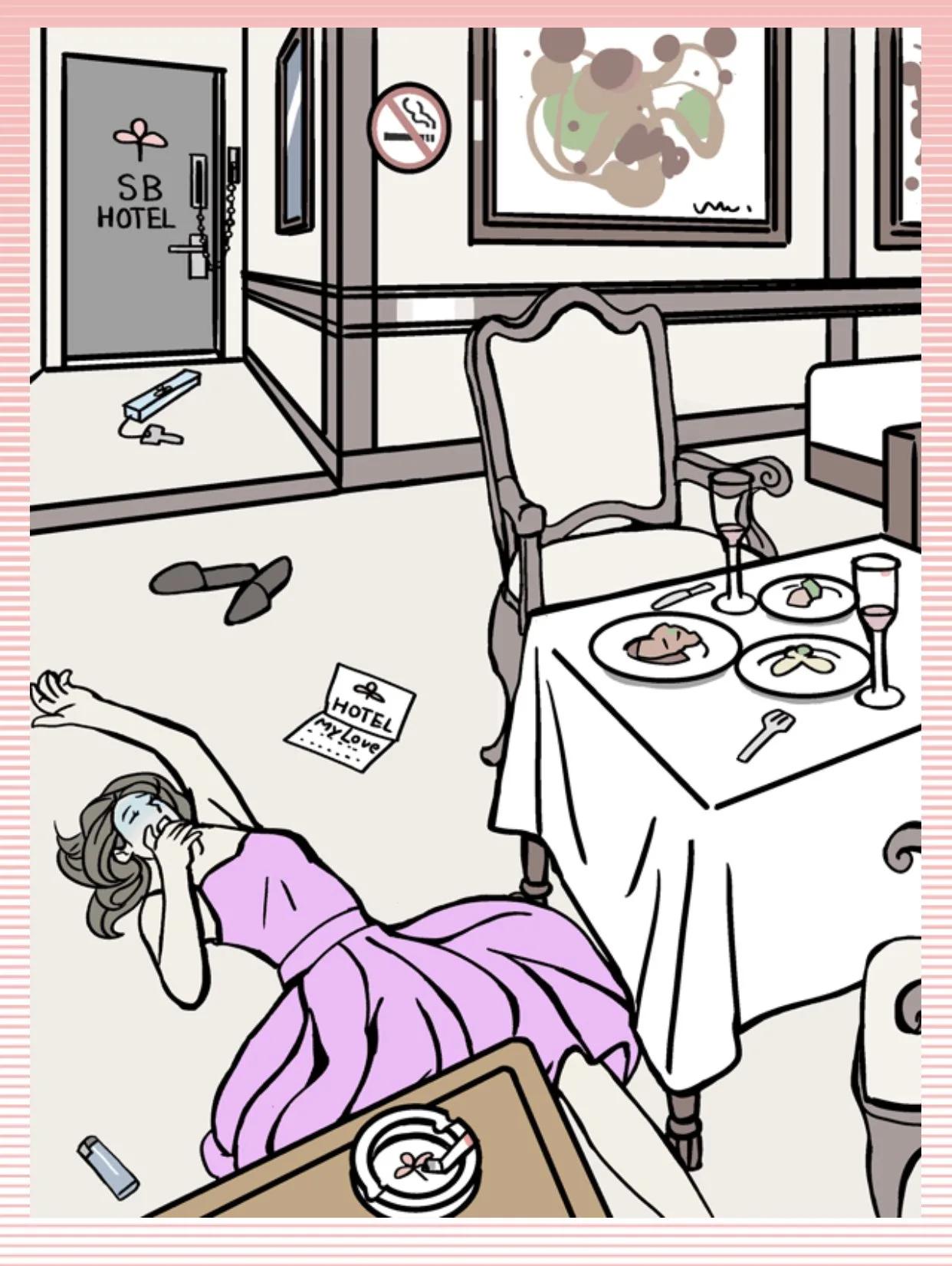
Question 41: The dinner table had two glasses on it, indicating that there were two people in the room at the time.
Question 42: The ashtray has the hotel logo on it despite the no smoking sign, indicating that the assailant may have been a staff member.
Question 43: The window next to the room door allowed the assailant to leave without unlocking the door.
Question 44: The love letter on the floor next to the woman would be the most likely item to contain the handwriting of the assailant.
Stage 12:
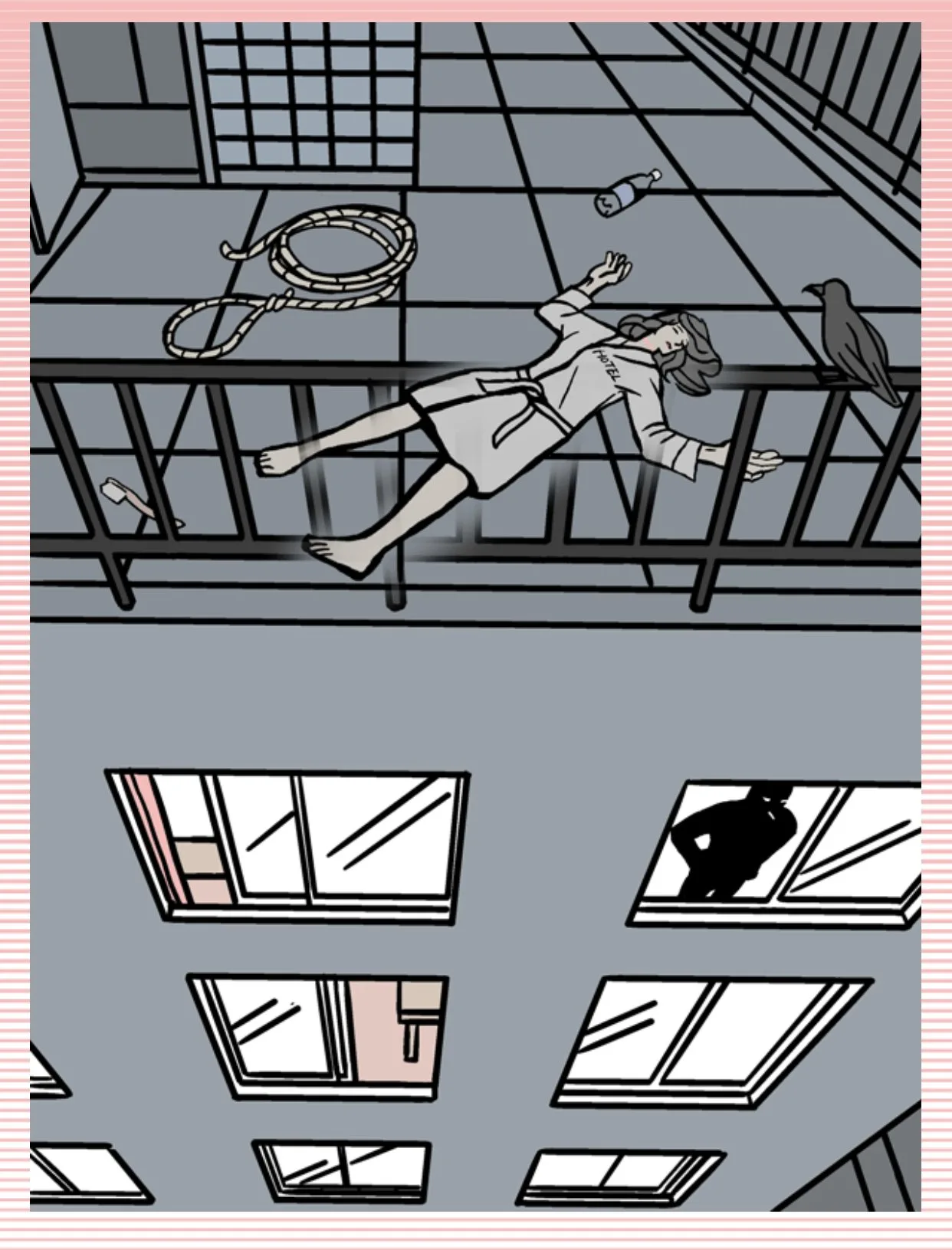
Question 45: The woman’s bathrobe indicates that she was intimate with the assailant.
Question 46: The fact that the woman was barefoot on the rooftop indicates that she was taken up there against her will.
Question 47: The window that is all the way open is the one that the woman was staying in at the time of the crime.
Question 48: The rope is the tool that allowed the assailant to get the victim to the rooftop.
Stage 13:
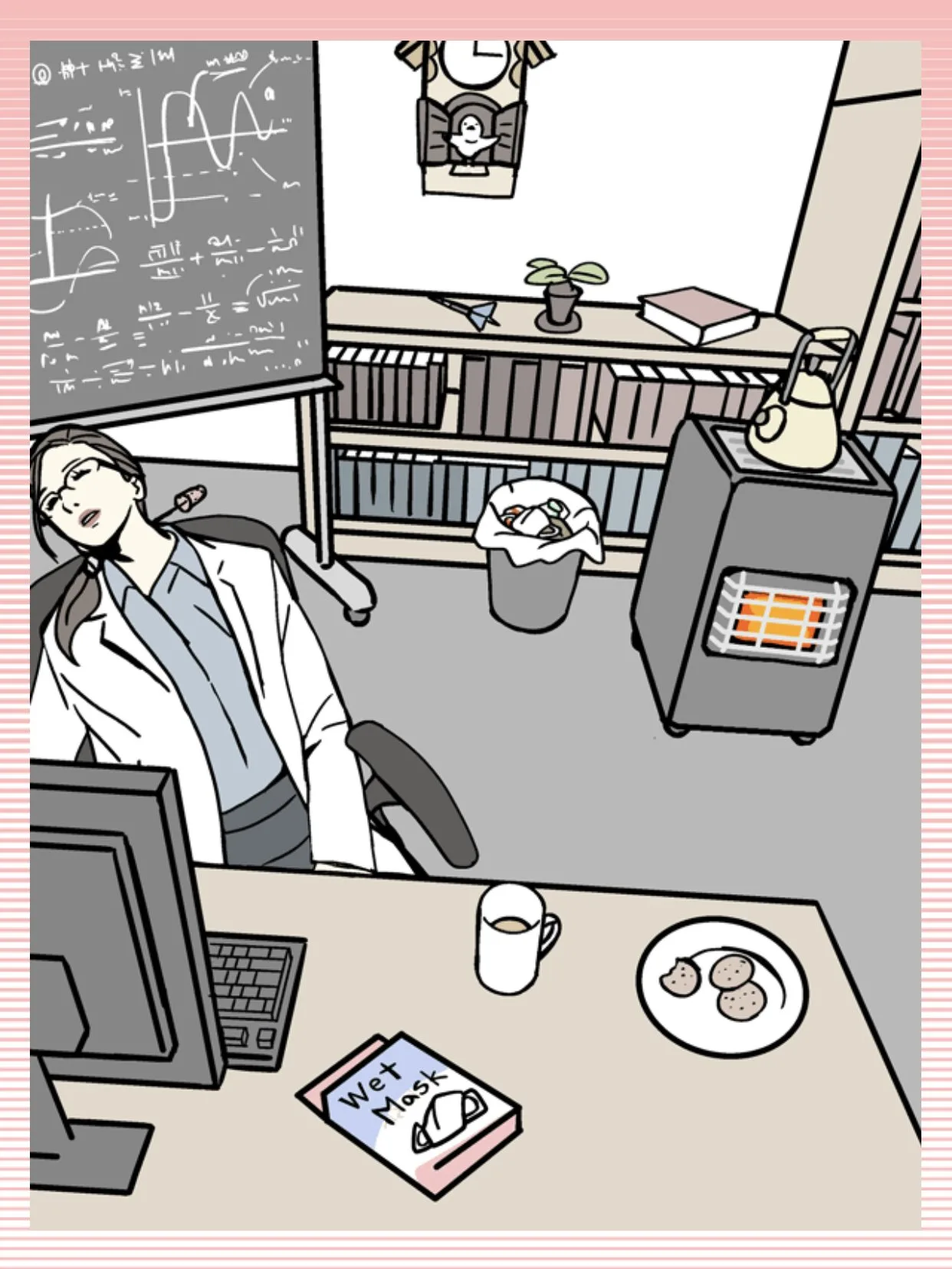
Question 49: The needle with a fork in the neck of the victim is the clue to what poisoned her.
Question 50: The cookies on the victim’s desk were used to put her to sleep, because they were infused with anesthetics.
Question 51: The space heater in her office was turned up and used to make the office extra hot.
Question 52: The teapot on top of the space heater was used to do the crime. The heat expanded the vapors and shot the needle at her.
Stage 14:
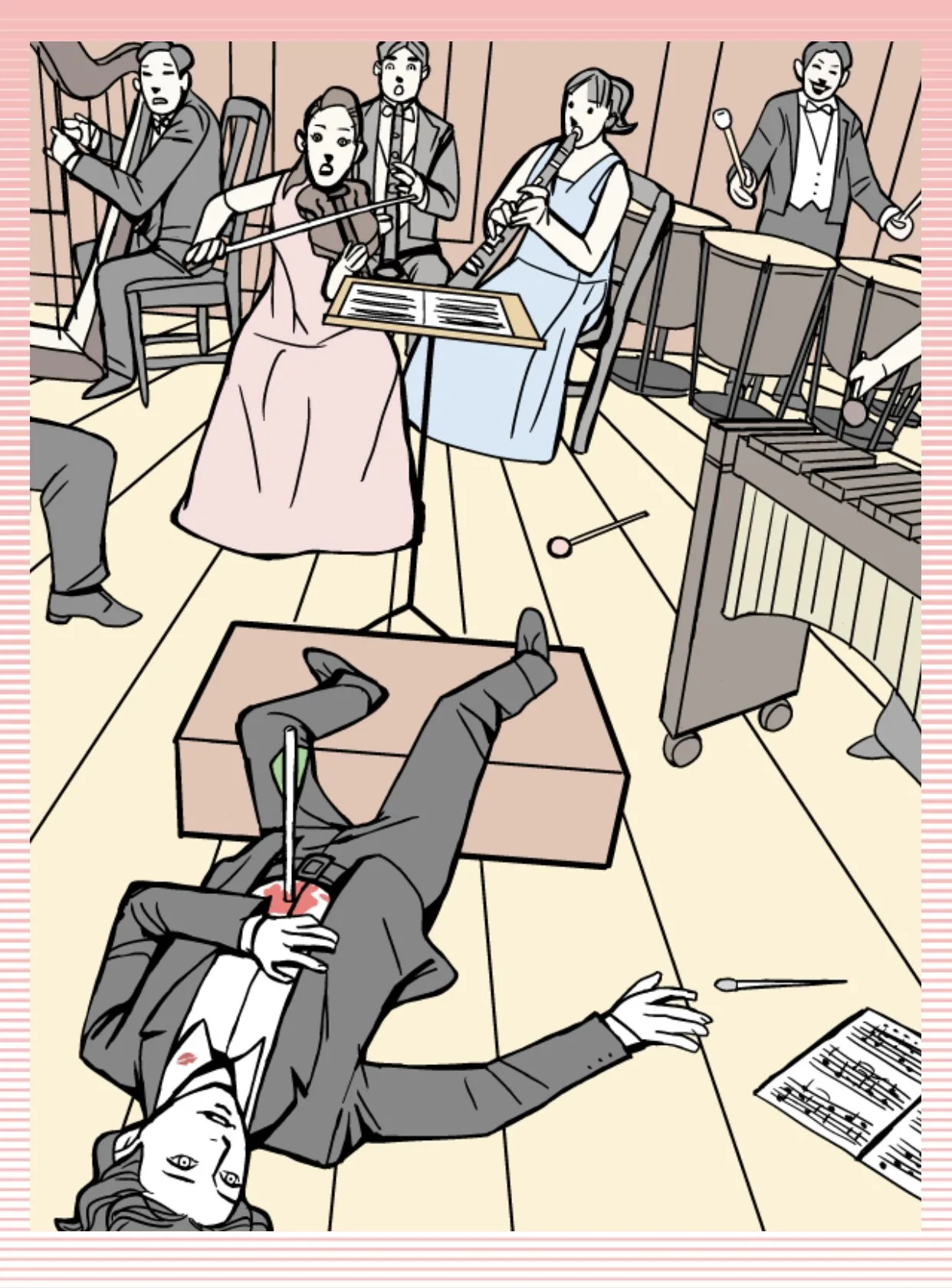
Question 53: The arrow in the chest of the victim made the police suspect the band members because they are all facing the conductor.’
Question 54: The harp player could have shot the arrow by using it as a makeshift bow.
Question 55: The timpanist (drummer) on the right is laughing, indicating that he was the accomplice who distracted the conductor.
Question 56: The conductor was killed due to the lipstick stain on his collar, indicating that he was having an affair.
Stage 15:
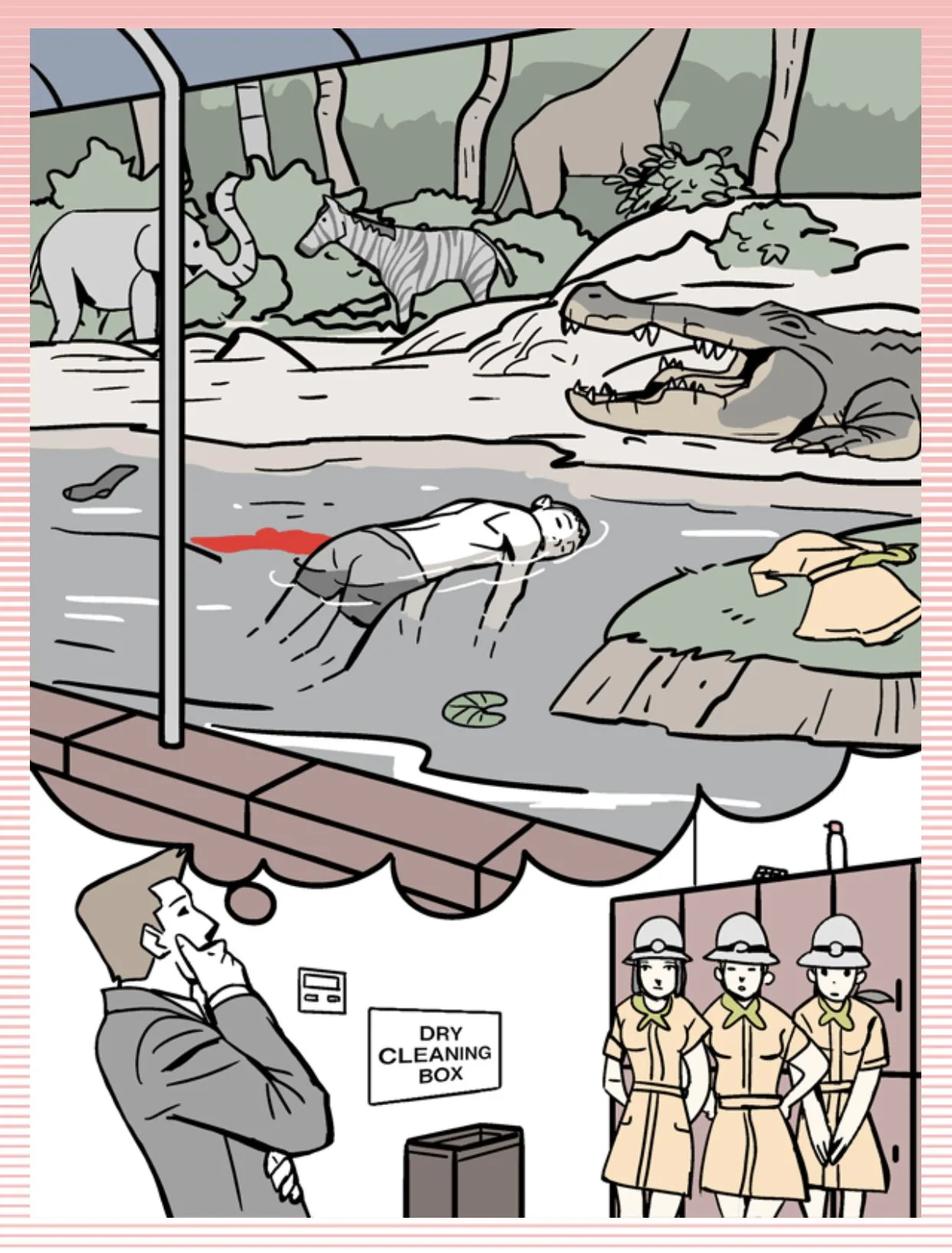
Question 57: The park staff placed the fake alligator to convince visitors that the blast was actually part of the scenery.
Question 58: The dress on the island indicates that someone else was there with the victim as well.
Question 59: The dry cleaning box indicates that an outsider could have grabbed the uniform and stolen it.
Question 60: The blood in the pond is the reason why the assailant had to change out of the dress and steak the clothes of the victim.
Stage 16:
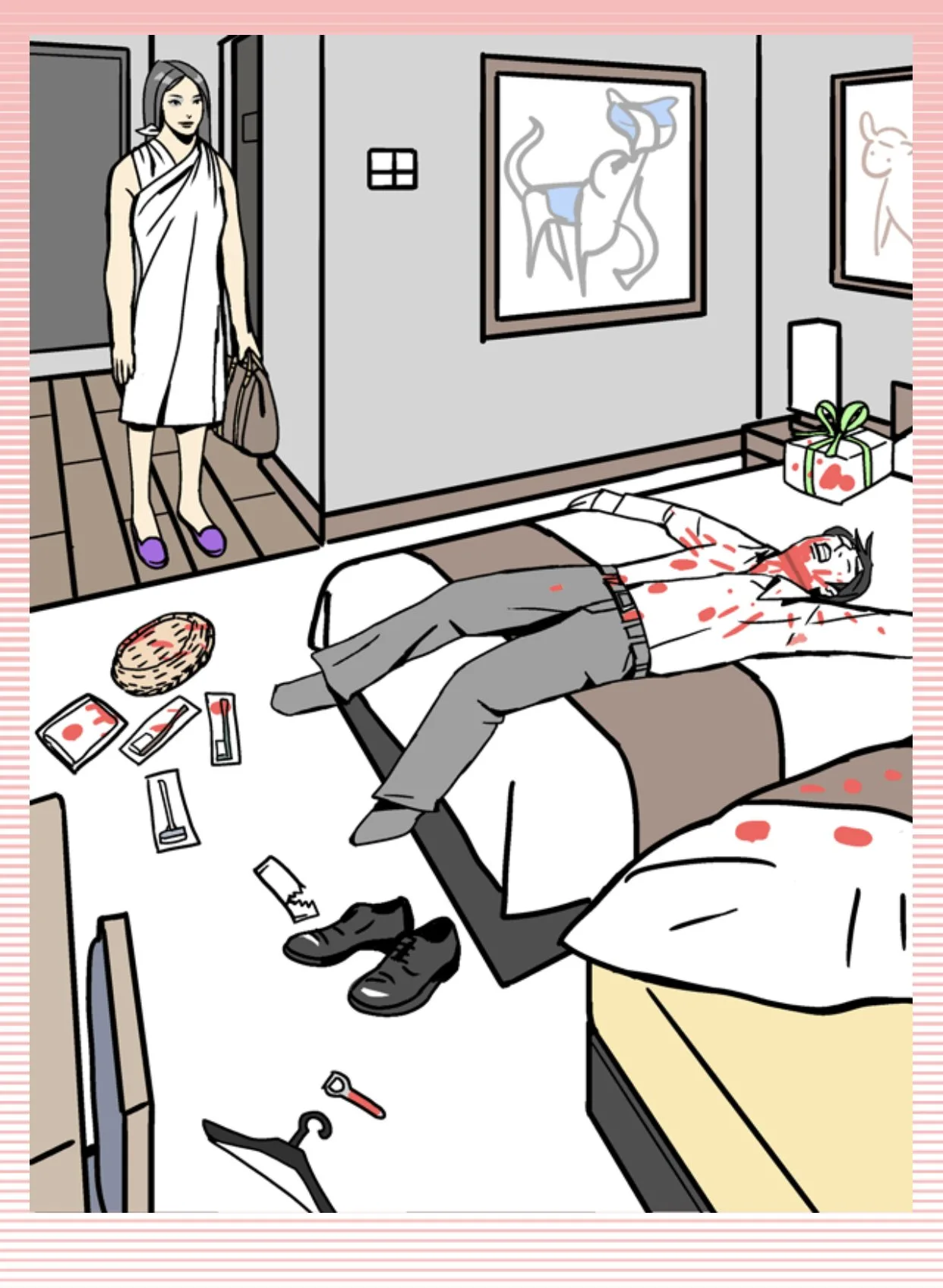
Question 61: The fatal cut to the victim was on the neck, as evidenced by the distance of the splatters.
Question 62: The empty amenity wrapper on the floor indicates that simmering that used to be inside of it was used as the murder weapon.
Question 63: The white dress worn by the woman had no stains on it, making the police think that she didn’t do it.
Question 64: The bed with no sheets on it is the cow to how the woman stayed clean. She wrapped herself in the bedsheets and used them as a makeshift dress.
Stage 17:
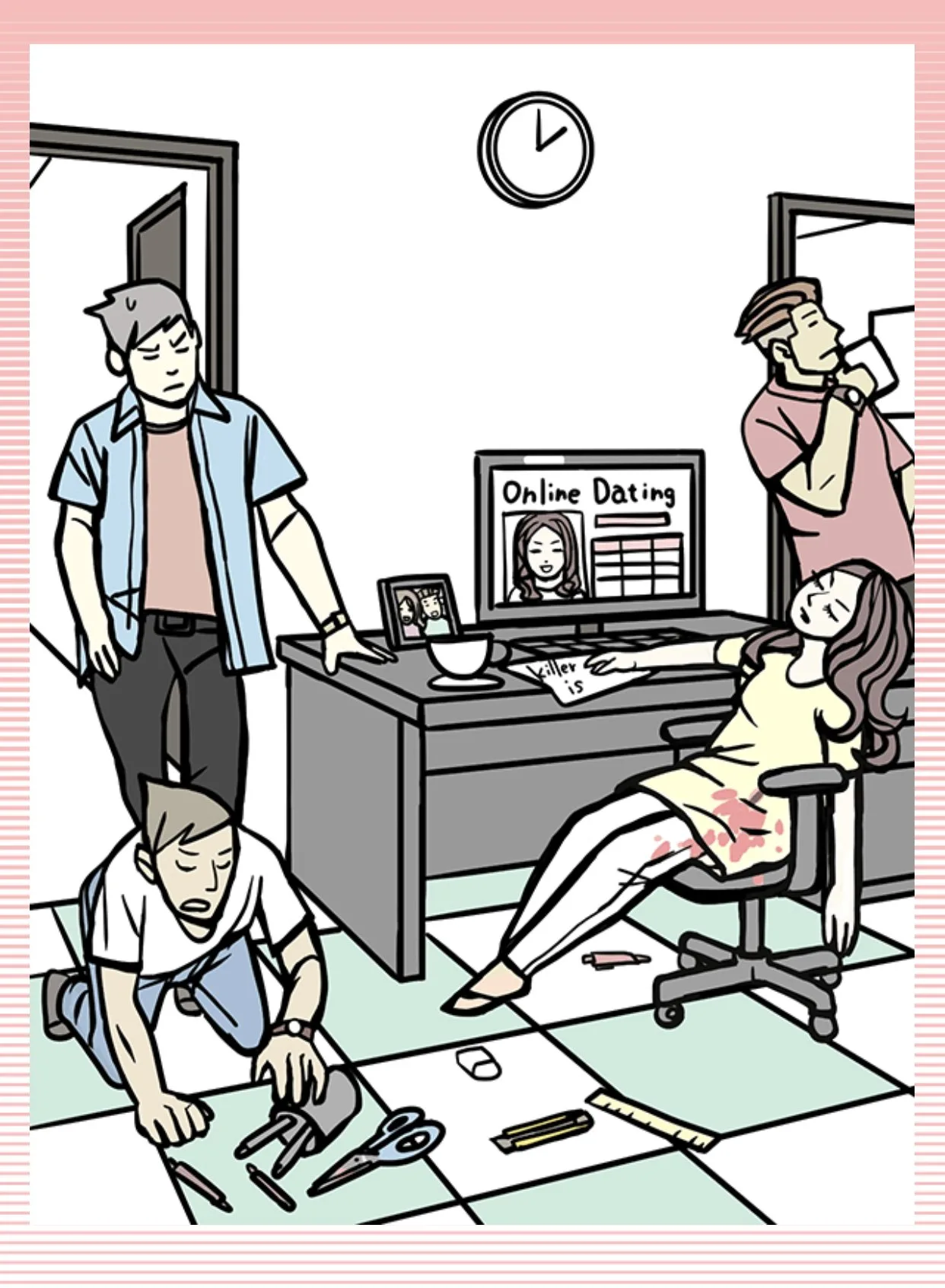
Question 65: The picture of the couple on the desk is the indicator that the couple was intimate before the woman was done in.
Question 66: The pair of left handed scissors on the ground were used as the murder weapon. You can tell by the blood stain on the top.
Question 67: The watch on the hand of the man drinking the coffee indicates that he was left handed, and left handed scissors were the murder weapon.
Question 68: The online dating website on the computer monitor was the indicator of the motive of killer. She was looking for someone else.
Stage 18:
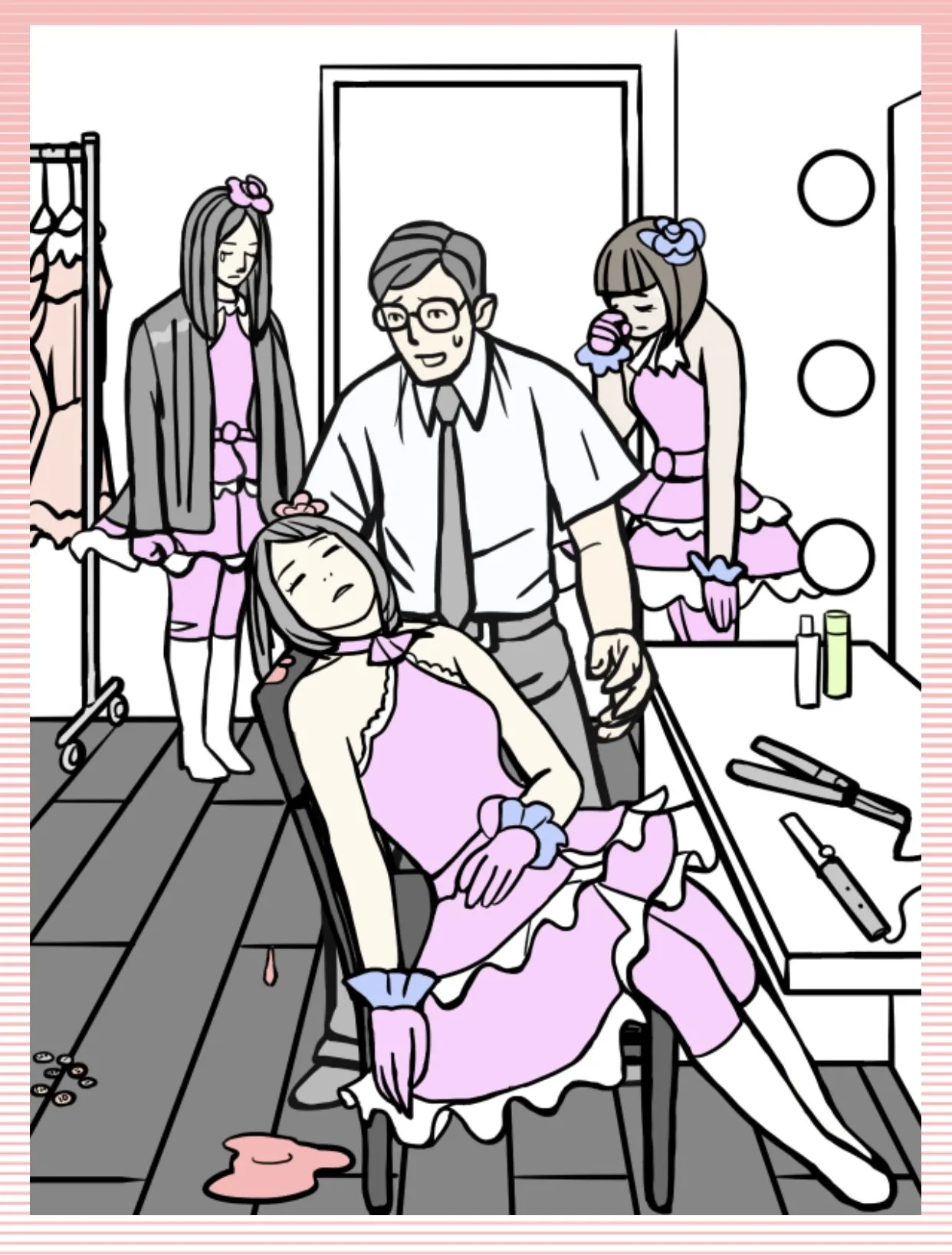
Question 69: The drop of blood in midair in the picture indicates that the crime just happened a moment ago.
Question 70: The coins scattered all over the floor are an indication that something is off with the scene.
Question 71: The girl in the heavy black jacket is the one who is dressed unusually for the scene. Everyone else is in summer clothes.
Question 72: The rip in the girl’s leggings are a sign that they were used in the crime. The leggings were filled with coins and used to hurt the victim.
Stage 19:
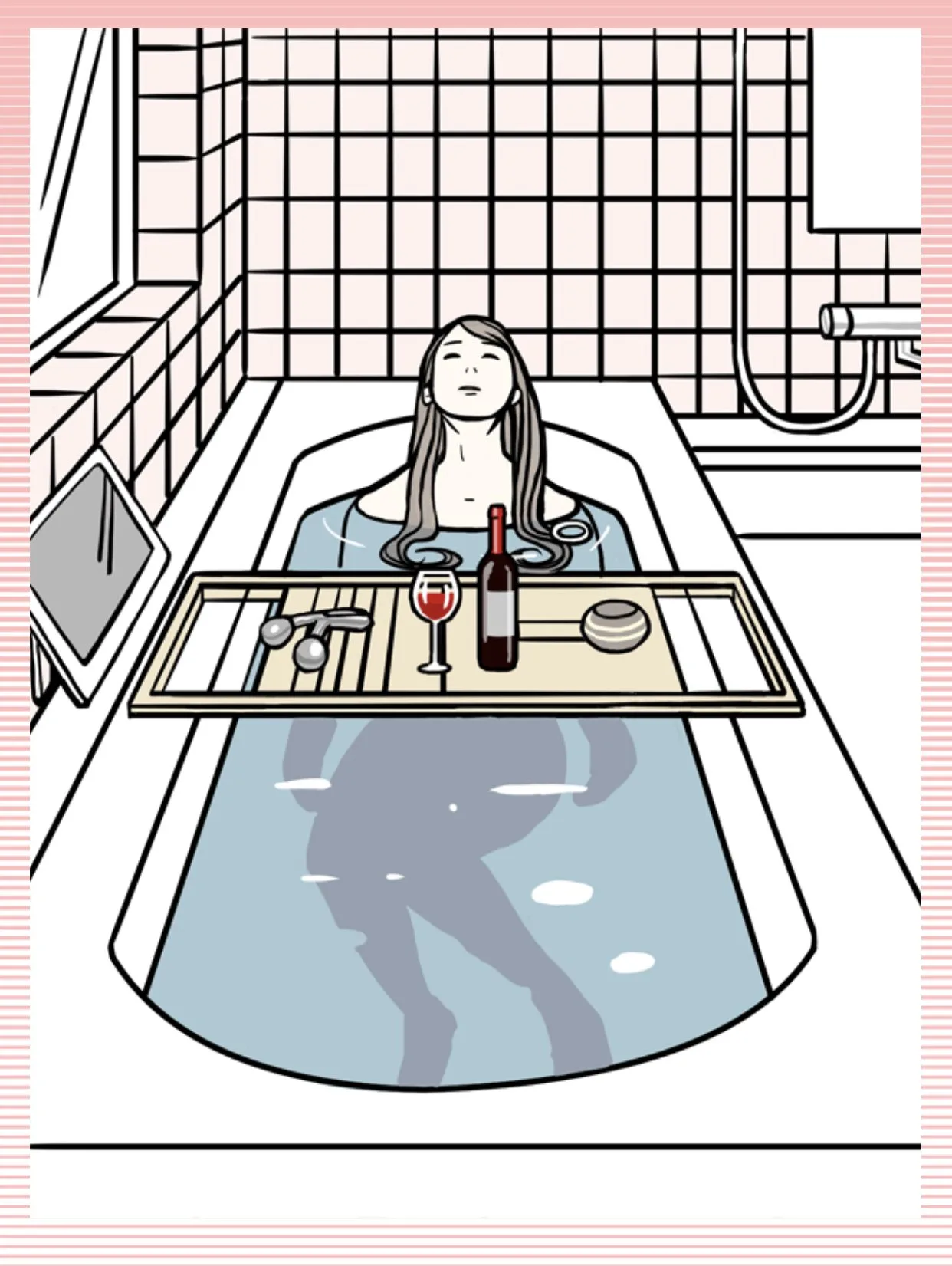
Question 73: The tablet/waterproof television on the side of the tub indicates that the woman spent a long time in the bath.
Question 74: The bottle of wine on the tray is a sign that the women got drunk and drowned in the tub.
Question 75: there is a hair tie floating next to the woman’s hair in the water, indicating that her hair was tied up at the time of death.
Question 76: The head of the victim is still above the water. This indicates that the victim did not actually drown, otherwise her head would still be underwater.
Stage 20:
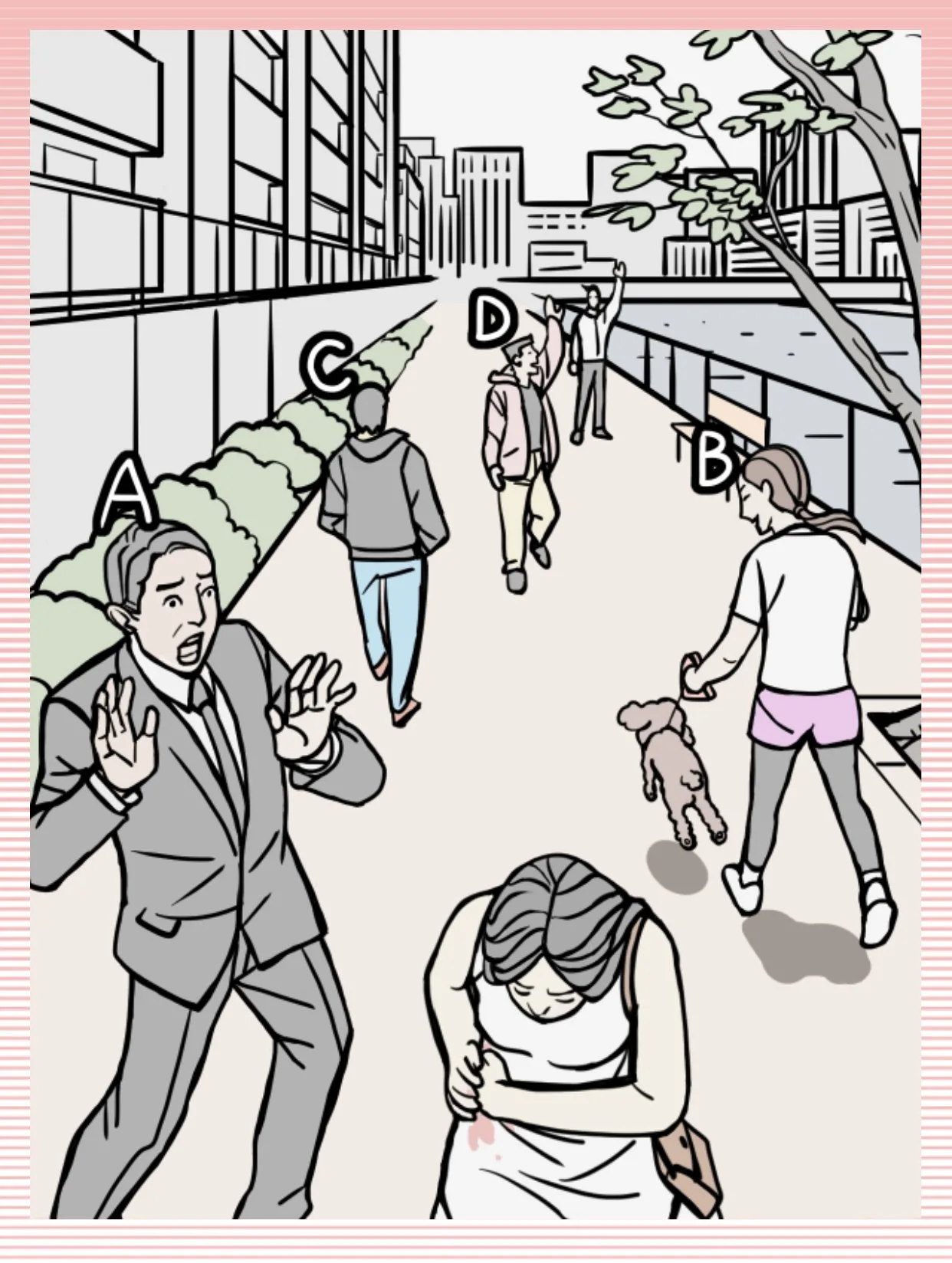
Question 77: The victim was stabbed in the side, where her hands are grasping the wound and where blood appears.
Question 78: A is not the slasher because both of his hands are open and visible and nothing is in them. So he could not have been the assailant. Tap on one of his hands.
Question 79: B is not the slasher because she is walking the dog. The dog is excited, and this would have been harder to control during a stabbing.
Question 80: D didn’t do it because he is turning around and waving to someone. Tap on his hand. C is the assailant.
Stage 21:
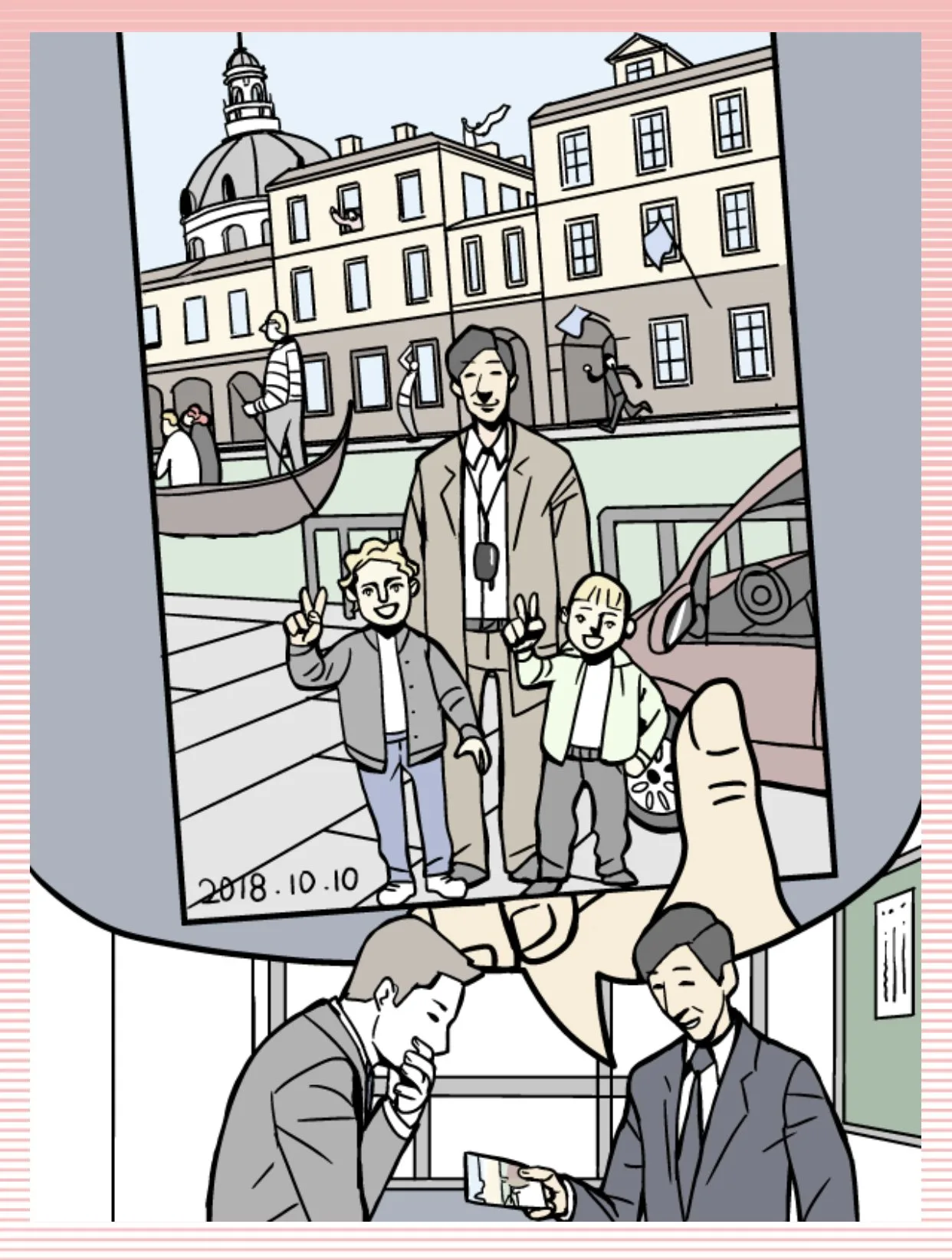
Question 81: The suspect is using Venice as his alibi. The gondola boat in the background shows that the picture was actually taken in Venice, which is famous for its gondolas.
Question 82: The time stamp on the picture is the indicator that the picture was taken in Venice like the suspect says it was.
Question 83: The car it’s what makes the photo suspicious. Cars are outlawed in the city of Venice.
Question 84: The wasp at the top of the picture is the indicator that the death was neither a murder nor a suicide.
Stage 22:
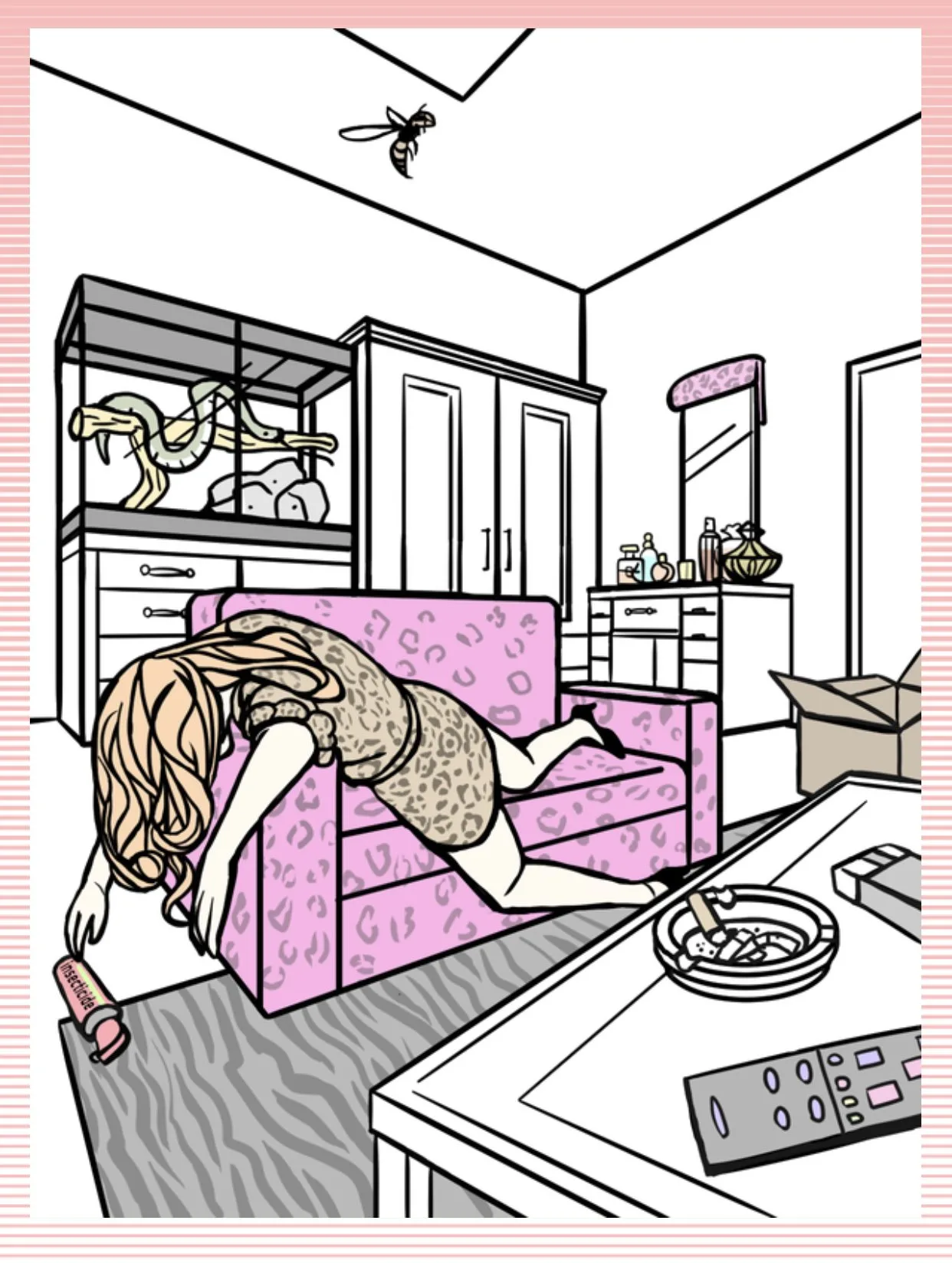
Question 85: She has insecticide in her hands, which indicates that she was fighting the wasp until her death.
Question 86: The collection of perfumes on her desk is the indicator of what caused the wasp to sting the woman.
Question 87: The open package next to the table is where the wasp came from. There is no other possible explanation, such as open windows.
Question 88: The source of the noise was the hole in the jewelry case, due to the timer smashing it open with a hammer.
Stage 23:
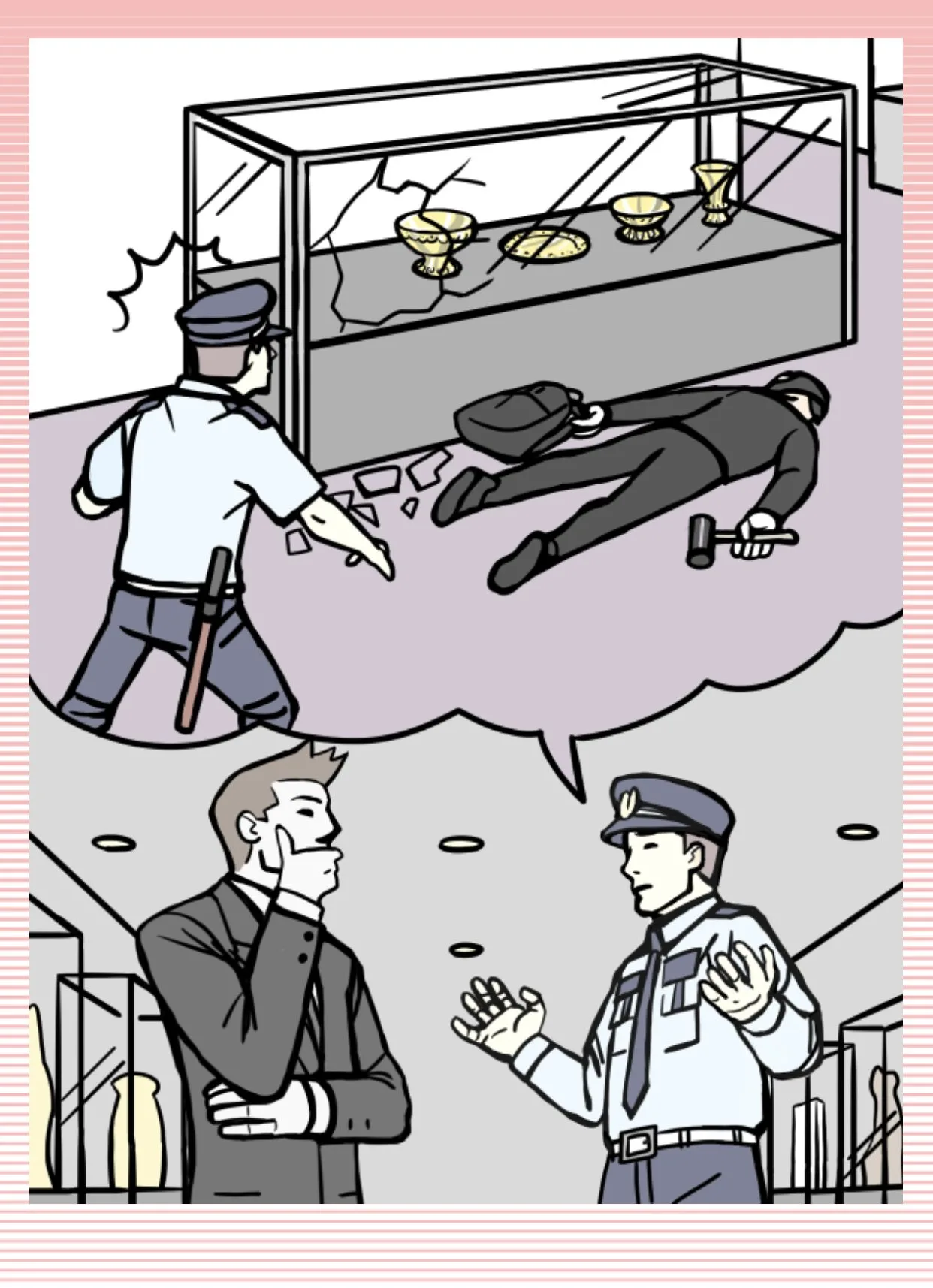
Question 89: The thief broke into the jewelry case using the hammer that is still in his hand even after he died.
Question 90: look closely at the thief’s heart. There is a dent in it. His ski mask is also cockeyed, providing another hint.
Question 91: The billy club on the cop’s waistband is what killed the robber. The only other thing it could have been was the hammer, which it wasn’t because that is what the robber was holding.
Question 92: The vase was the murder weapon, as evidenced by how broken it is and the flowers on the ground.
Stage 24:
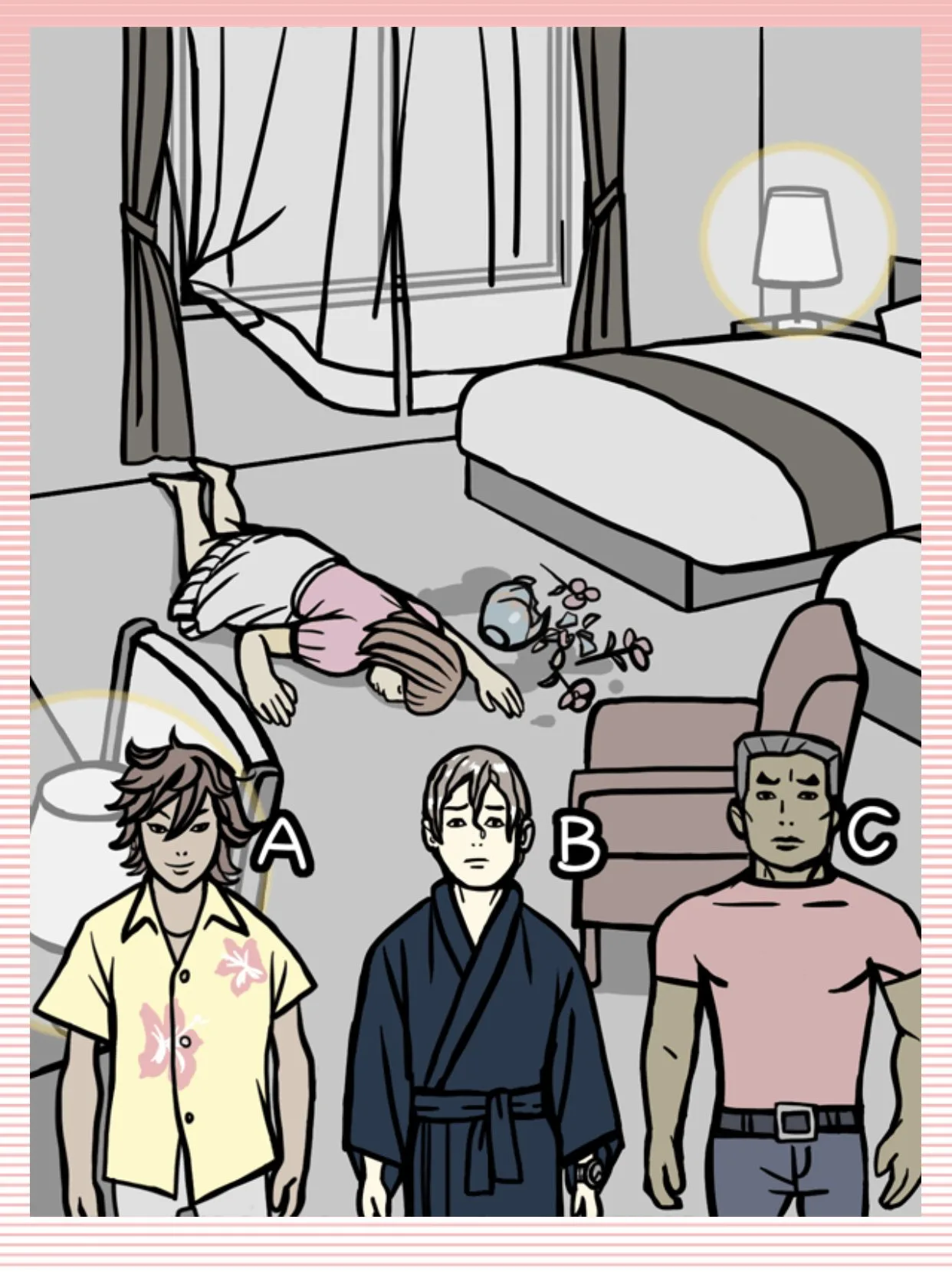
Question 93: The curtain being stuck in the window on the left side indicates that the assailant fled through the window.
Question 94: Suspect B is the suspicious one because the bathrobe enables him to lie about why he is wet.
Question 95: The watch on suspect B’s arm is what makes him suspicious. He couldn’t have taken a bath or a shower with the watch on.
Stage 25:
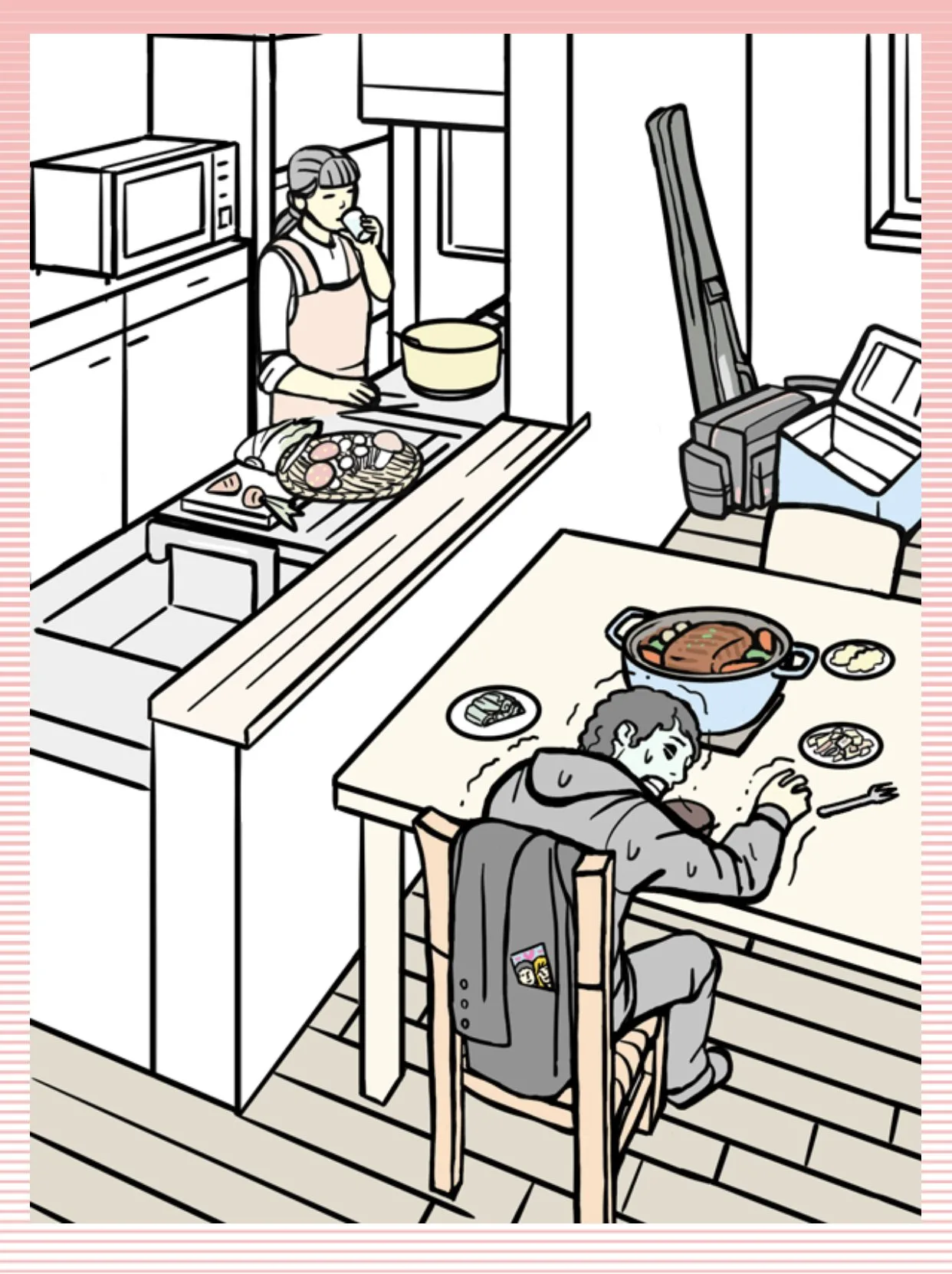
Question 96: The meat inside of the pot is the dish that caused the husband to fall ill.
Question 97: The mushroom on the cutting board is the ingredient that killed the husband. Mushrooms can often be poisonous.
Question 98: The empty cooler next to the husband is the cow that he is the one who brought back the mushrooms, because he failed at fishing.
Question 99: The picture in the jacket of the husband is him with another woman besides his wife, indicating her motive for knocking him off.
Stage 26:
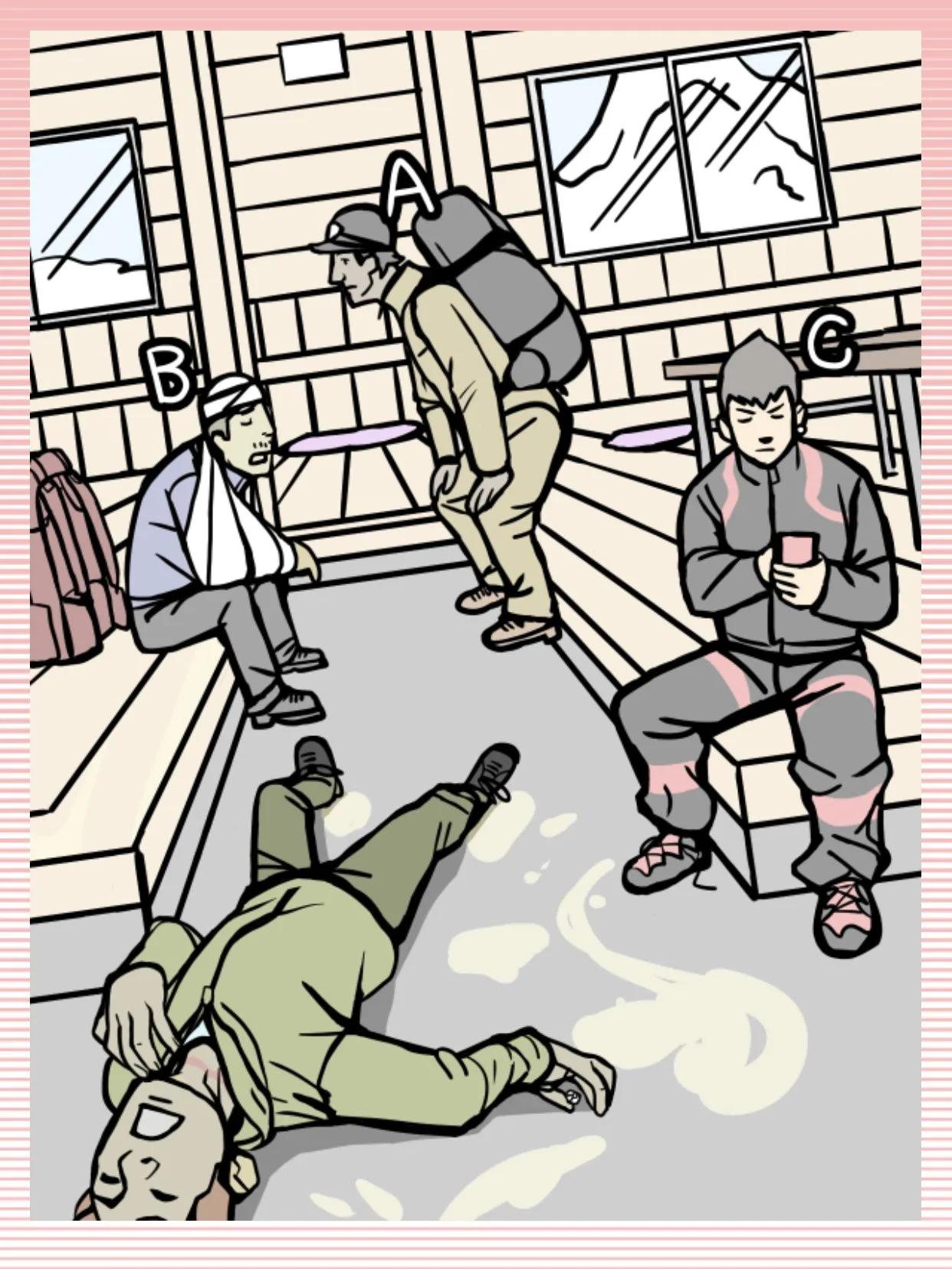
Question 100: The red mark on the neck of the victim indicates that he was strangled.
Question 101: B could not have been the murderer because he has a cast on one of his arms.
Question 102: The earring in the hand of the victim is a clue as to who could be the murderer.
Question 103: The shoelace hanging off of C’s boot is the indicator that he was the killer.
Stage 27:
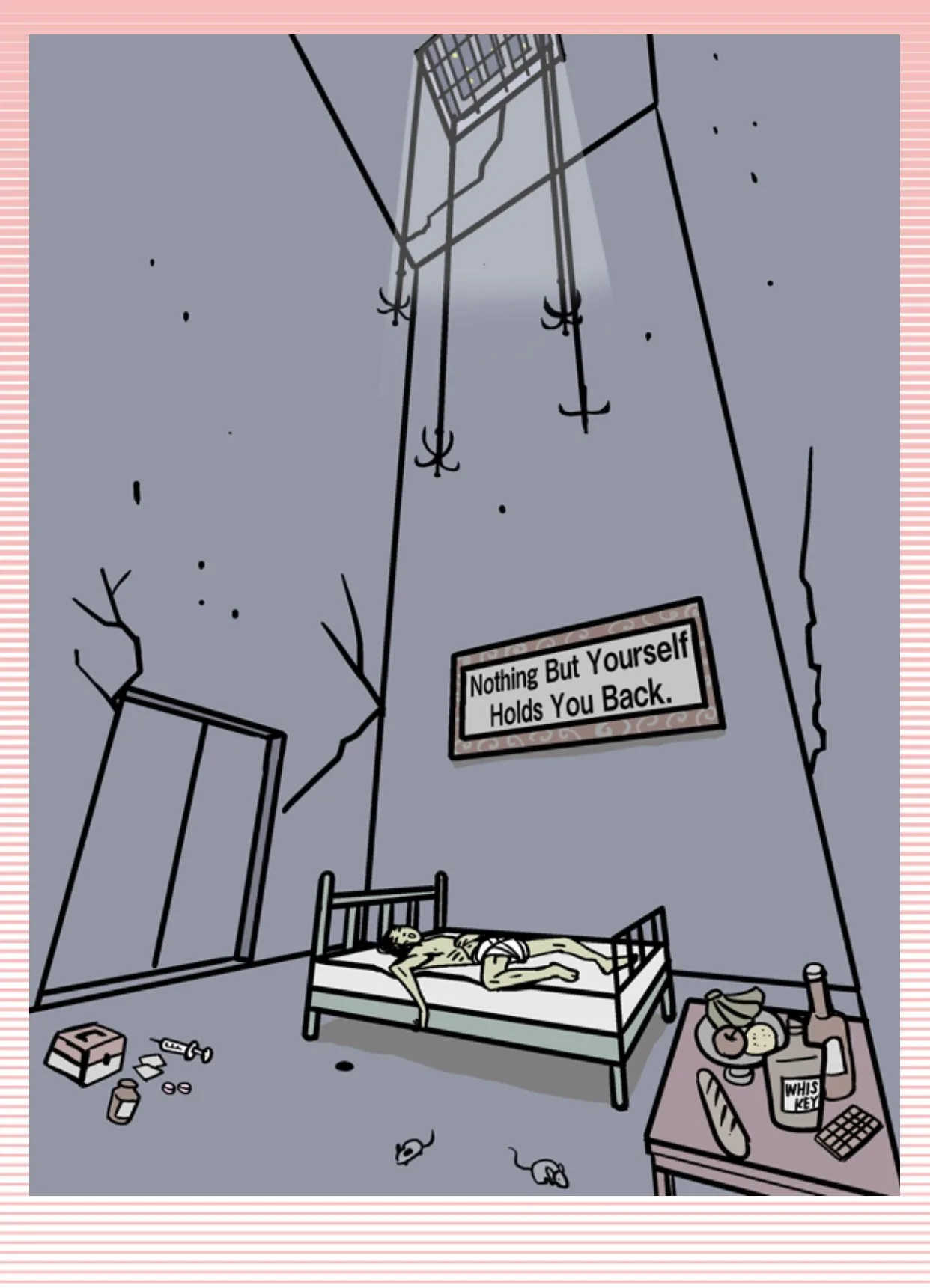
Question 104: The fruit on the table makes police think that the yoga master didn’t starve himself to death.
Question 105: The bed post mark on the floor indicates that the bed had been moved, due to showing the bed’s original location
Question 106: The window on the ceiling is open, making that the clue in this situation.
Question 107: The hooks hanging from the window indicate the sons’ involvement. They lifted the yoga masters’ bed causing him to die of starvation.
Stage 28:
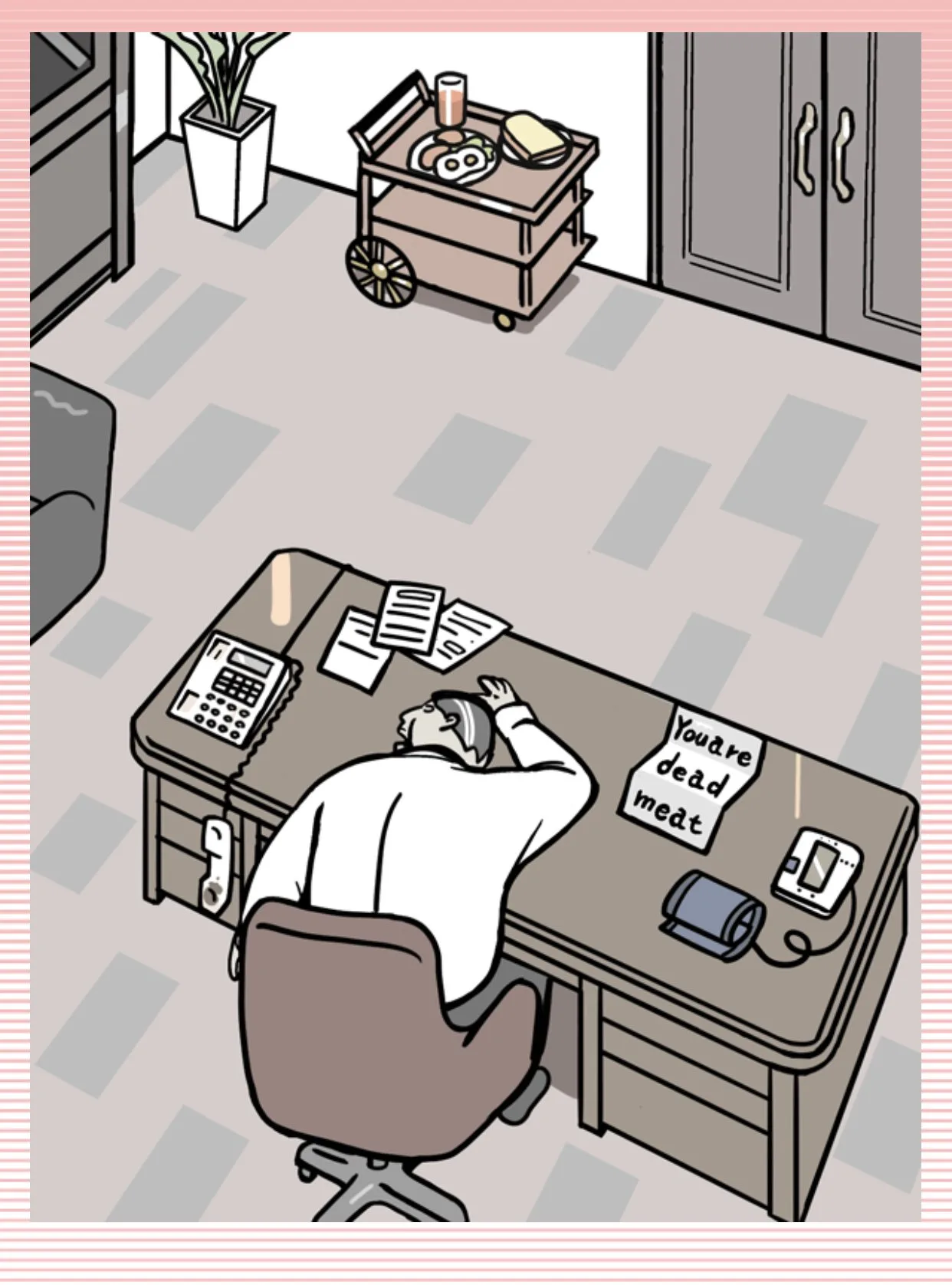
Question 108: The breakfast cart in the corner of the room indicates the time of death for the CEO.
Question 109: The note on the victim’s desk says “you are dead meat”, making this the clue.
Question 110: The blood pressure cuff on the desk of the victim indicates that he has a weak heart.
Question 111: Notice that the phone receiver was partially burnt. That indicates a bomb being placed inside of the phone.
Stage 29:
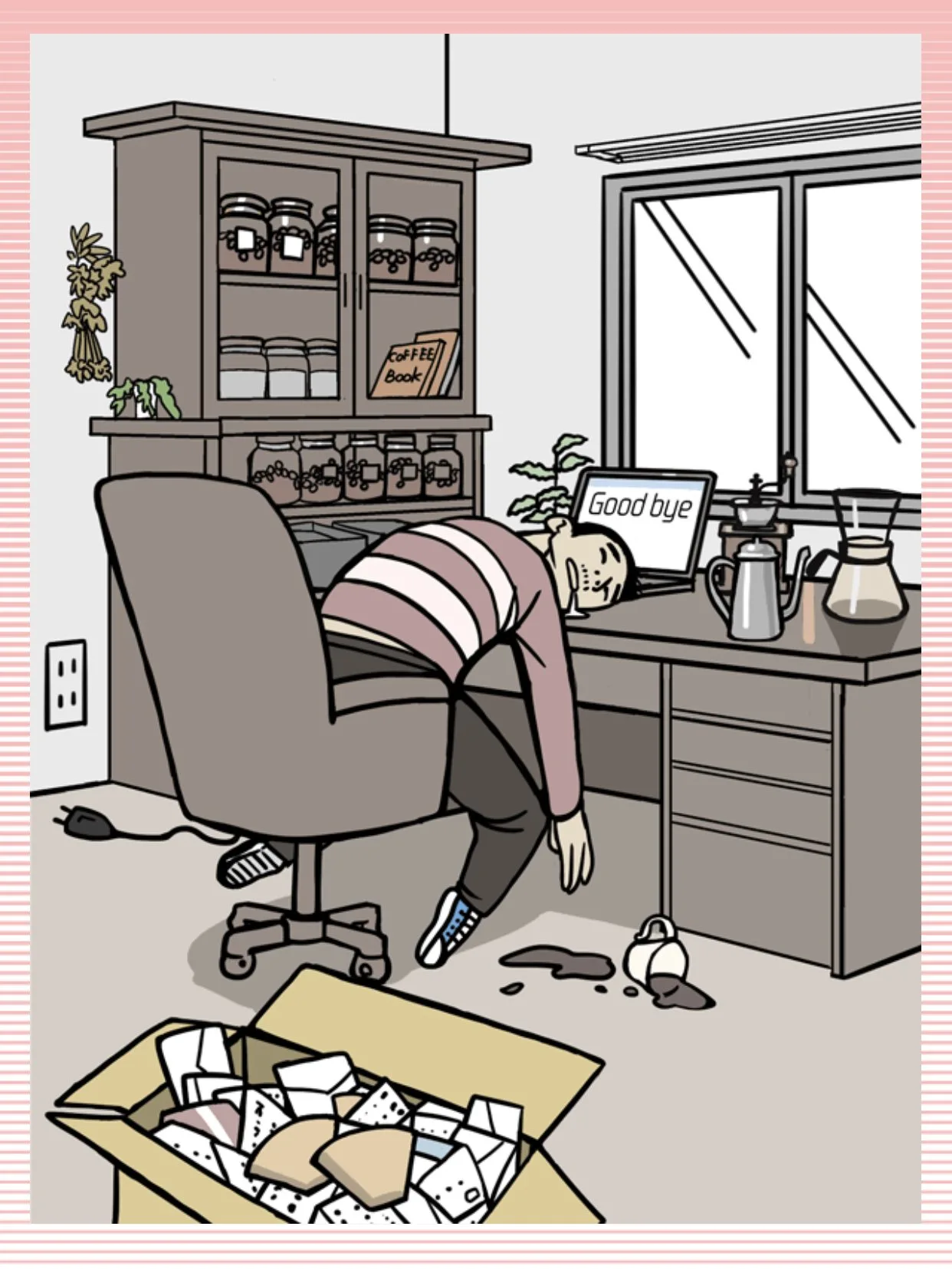
Question 112: The poison got into the writer’s system by the coffee that he was drinking.
Question 113: The editor thought it was a suicide due to the fact that the laptop said “goodbye” on the screen.
Question 114: The cord from the laptop is unplugged meaning that the victim could not have written that note.
Question 115: The poison came from inside of the box that is filled with fan letters and coffee filters.
Stage 30:
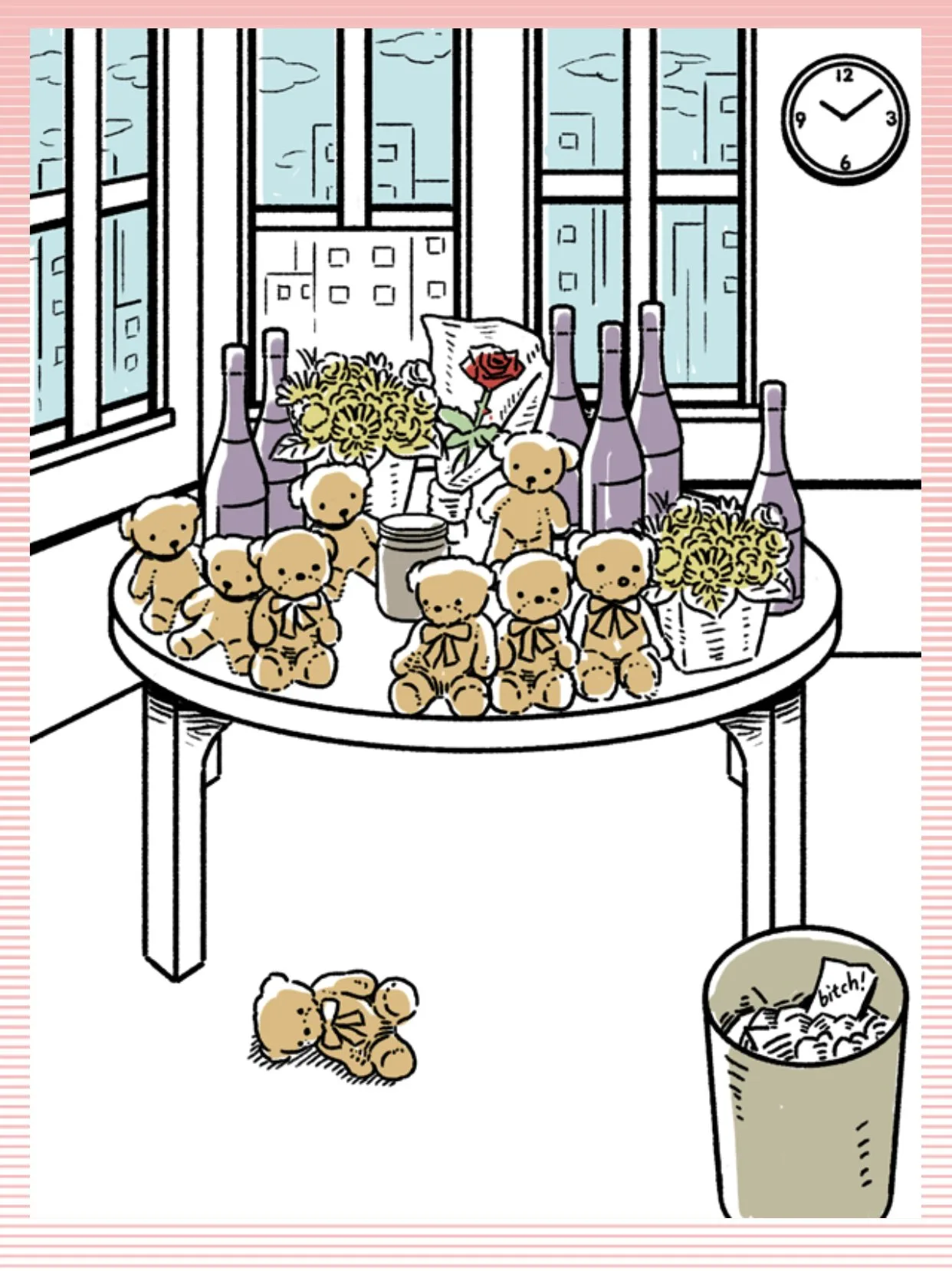
Question 116: The sheer number of teddy bears, drink bottles, and flowers on the table show how popular the singer was and still is.
Question 117: The small cuts on her fingers came from the rose. The rose’s turns are what caused the cut.
Question 118: The rose was thrown in through the open window, and knocked the teddy bear off of the table.
Question 119: The crazy fan made the sooner touch the rose by attaching the note in the trash can to it.
Stage 31:
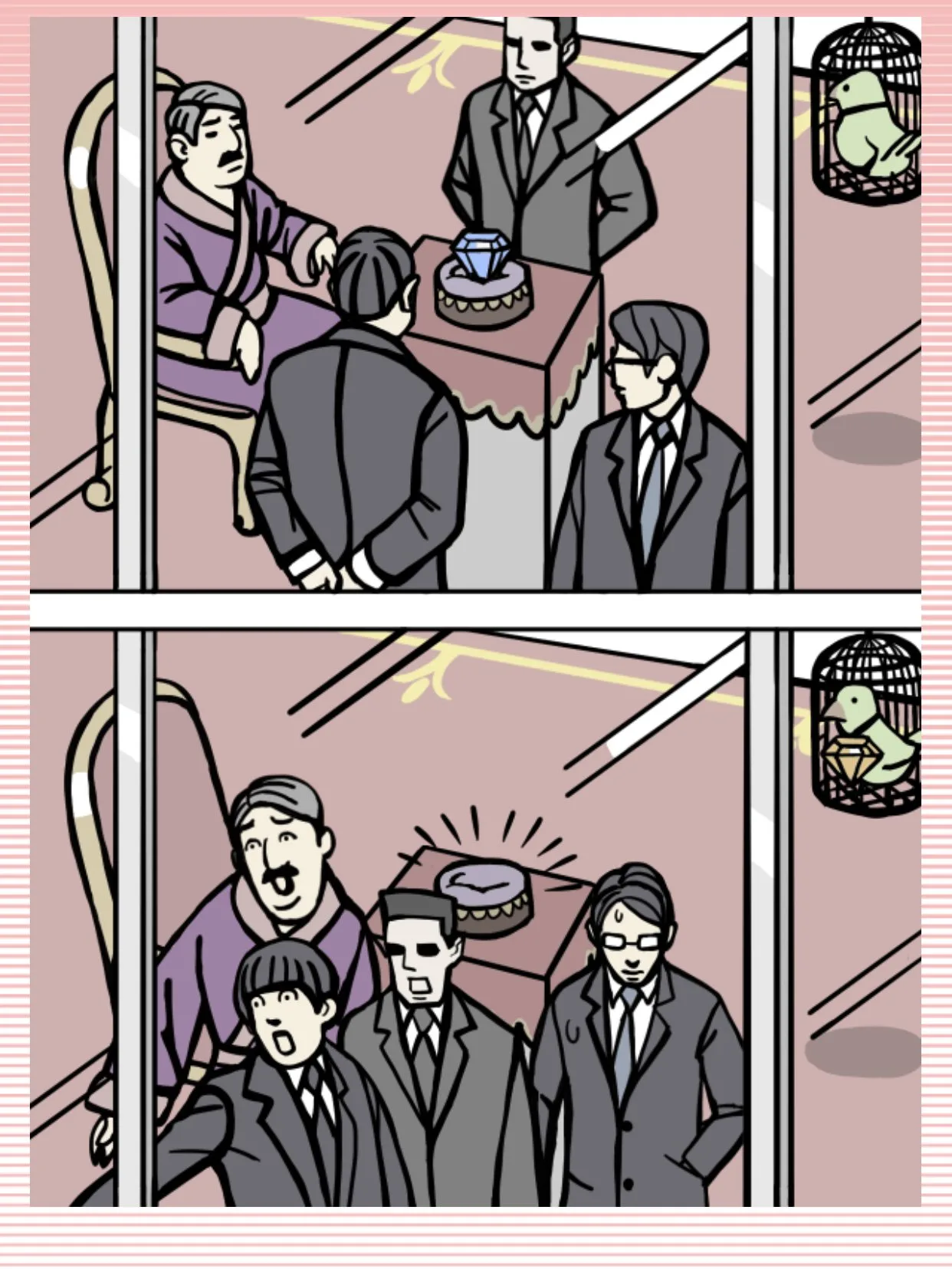
Question 120: The rich man in the top picture is the one sitting in a chair and wearing a purple robe.
Question 121: The man with his hand in his pocket in the bottom picture is the one who stole the diamond.
Question 122: The security guard in the top of the top picture with his hands behind his back is the one who helped steal it.
Question 123: The real diamond is inside the bird cage in the bottom picture under the wing of the bird.
Stage 32:
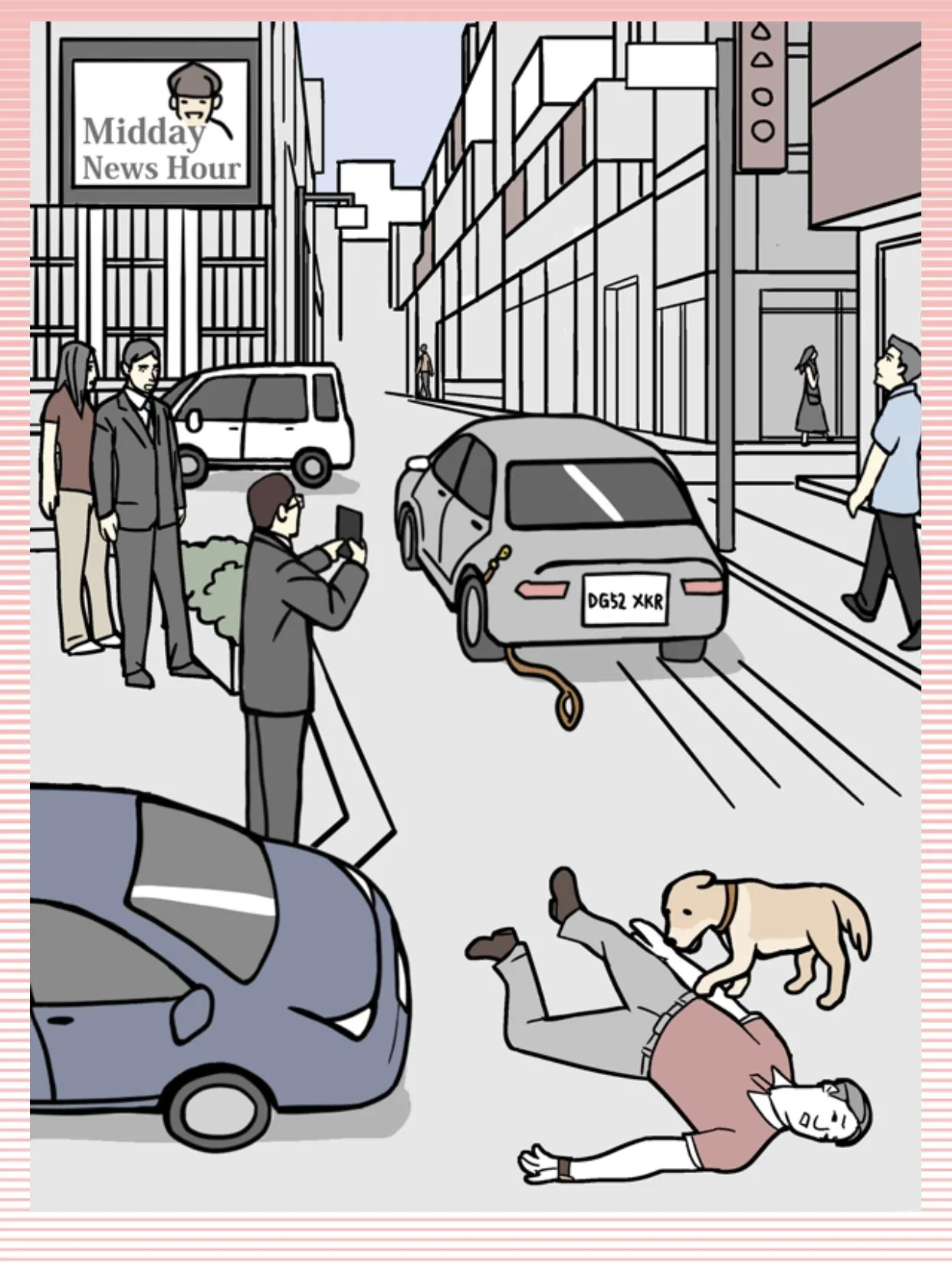
Question 124: The gray car with the dog leash under the wheel is the one that was involved in the crash.
Question 125: The word “midday” on the sign indicates that the time that the crash happened was midday.
Question 126: The man holding the phone recorded the entire incident, which will make it easy to catch the culprit.
Question 127: The people who were around when the crash happened were paying too much attention to the license place on the car.
Stage 33:
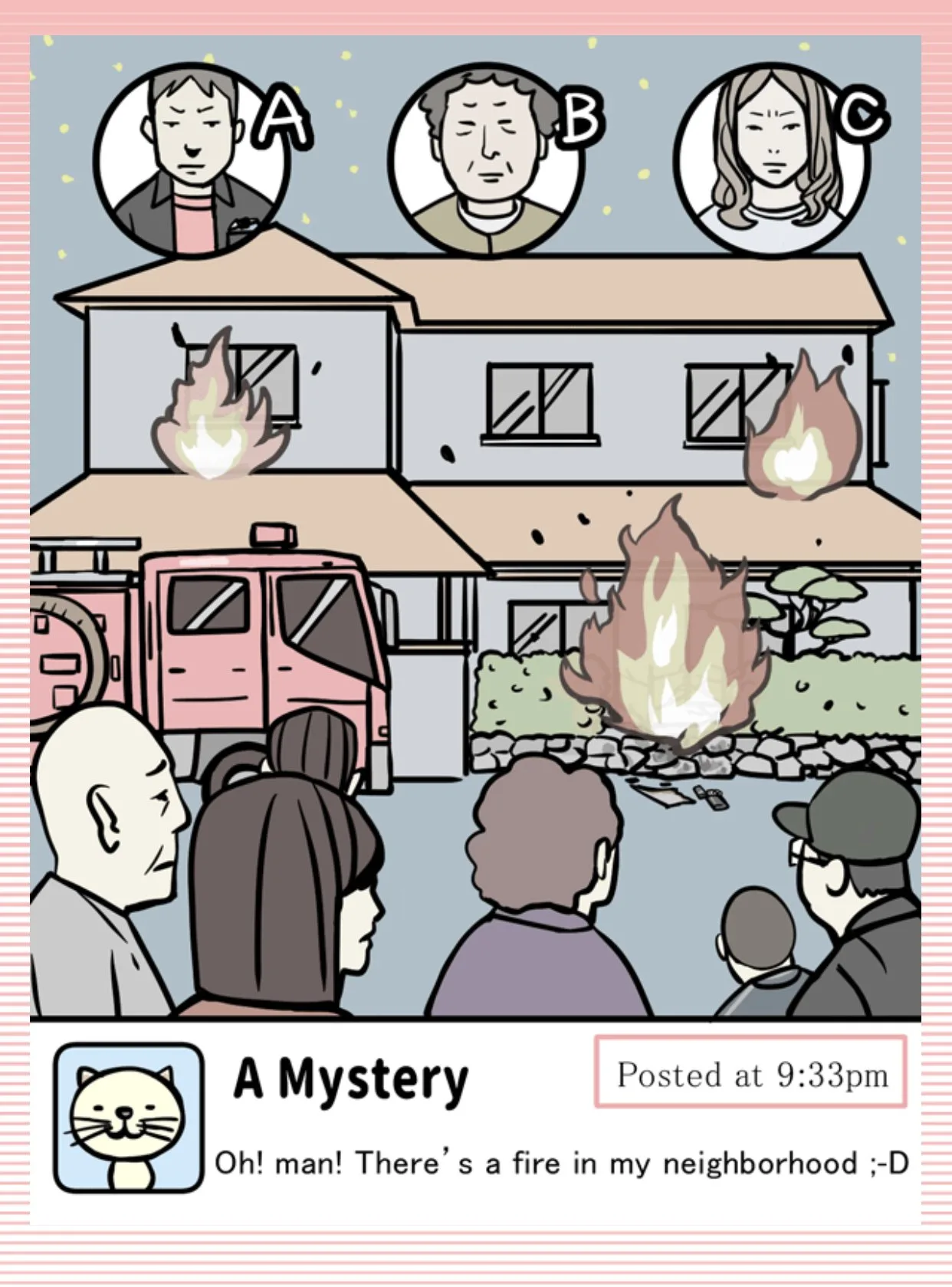
Question 128: The Bush outside of the house is where the biggest fire is, which wouldn’t be the case if the fire was an accident. That shows that the fire is arson.
Question 129: The lighter and bits of newspaper next to the bush were used to start the fire.
Question 130: Suspect A is the suspect because he is carrying cigarettes on him, so he would have a lighter.
Question 131: The timestamp on the suspect’s post indicates that he was the one who set the fire.
Stage 34:
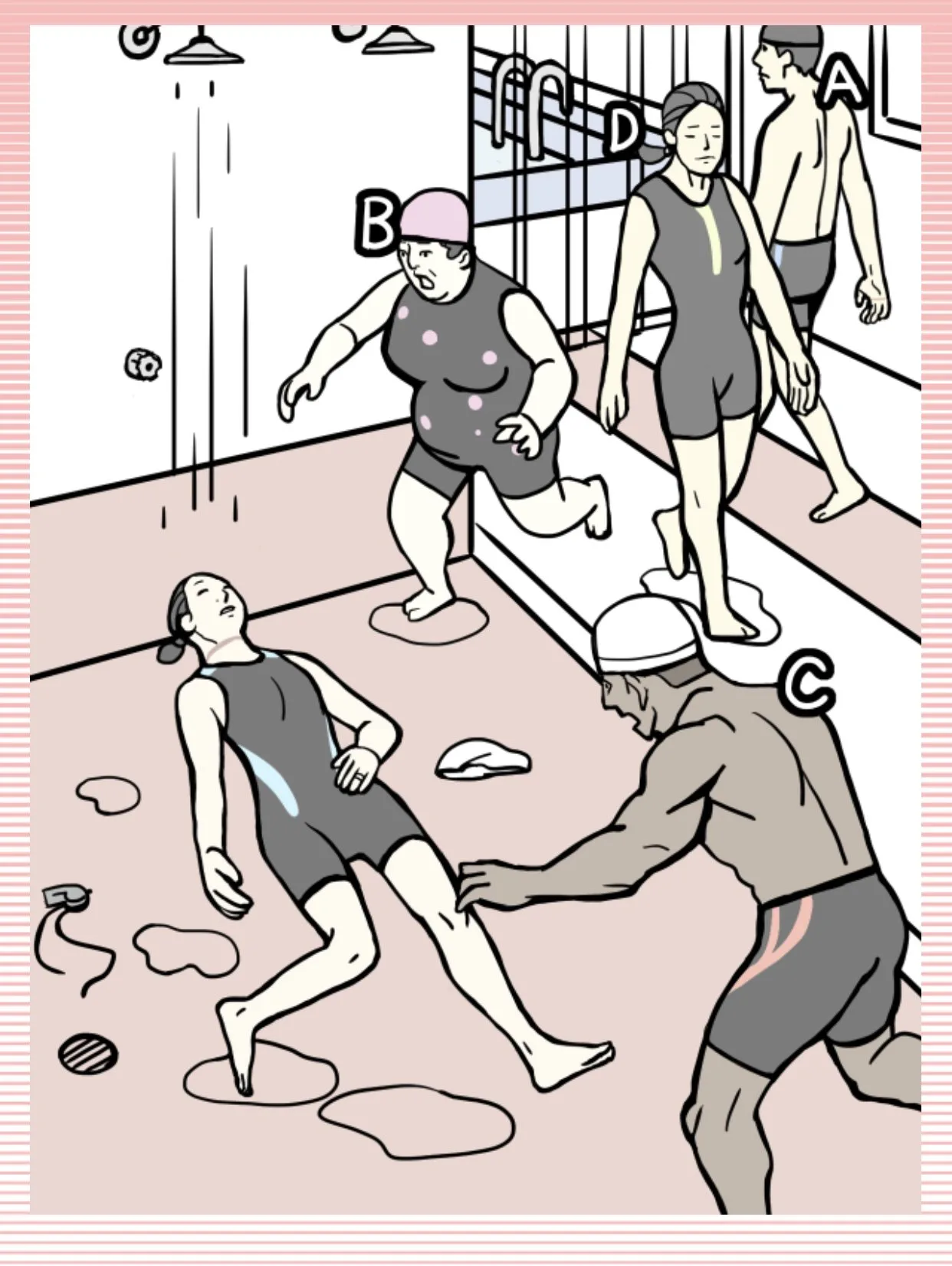
Question 132: The red mark on the neck of the victim indicates that she died because she was strangled.
Question 133: The whistle with a broken strap was used to kill her, since she was wearing it before she died.
Question 134: suspect A has a thin red line on his palm, indicating that he is most likely to have been the assailant.
Question 135: The victim rejected A because she was engaged, hence the ring on her finger.
Stage 35:
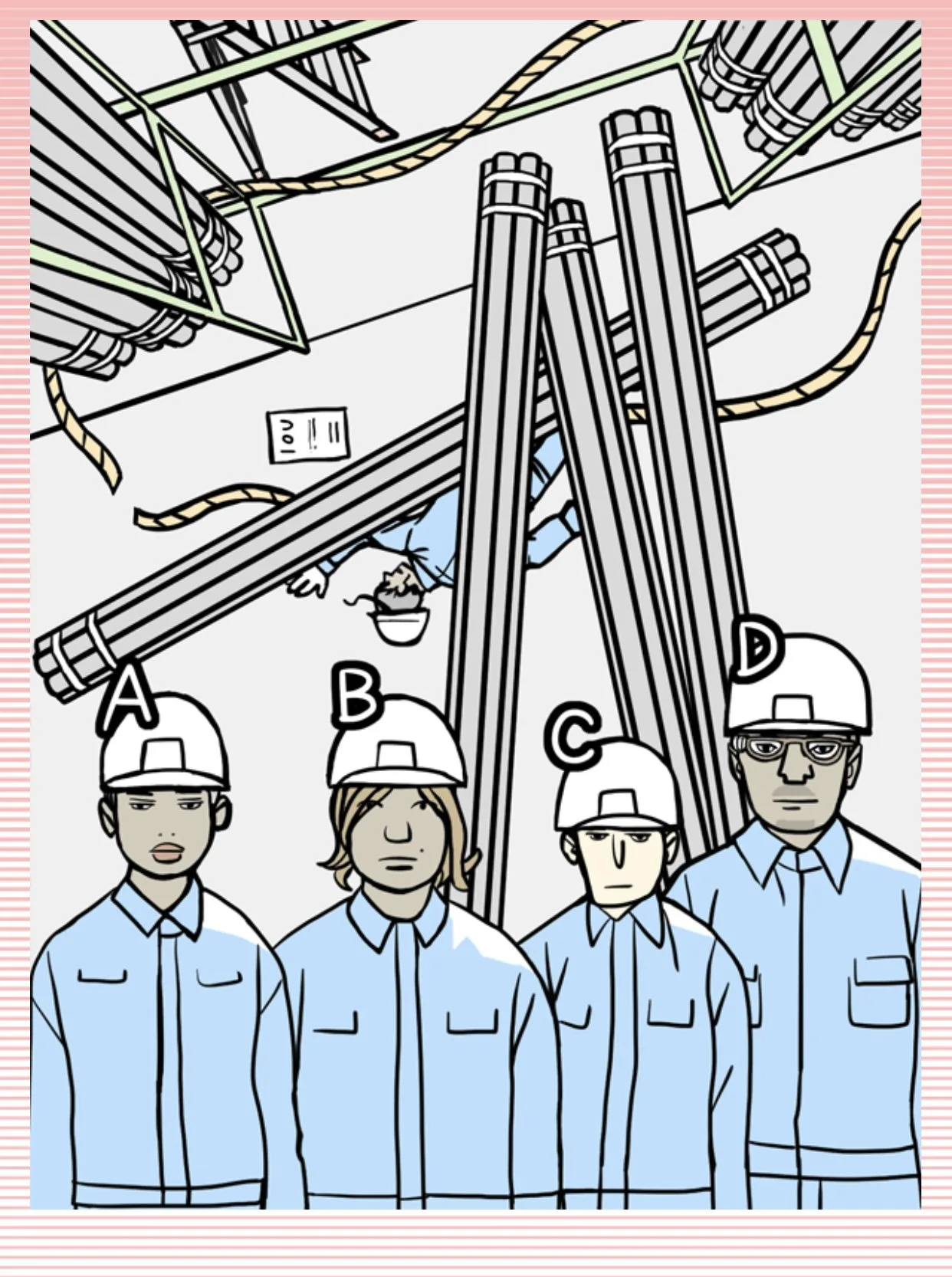
Question 136: You can tell that the construction incident wasn’t an accident because the rope was cut cleanly, as there are no rough edges.
Question 137: C is the one who usually works in the storage area. You can tell because he has no tan.
Question 138: The victim had a fight with D. You can tell because his glasses have been trapped together in the middle because they broke in the fight.
Question 139: The IOU on the ground was evidenced that D borrowed money from the victim. The fact that he could not pay it back is what led to the fight.
Stage 36:
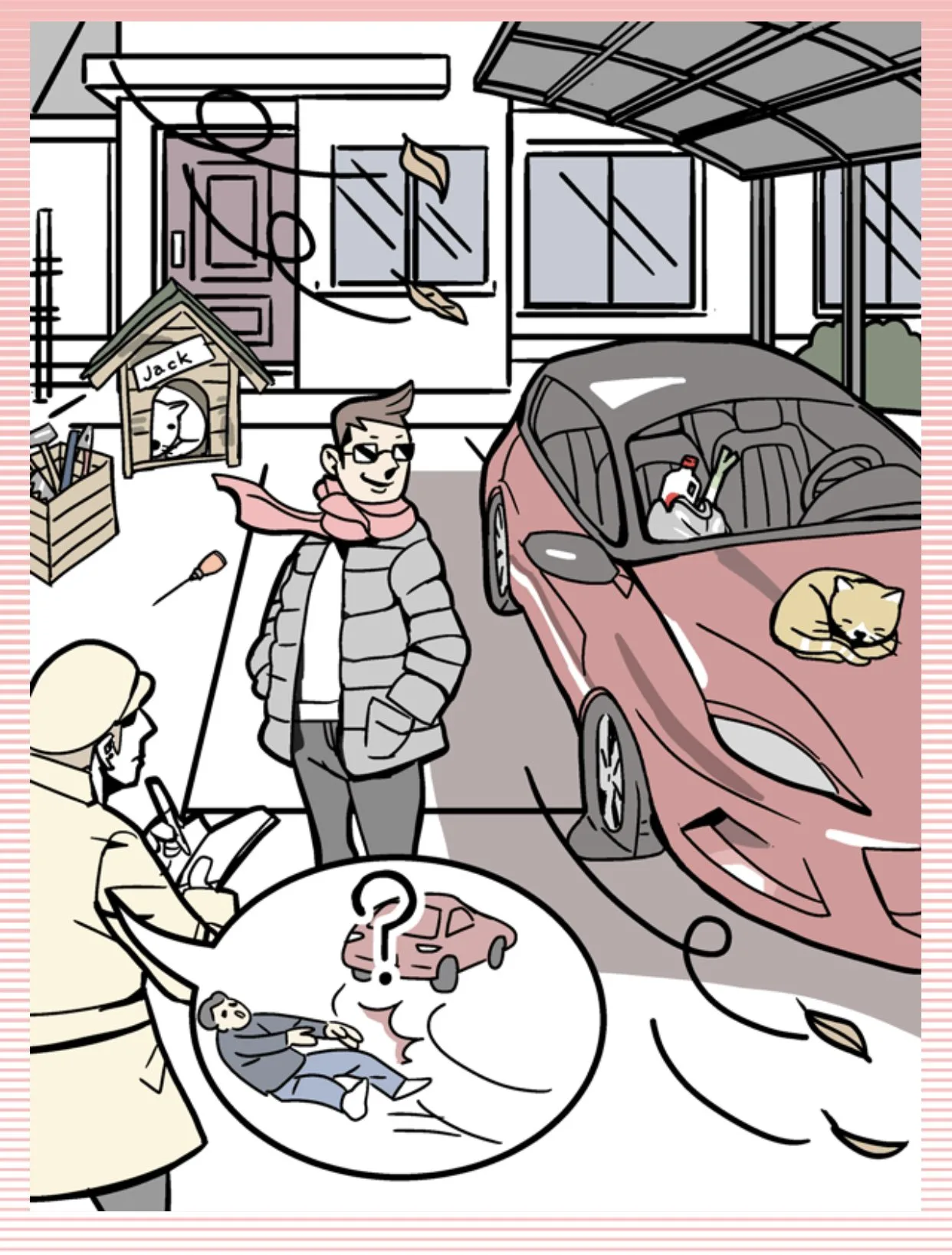
Question 140: The bright red sports car is a rare sight in a town of 500 people, which is what made it easy to track down the assailant.
Question 141: The bag full of groceries on the passenger seat of the car indicates that the driver went out on the same day that the incident happened.
Question 142: The assailant was lying about building the dog house because the hammer plate was falling off. If it were just built, it would not be falling off already.
Question 143: The mark on the top of the roof of the car is what proves that the suspect must have been lying.
Stage 37:
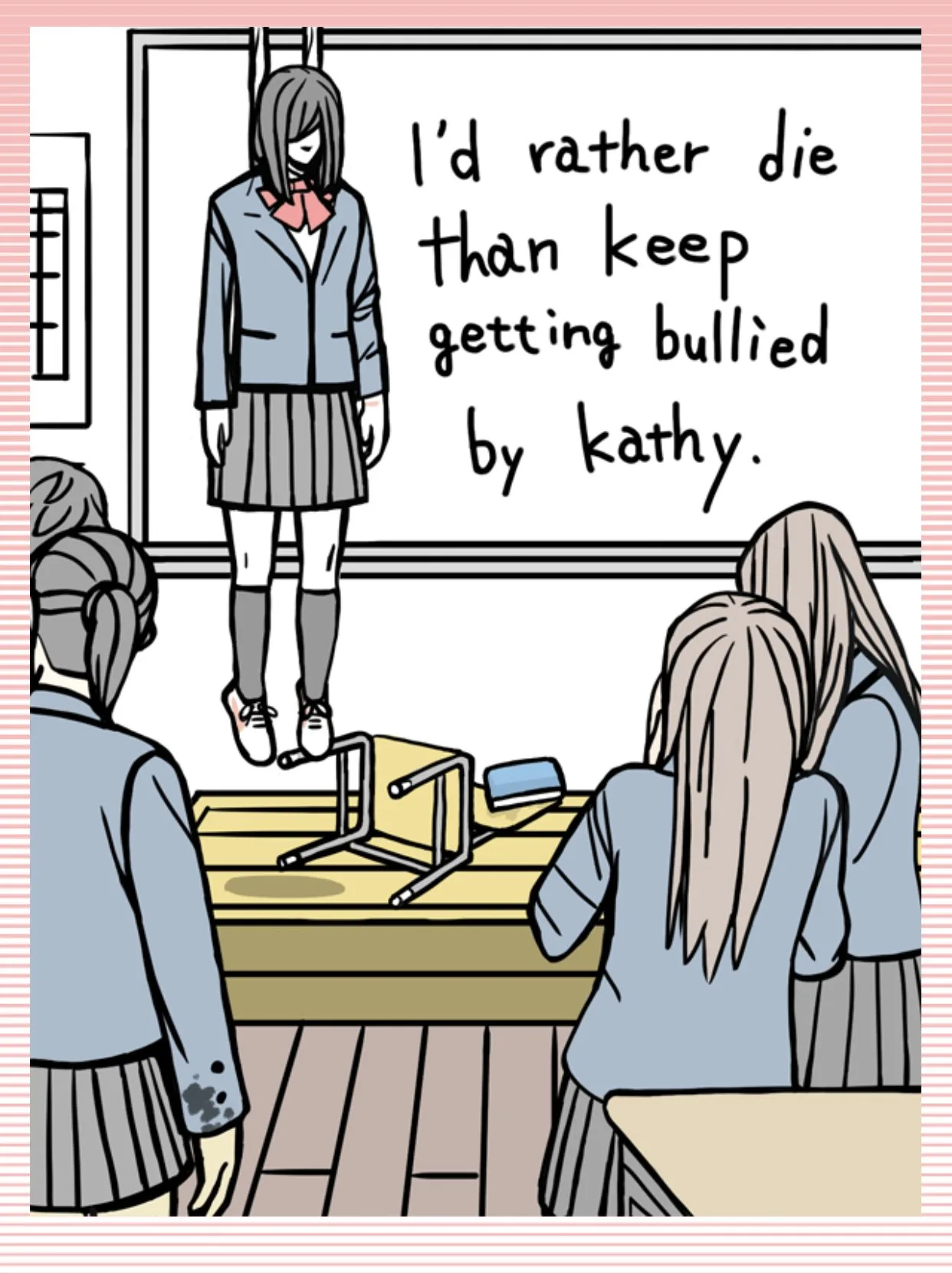
Question 144: The suicide note was worn on the whiteboard. She ended it all because she was being bullied.
Question 145: The board eraser on the back of the chair is a clue as to what really happened.
Question 146: there is a scar on the wrist of the victim which suggests that she has attempted to end it all before this incident.
Question 147: one student had pen marks on the sleeve of her uniform, which indicates that she had used a marker to tamper with the suicide note.
Stage 38:
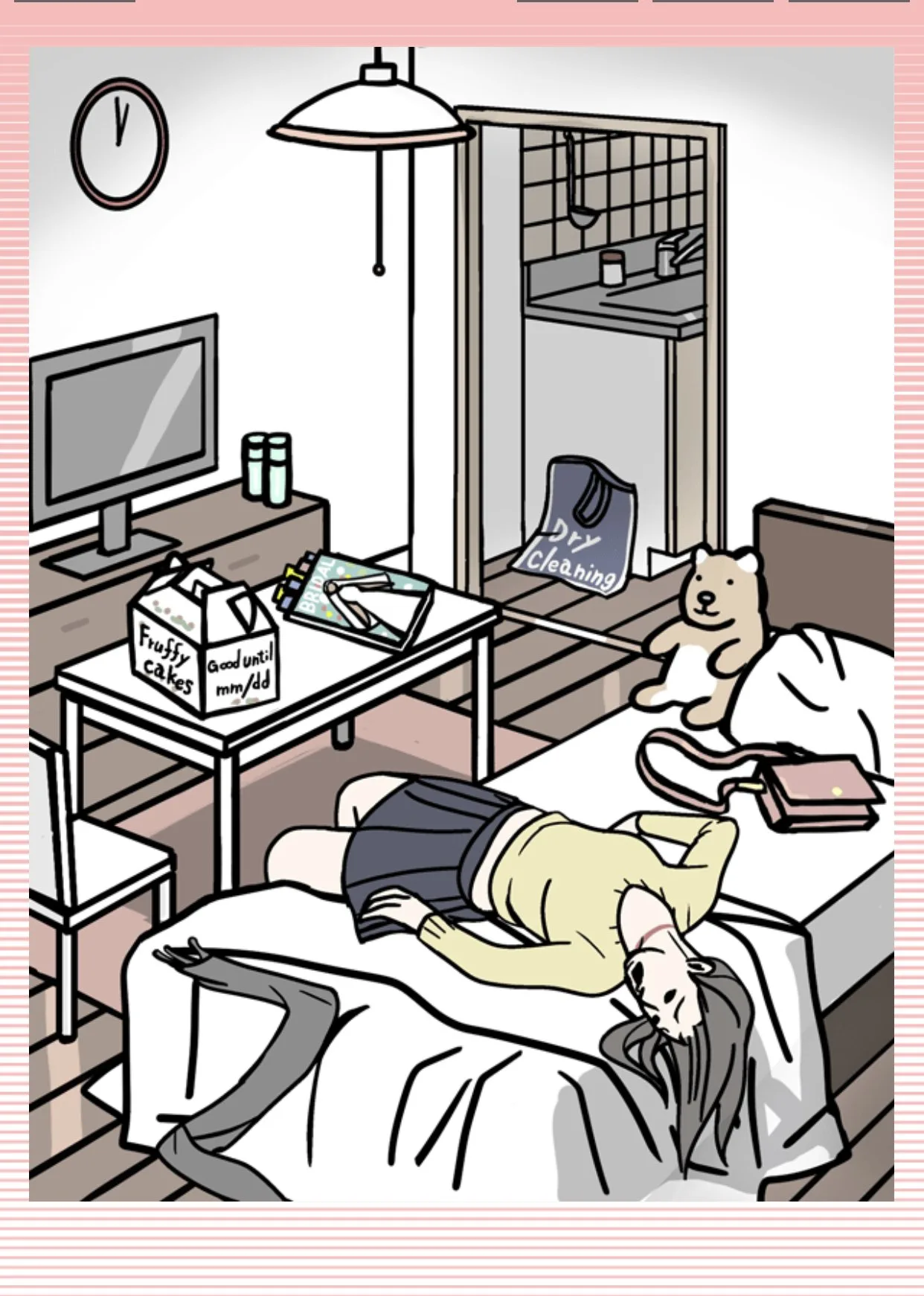
Question 148: The red mark around the neck of the victim indicates that she was strangled to death.
Question 149: The wire hanger in a weird shape next to the dry cleaning bag is a hint that that was the murder weapon.
Question 150: There is a wedding magazine on the table which indicates that the woman was about to start a new chapter in her life and get married.
Question 151: The expiration date on the cake box is the last clue as to who committed the crime.
Stage 39:
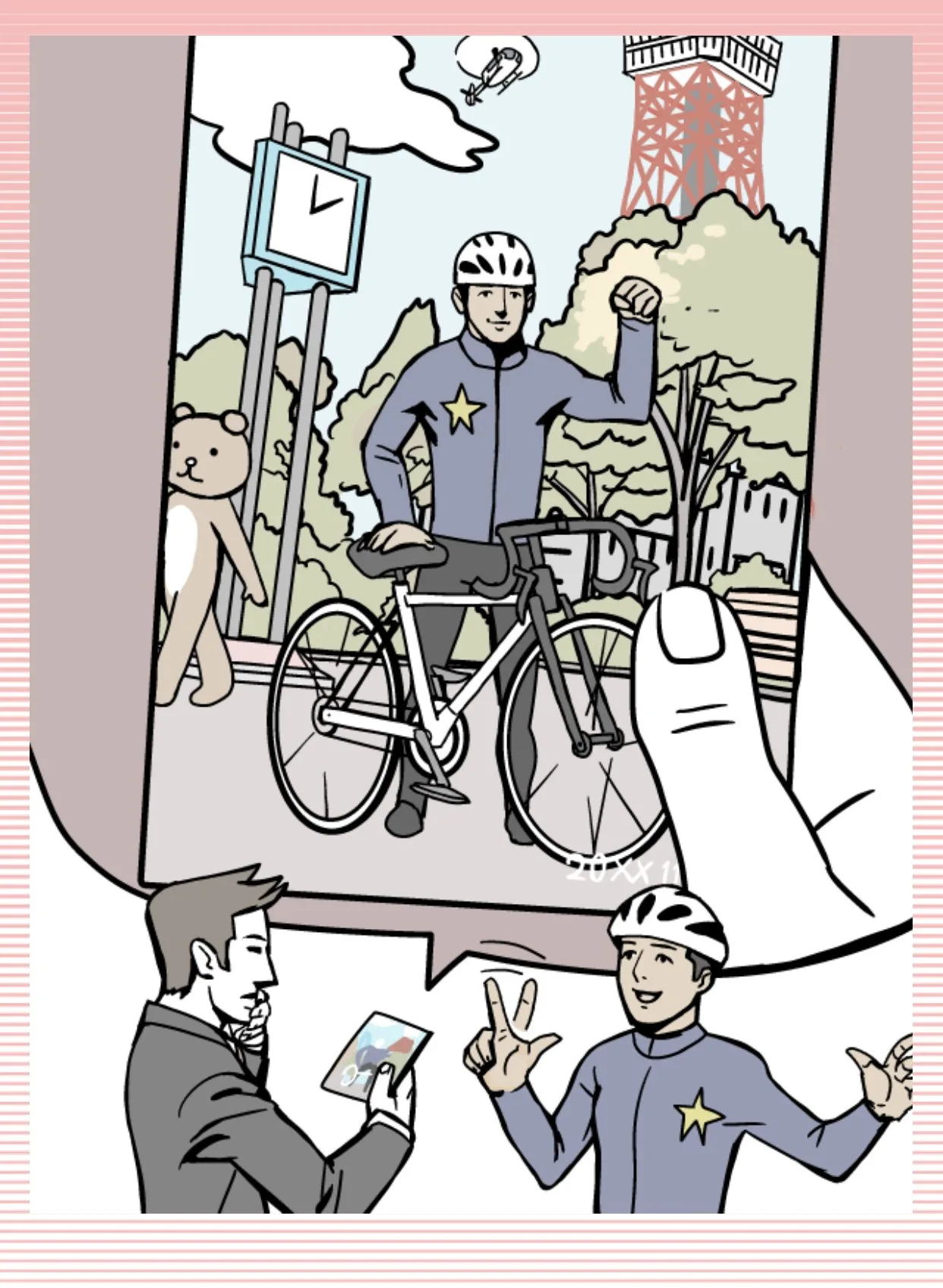
Question 152: The crime happened in Santana but the photo shows the Tokyo Tower, proving that the suspect was in Tokyo in the picture.
Question 153: The clock in the picture shows 2 PM. Tap the clock. The light in the sky also shows that it was daytime, making it PM and not AM.
Question 154: The suspect is talking to the investigator while wearing a jacket where the star is on the opposite side as the one in the photo.
Question 155: In the photo, the bike chain is on the left side. Bikes have chains on the right side, which is an indicator that the photo was flipped around.
Stage 40:
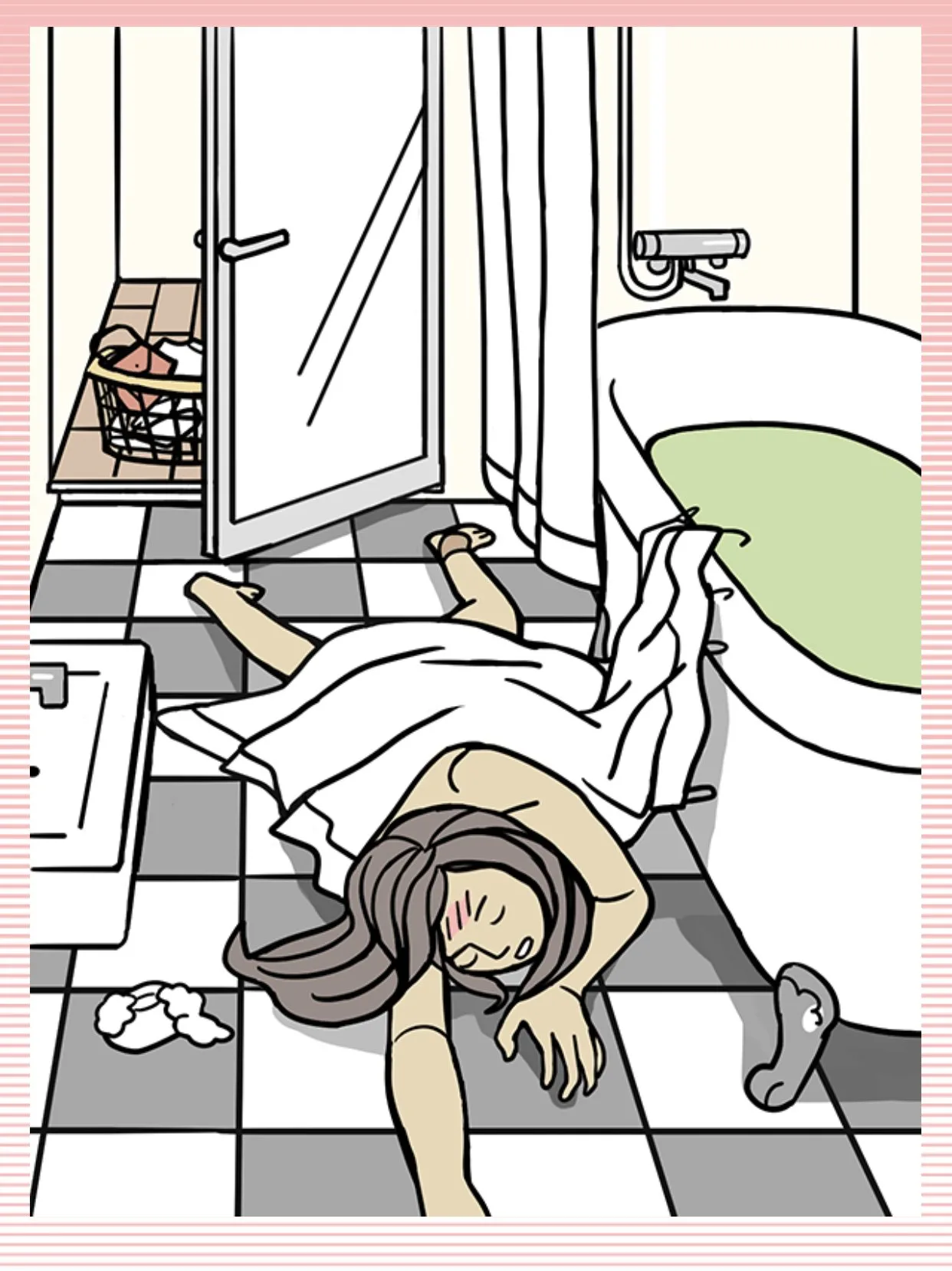
Question 156: The red spot on the head of the woman is the wound that ended her life.
Question 157: The soap on the floor indicates that it might have been an accident. She could have stepped on it, grabbed the shower curtain, which then ripped off of the rod, and fell and hit her head.
Question 158: The handbag being in the laundry basket is an indication that it wasn’t an accident. If it were, her purse would have been anywhere else besides the laundry basket, because nobody puts their purse in the laundry.
Stage 41:
Most Popular: Triumph Brick Breaker Cash: The Full Promo/Referral Code List and Guide for Free Money
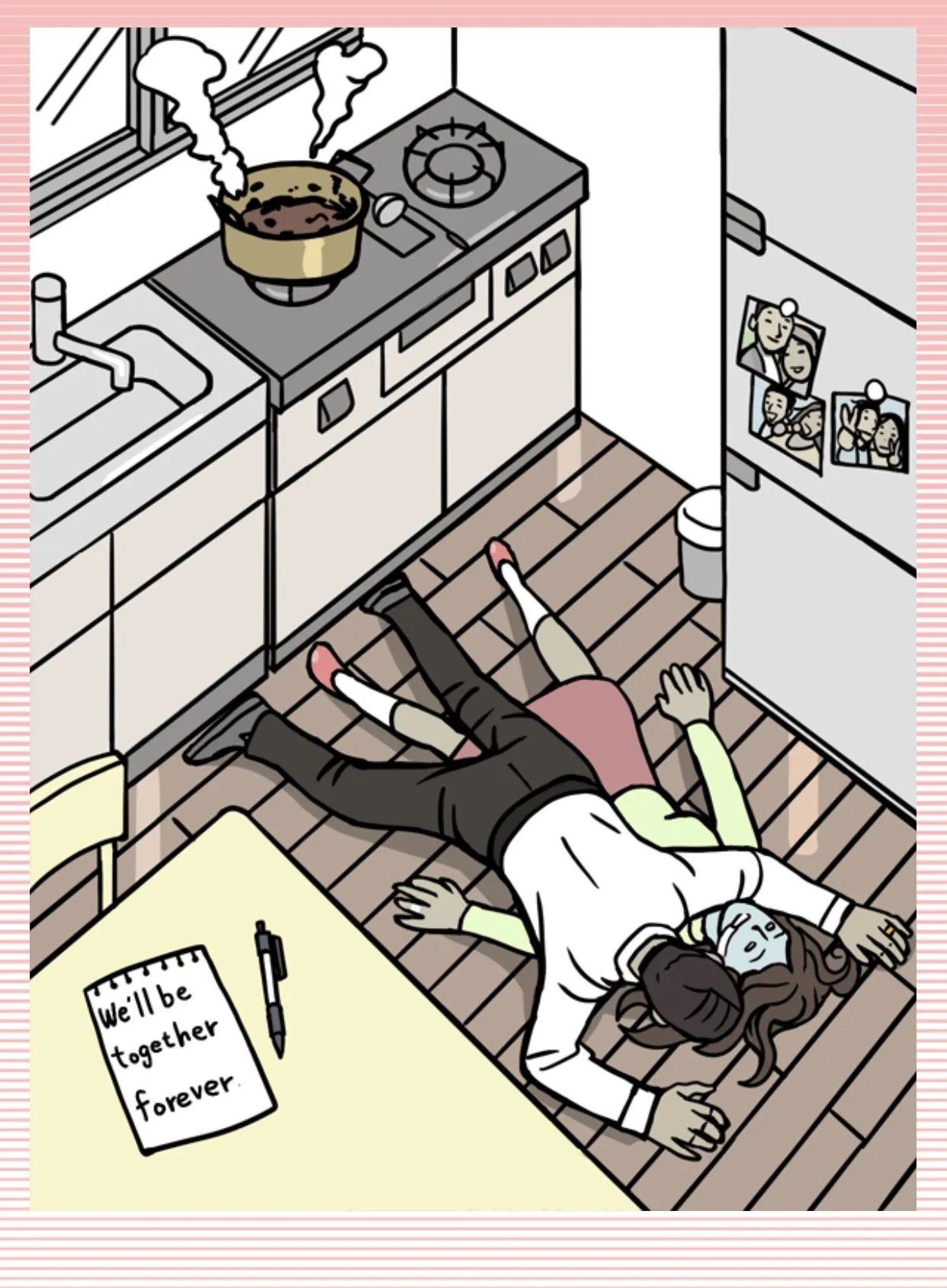
Question 159: The photos of the couple that are hanging on the refrigerator indicate that they were in an intimate relationship of some capacity.
Question 160: The note that said “we’ll be together forever” was the indicator of the mutual suicide plan. Although her signature wasn’t on it…
Question 161: Her ring finger no longer had a ring on it. She had a tan line where the ring was, indicating that the couple was no longer getting along.
Question 162: The fact that something was cooking on the stove indicates that the woman was not a willing participant in this scheme. Nobody would cook and then commit suicide before the cooking was done.
Stage 42:
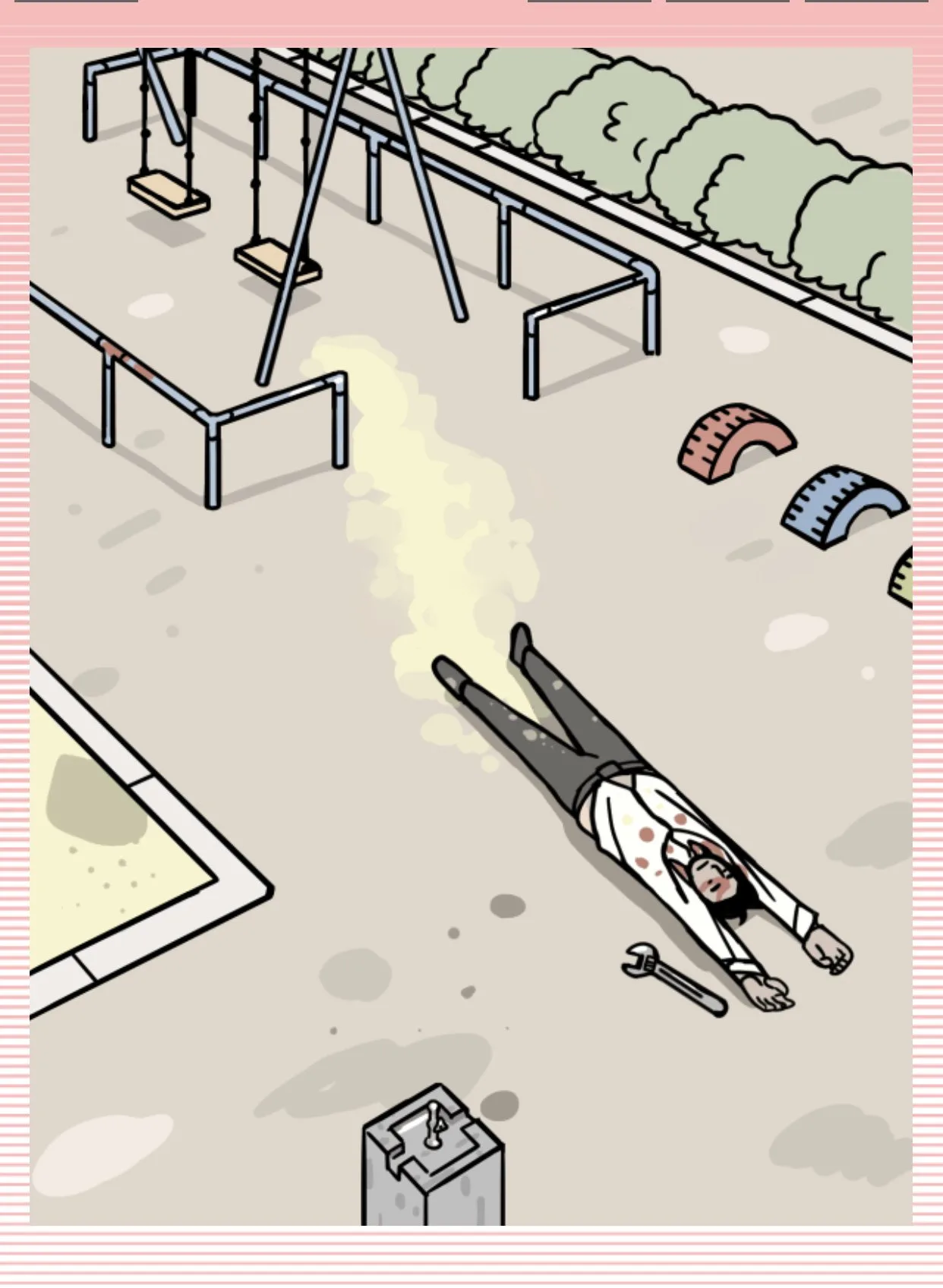
Question 163: The murder weapon is the only possible weapon on the screen: the spanner wrench that is lying next to him.
Question 164: The blood on the fencing surrounding the swing set is an indicator that the man wasn’t killed in the spot that he’s currently in.
Question 165: The man was hit over the head with one of the swings and killed, so tap the swings. The assailant placed the spanned next to him as a cover-up.
Stage 43:
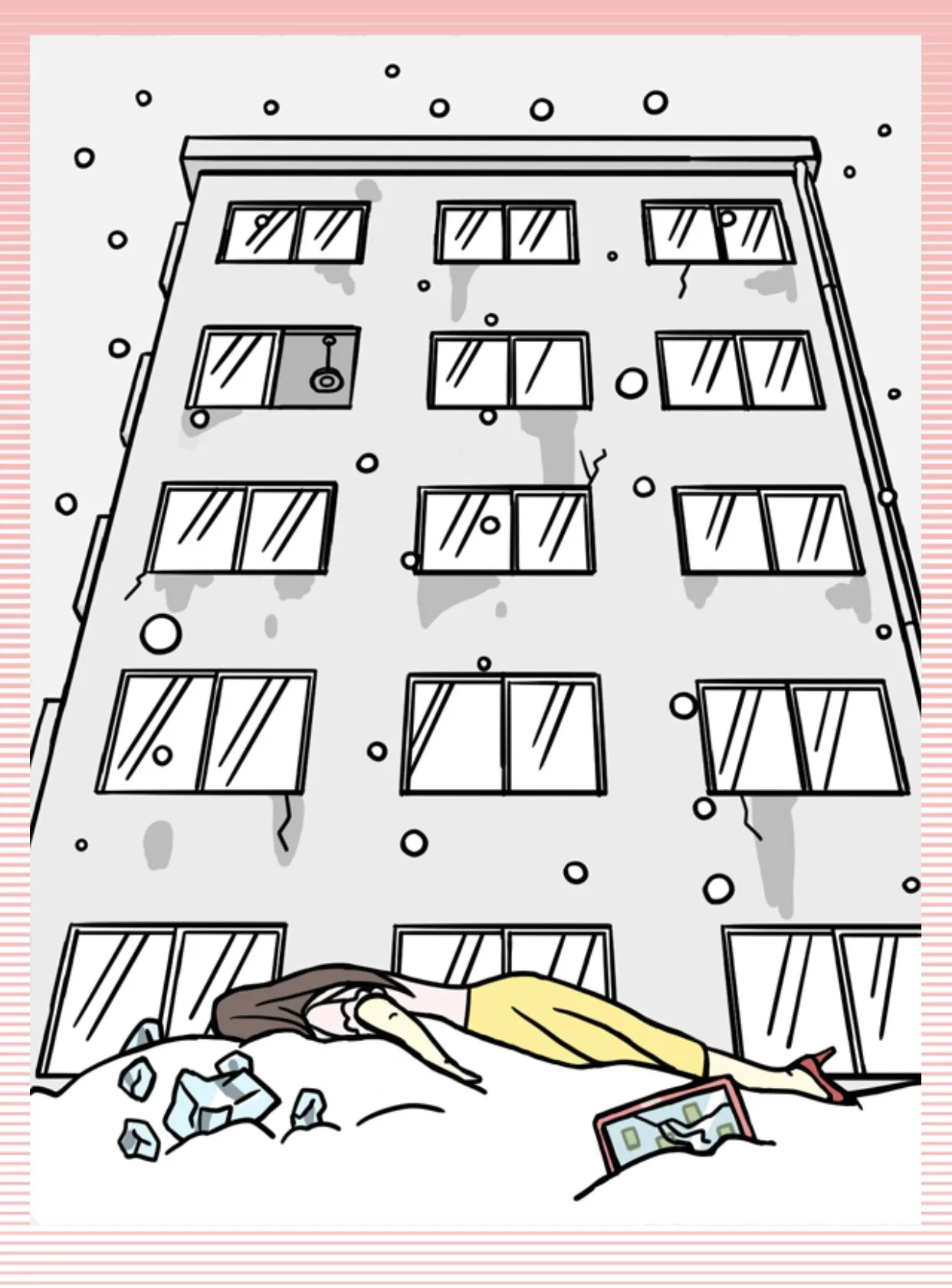
Question 166: The open window is the one that the woman fell out of.
Question 167: The broken shards of ice next to the head of the woman indicate that her death was not an accident, but that it was intentional.
Question 168: The killer was in the room directly above the victim. He dropped an ice block on her head from that room.
Question 169: The broken phone next to the body of the woman indicates how she was convinced to poke her head out of the window. The perpetrator texted her and told her to look out the window.
Stage 44:
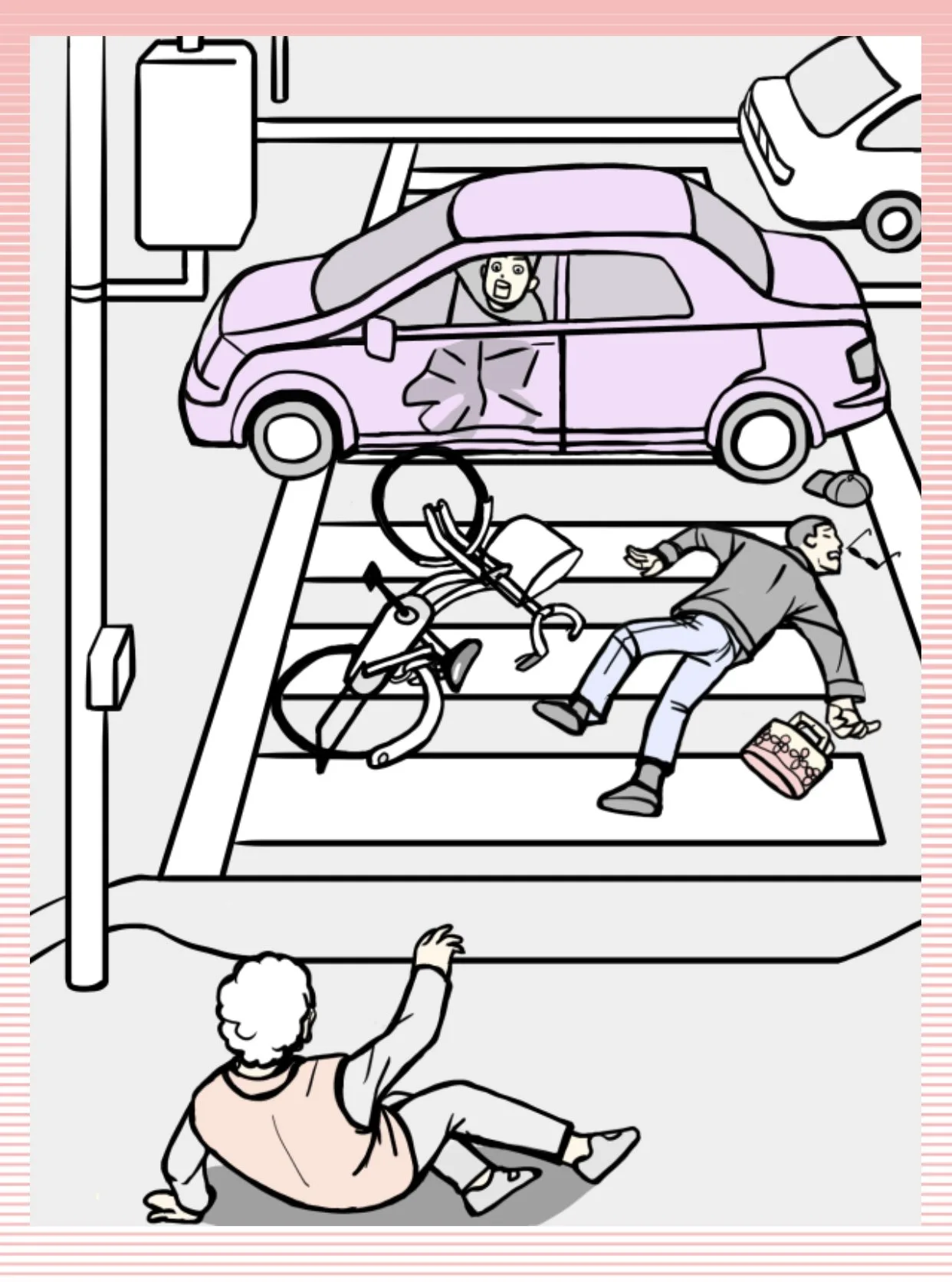
Question 170: The dent on the side of the car indicates that the bicycle is the one that hit the car, and not the other way around.
Question 171: The guy on the bike was carrying a purse, and not a masculine-style purse either. This indicates he was in a hurry to get away from the scene of the original crime.
Question 172: The elderly woman lying on the sidewalk is indicative that he snatched the purse. She’s the one whose purse he stole.
Question 173: The lock on the bicycle is broken. This indicates that the thief stole the bike before he stole the purse.
Stage 45:
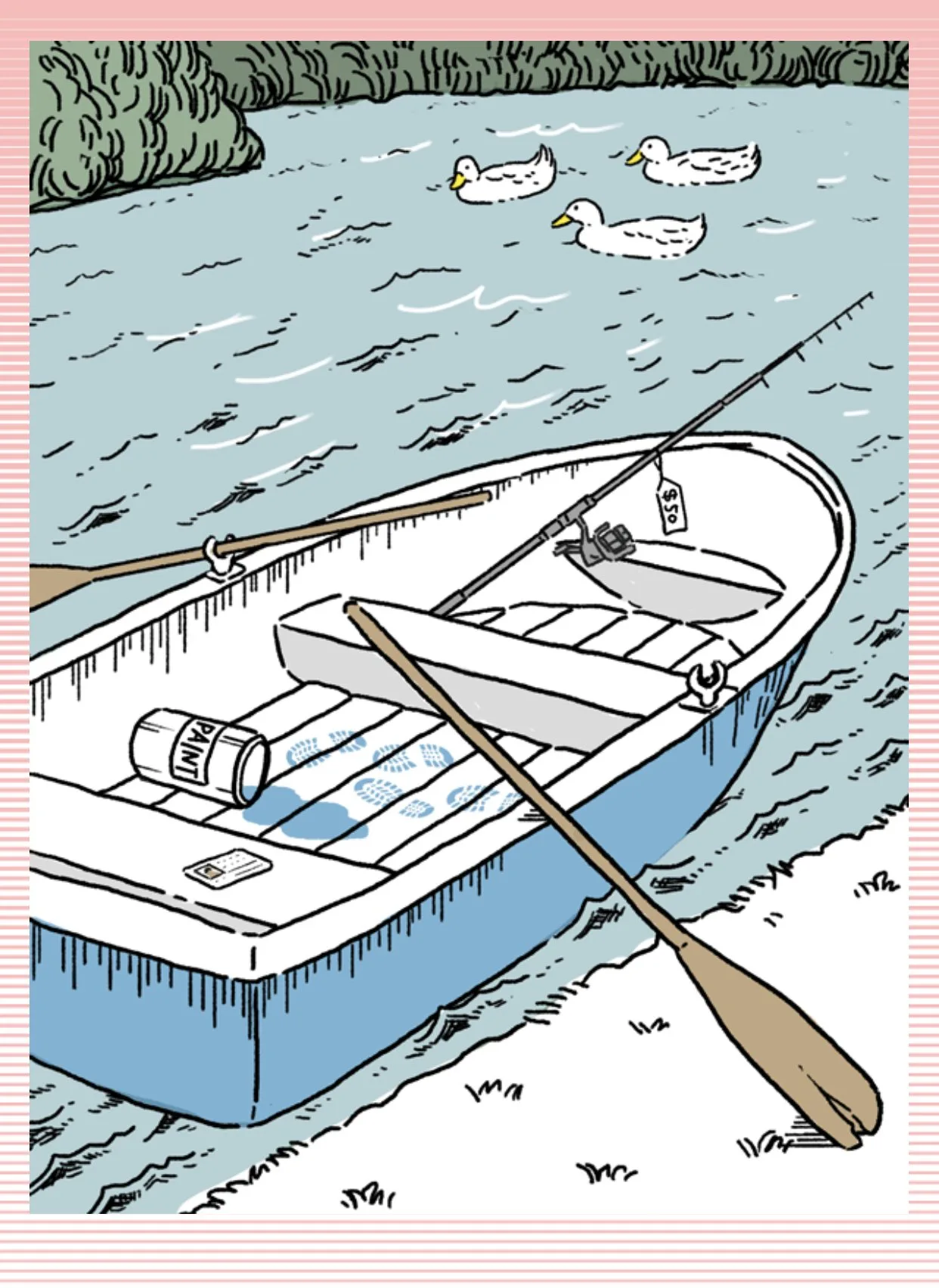
Question 174: The fishing rod still has the price tag on it, making it look like it’s been stolen. It also looks brand-new.
Question 175: The driver’s license on the floor of the boat is the one other thing that’s weird about the scene. Most of the time, the license is kept in a wallet.
Question 176: The oar on the right was used as the murder weapon. The oar is not connected to the boat in any way, unlike the left one, which is connected to the boat. It’s also cracked and dented.
Question 177: The footprints are the clue that the elderly detective discovered. They aren’t facing in a consistant direction. The owner of the boat staged a fake murder scene, but actually ran away after pressure from investigators.
Stage 46:
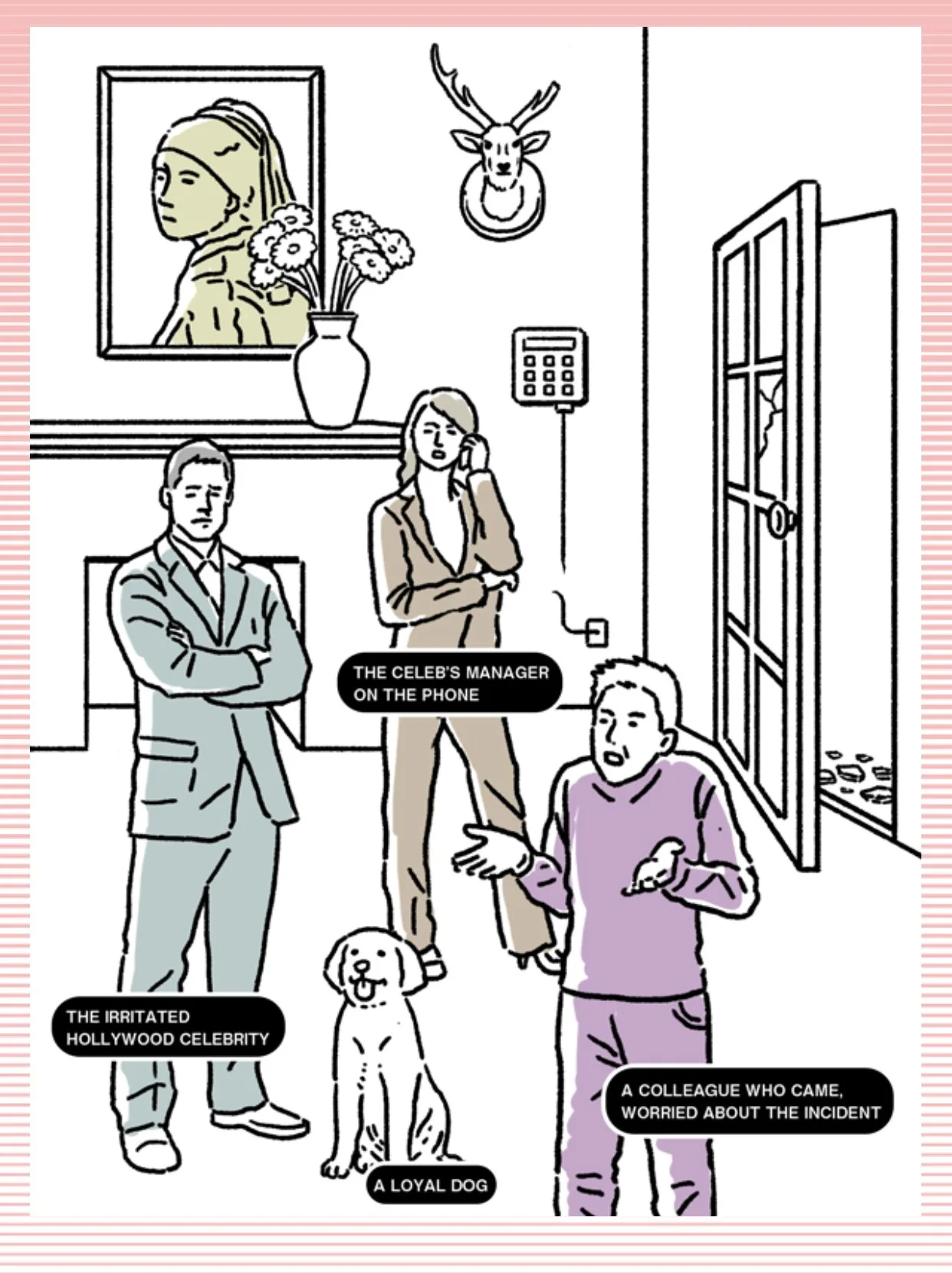
Question 178: The fact that it’s an inside job is indicated by the pieces of glass that are outside of the door. If an outsider broke in, the glass would be inside the door.
Question 179: The cut cord of the security system is why the system didn’t catch whoever stole the diamond ring.
Question 180: The diamond ring was found inside of the vase. You can tell because the flowers were placed in there hastily and sloppily.
Question 181: The “irritated Hollywood celebrity” is the one who stole that ring himself. He was planning to collect the insurance money on the ring by reporting it as stolen.
Stage 47:
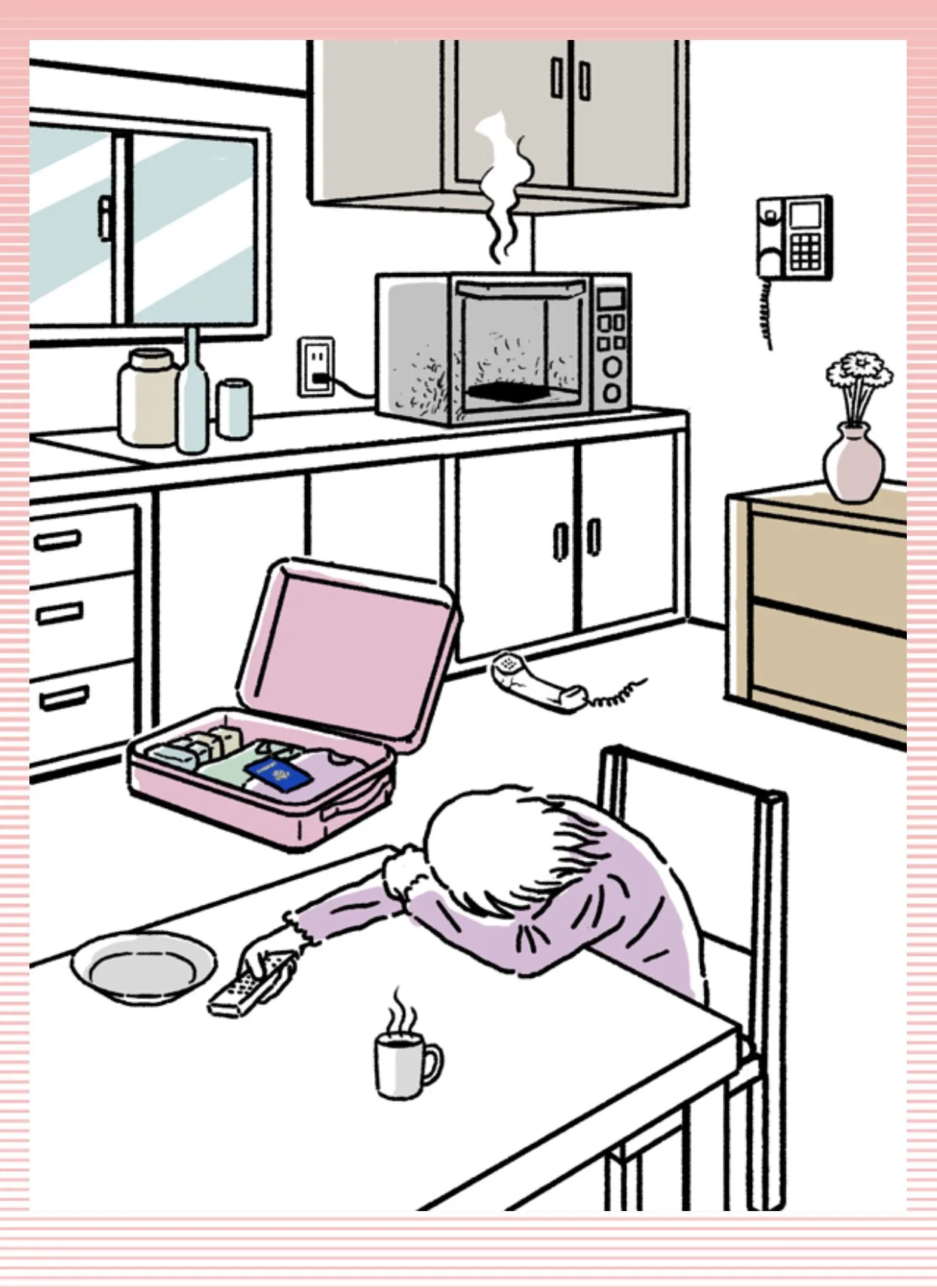
Question 182: The disconnected receiver portion of the phone is what was used to commit the crime and end the life of the victim.
Question 183: The burn marks on the microwave indicate that that was used in order to attempt to start the fire. There was also a smartphone found inside of the microwave.
Question 184: There is a passport inside of the red suitcase. This is the hint that the wife was trying to elope with her new boyfriend and run off.
Question 185: You can tell that the killer was someone who was close to her because she had the TV remote in her hand, which shows that she was not on the defensive at the time.
Stage 48:
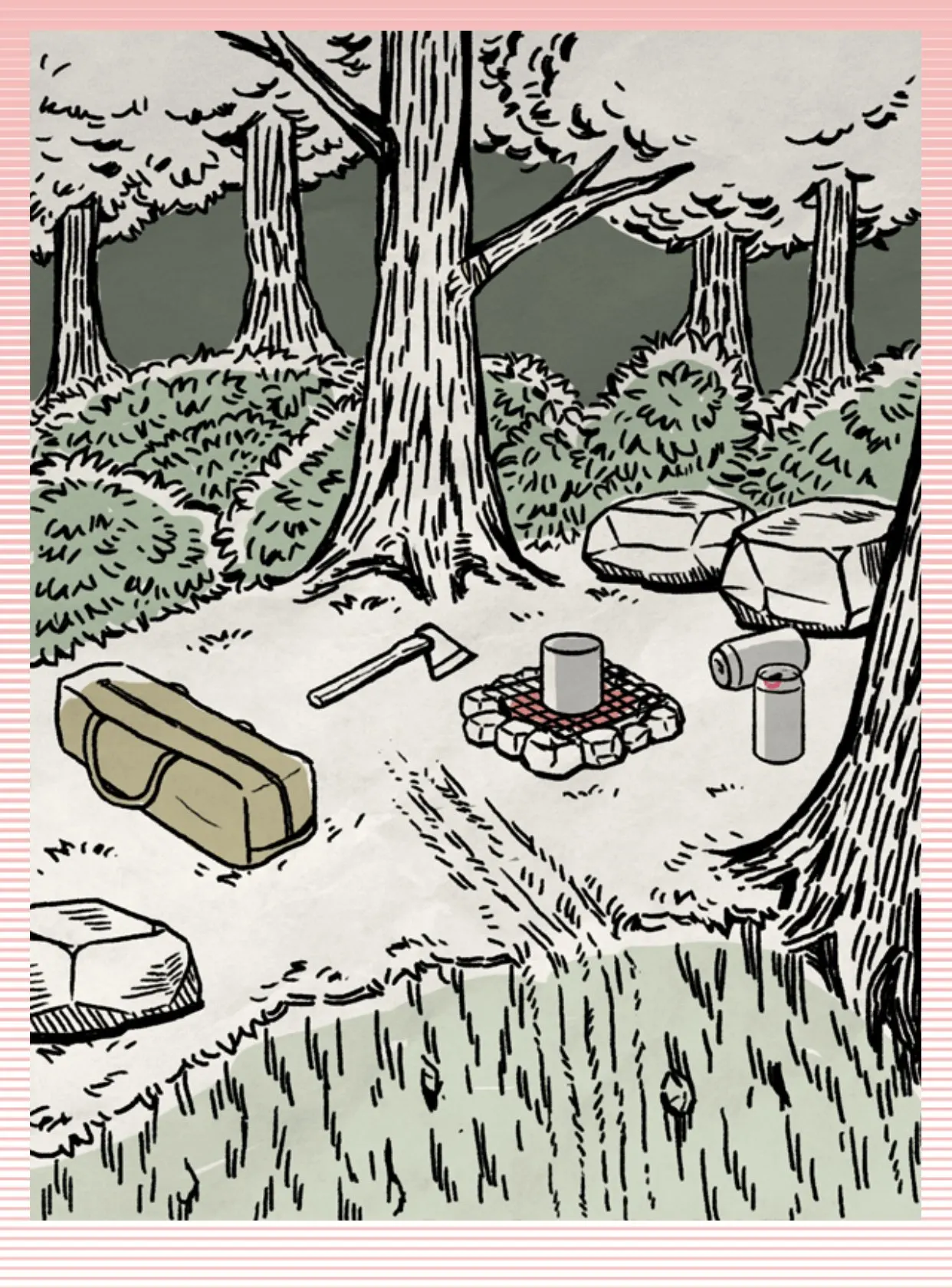
Question 186: You can tell that this is a murder scene because there is a patch of flattened grass leading to the cliff where the hiker fell. The body must have been dragged and pushed.
Question 187: One of the tree branches has vertical scrapes on it, which looks like a failed attempt to cut the branch.
Question 188: it was night time when the scene happened, but the tent was still in the bag, and was never taken out.
Question 189: One of the cans has a lipstick stain on it. That’s how you can tell that the adventurer was with his girlfriend.
Stage 49:
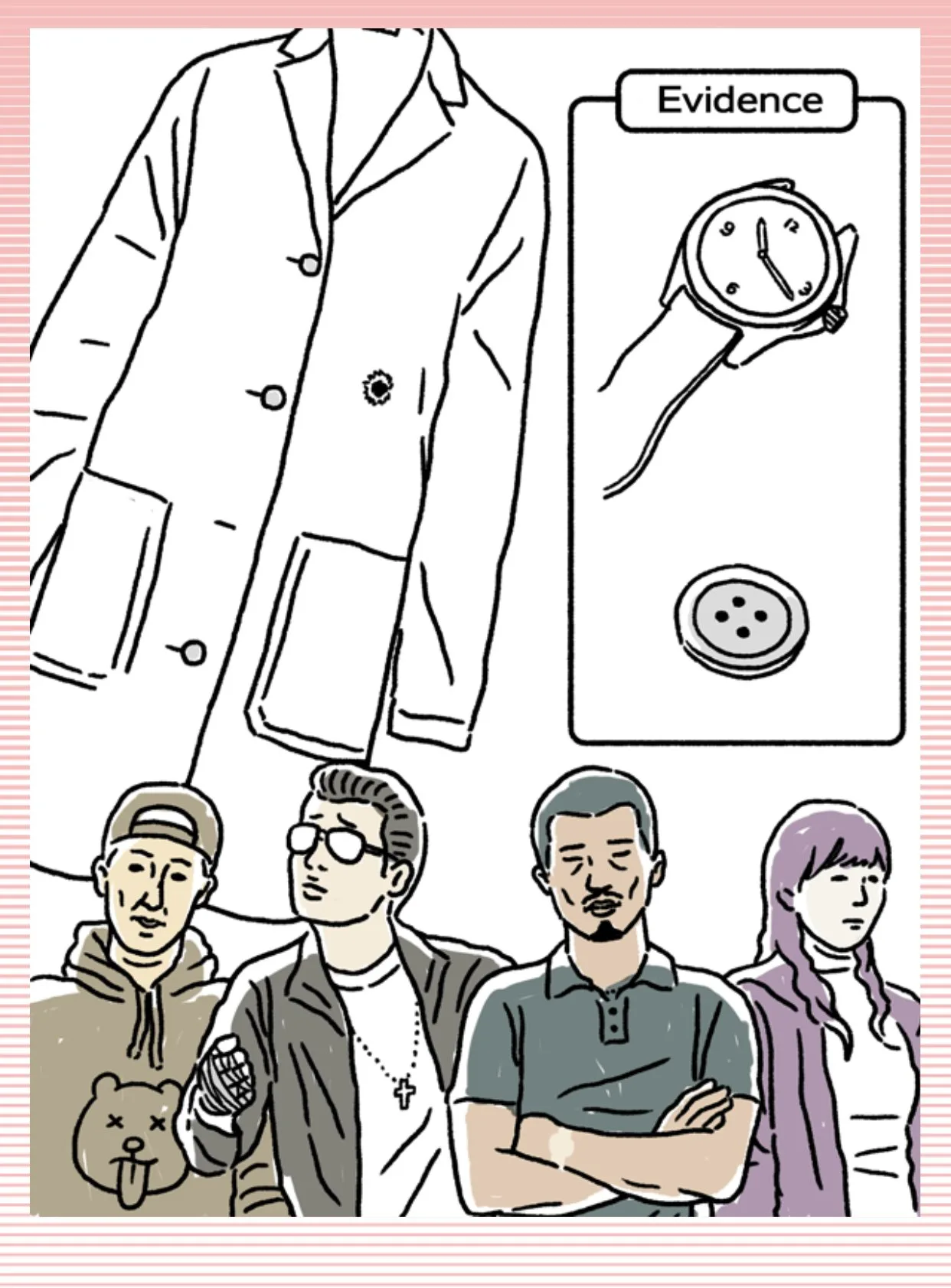
Question 190: The watch belongs to the third suspect. You can tell because of the tan line that he has in the same shape as the watch.
Question 191: The area where the button is missing from on the coat is the evidence that is needed to incriminate the robber.
Question 192: The second suspect broke the window. You can tell because of the bandage on his hand covering the wound from punching out the window.
Question 193: The fourth suspect is the one that shot the home owner. The right side of the coat is on top of the left side, indicating the orientation of the buttons.
Stage 50:
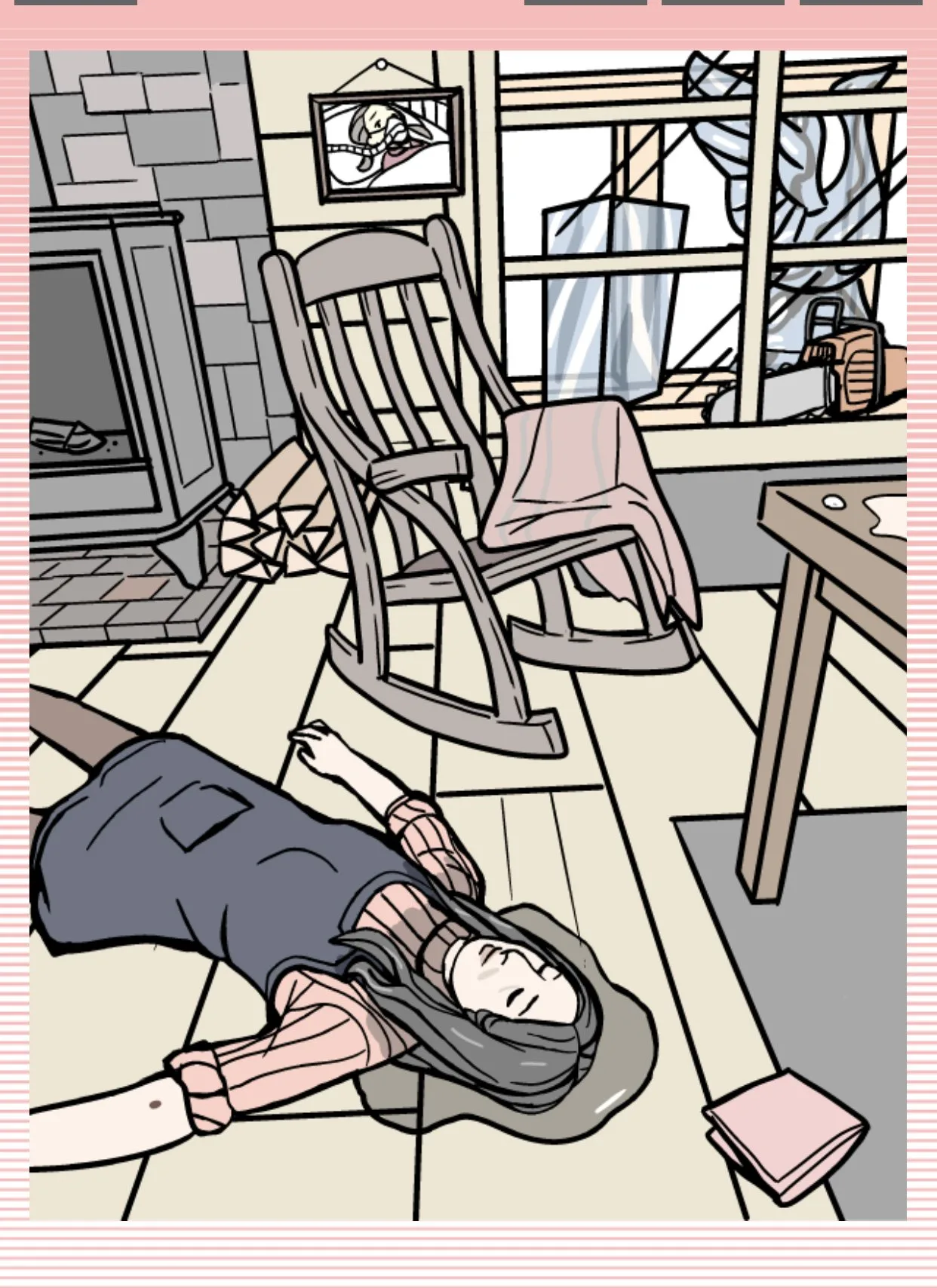
Question 194: The cause of death was that the victim’s body was soaked in water and the fireplace wasn’t on, so the water froze the sculptor.
Question 195: The calm look on the face of the victim is is because of the needle mark on her arm. She was drugged before her face was frozen in ice.
Question 196: The ice pillar outside indicates that it was a suicide, and that the woman could have frozen her own head inside of the pillar of ice.
Question 197: The picture on her wall is the motive. Her daughter was gravely ill, so she committed suicide and staged it to look like a murder so that her daughter would receive the life insurance money.
Stage 51:
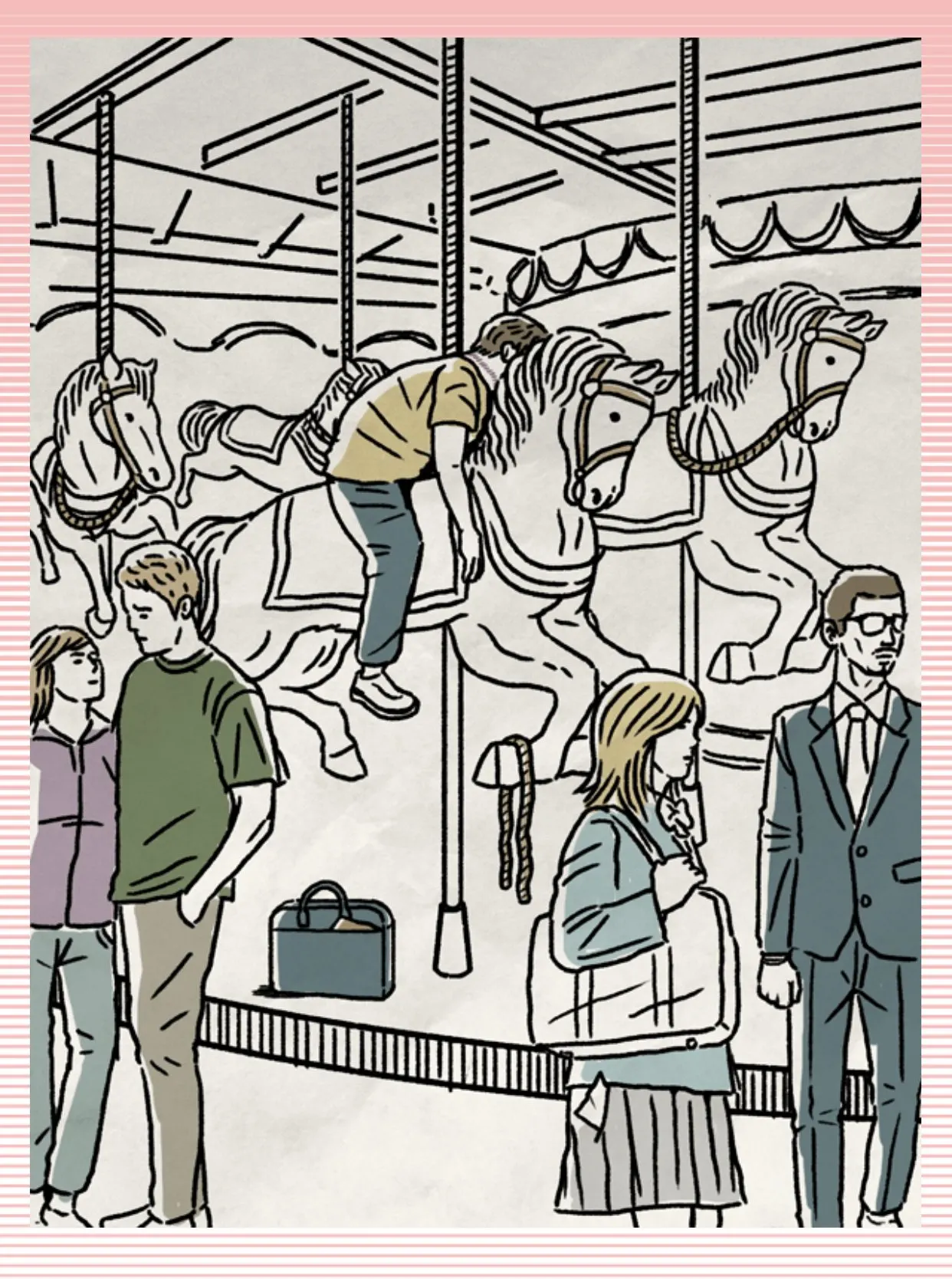
Question 198: The man on the merry go round was killed by strangulation, as you can tell by the red mark around his neck.
Question 199: One of the reins is on the foot of the horse that the man is on. That’s the weapon that was used to end his life.
Question 200: The suitcase below the man is the indicator of why he was on the ride. He dropped an envelope into the suitcase from up on the horse.
Question 201: The high school girl in the foreground is the one who killed the man. She has the envelope in her pocket.
Stage 52:
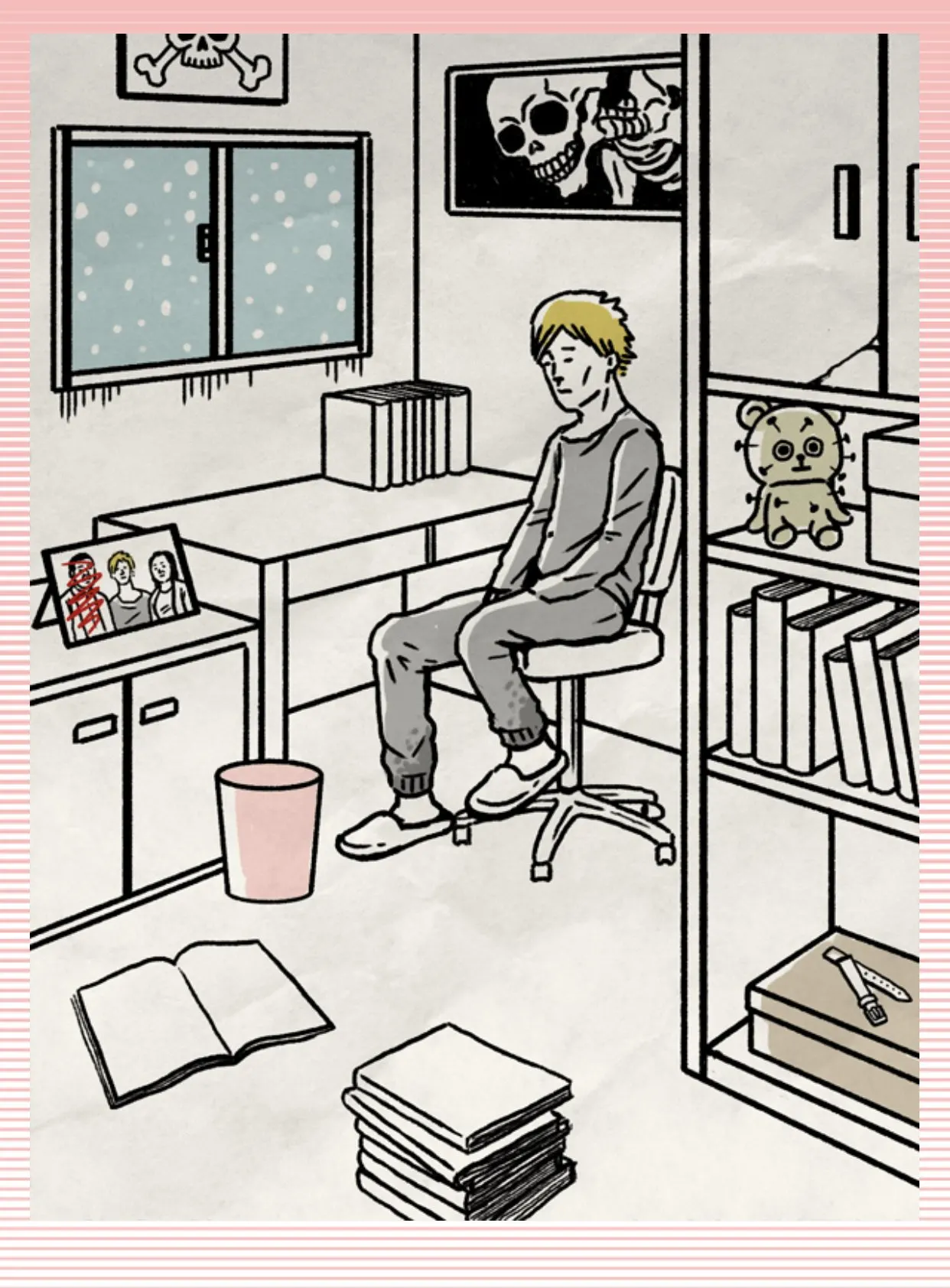
Question 202: The family picture has a red scribble over the father’s picture, which indicates the reason why he didn’t mourn his father – because they didn’t get along.
Question 203: The teddy bear with nails hammered into it is why the son gives you a creepy vibe, whether or not he is actually guilty.
Question 204: The man’s ankles were wet, which indicates he was lying about never going outside, and actually did go outside.
Question 205: The watch strap on the man’s shelf indicates that he cut apart a watch in order to use the watch face as a time bomb counter.
Stage 53:
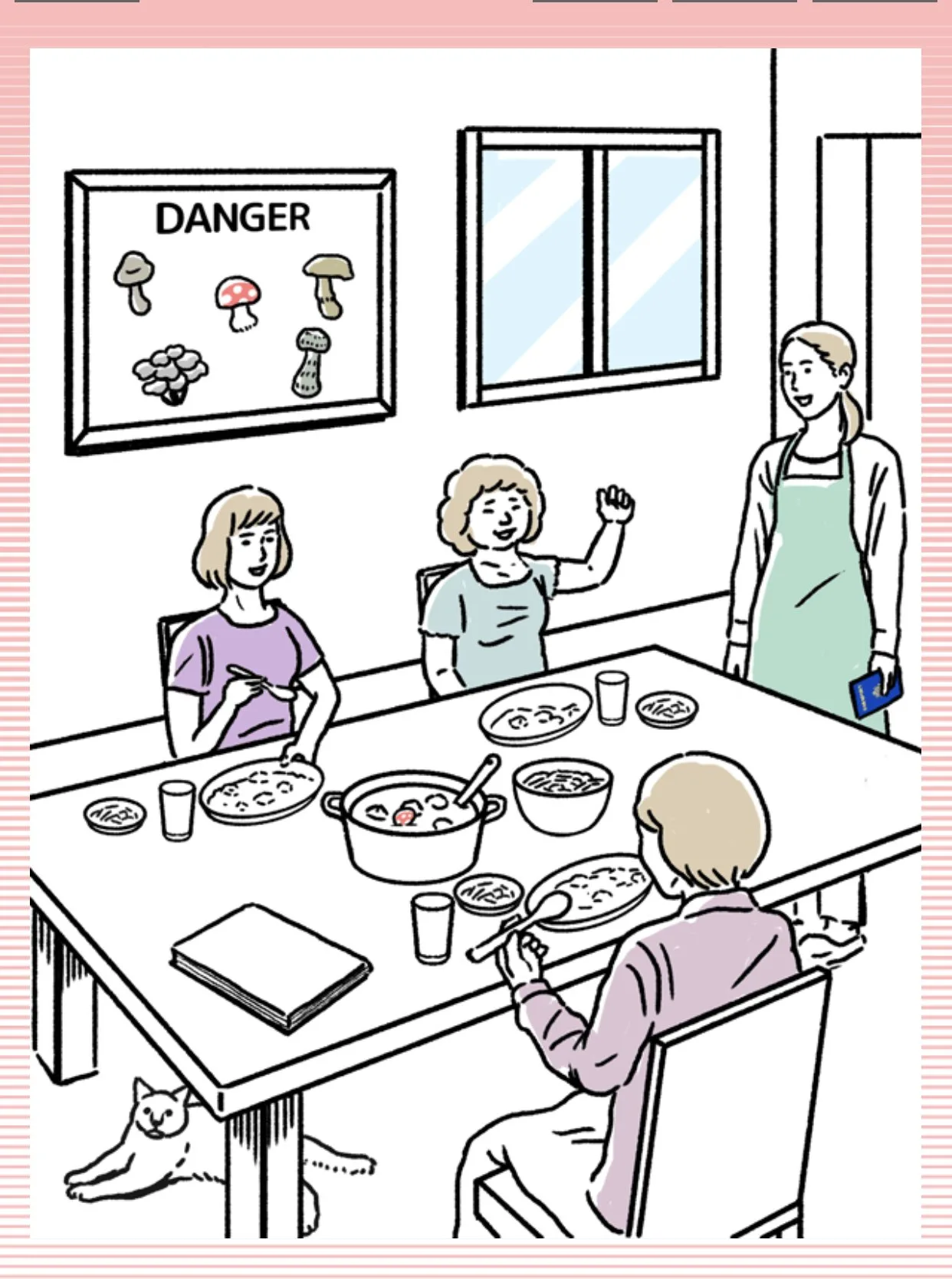
Question 206: The big pot of stew in front of all of them was what they were eating that killed all of them.
Question 207: The red mushroom in the picture on the wall is the same one that is in the bowl of stew, and is poisonous.
Question 208: The woman in the apron was the one hosting the party and the one who prepared the stew, but she did not take a bite of it, so she didn’t die.
Question 209: The woman who served the stew is holding a passport in her hand, indicating that she had already planned her escape for after she had committed the crime.
Stage 54:
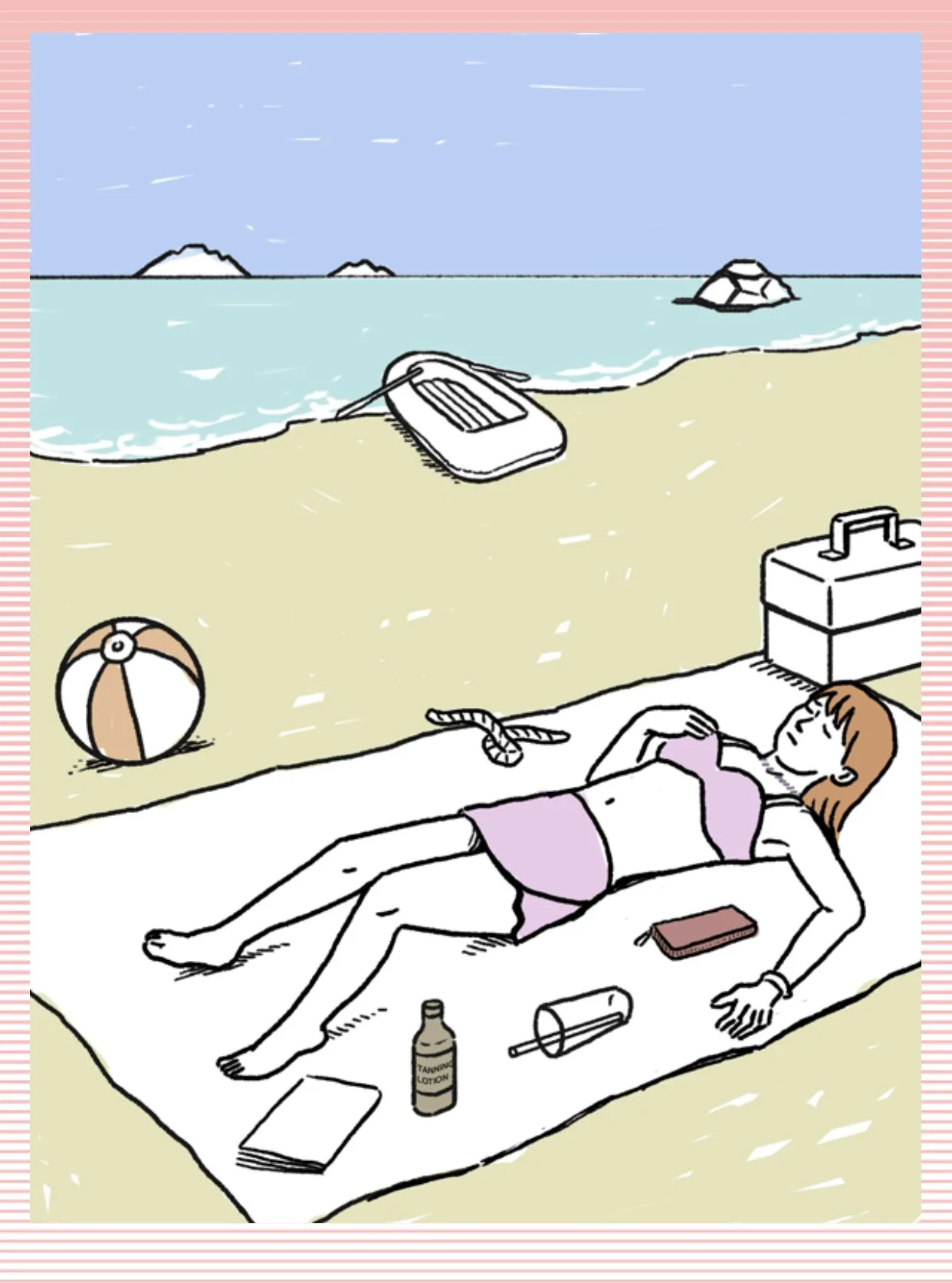
Question 210: the red mark on the neck of the woman indicates that something was used to strangle her, so the rope that is next to her head would be the likely murder weapon.
Question 211: The red wallet next to the woman would have been stolen if the killer was after her belongings, but it’s still there, so he or she wasn’t after the money.
Question 212: The drink cup next to the woman is where the killer mixed the poison into the drink.
Stage 55:
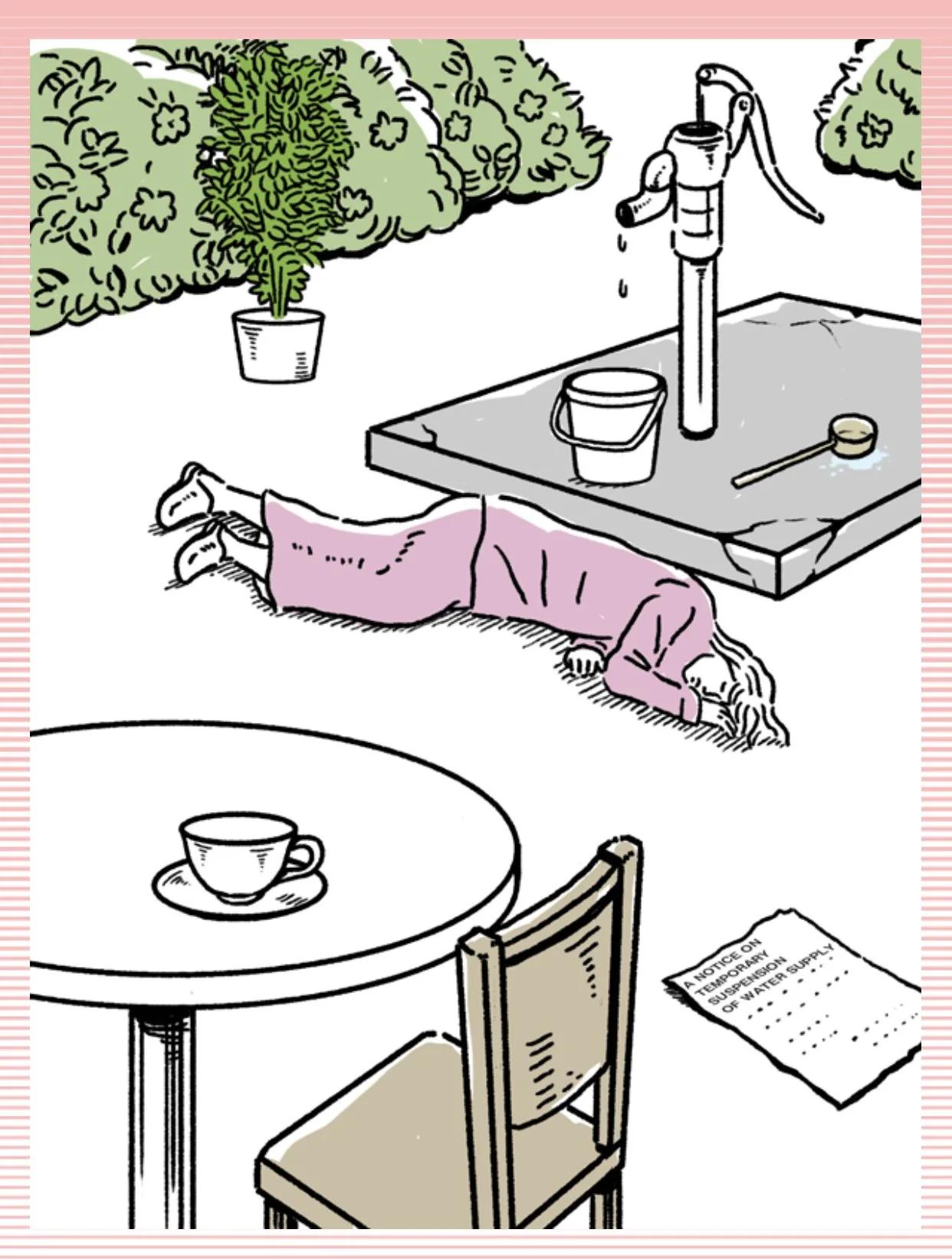
Question 213: The note on the ground saying “TEMPORARY SUSPENSION OF WATER SUPPLY” would be the reason that the woman chose to use well water that day.
Question 214: You can tell that she did not use the tea cup because it is still completely dry and is sitting on the tea dish.
Question 215: The red dipper on the ground is what was used to poison her. The killer coated the dipper with poison, and when the woman used it to get some water to taste-test for the tea, she was killed.
Stage 56:
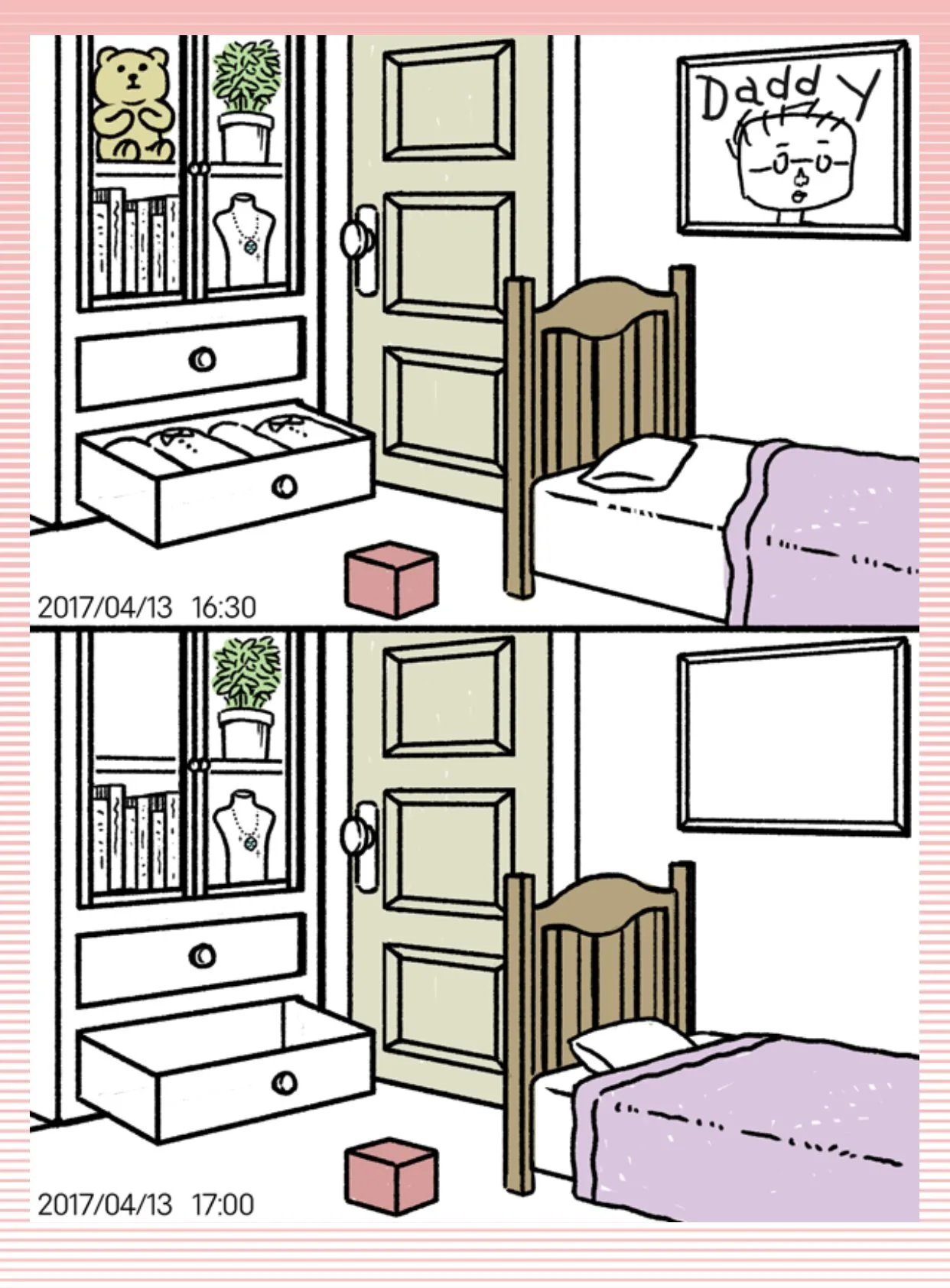
Question 216: The empty drawers are thought to be the weird thing about the scene, since it’s hard to imagine someone kidnapping a child and then taking their clothes for them, too.
Question 217: Another hint that this might have been an inside job was that the daughter’s favorite object, the teddy bear, was also taken. Tap where the teddy bear used to be.
Question 218: You can tell that the daughter had a good upbringing because she made her bed neatly in between the first picture and the second picture. Tap the bed in the second pic.
Question 219: The dad is thought to have been the “kidnapper” because he also took the drawing on the wall that says “daddy”. Tap the empty space where the picture used to be.
Stage 57:
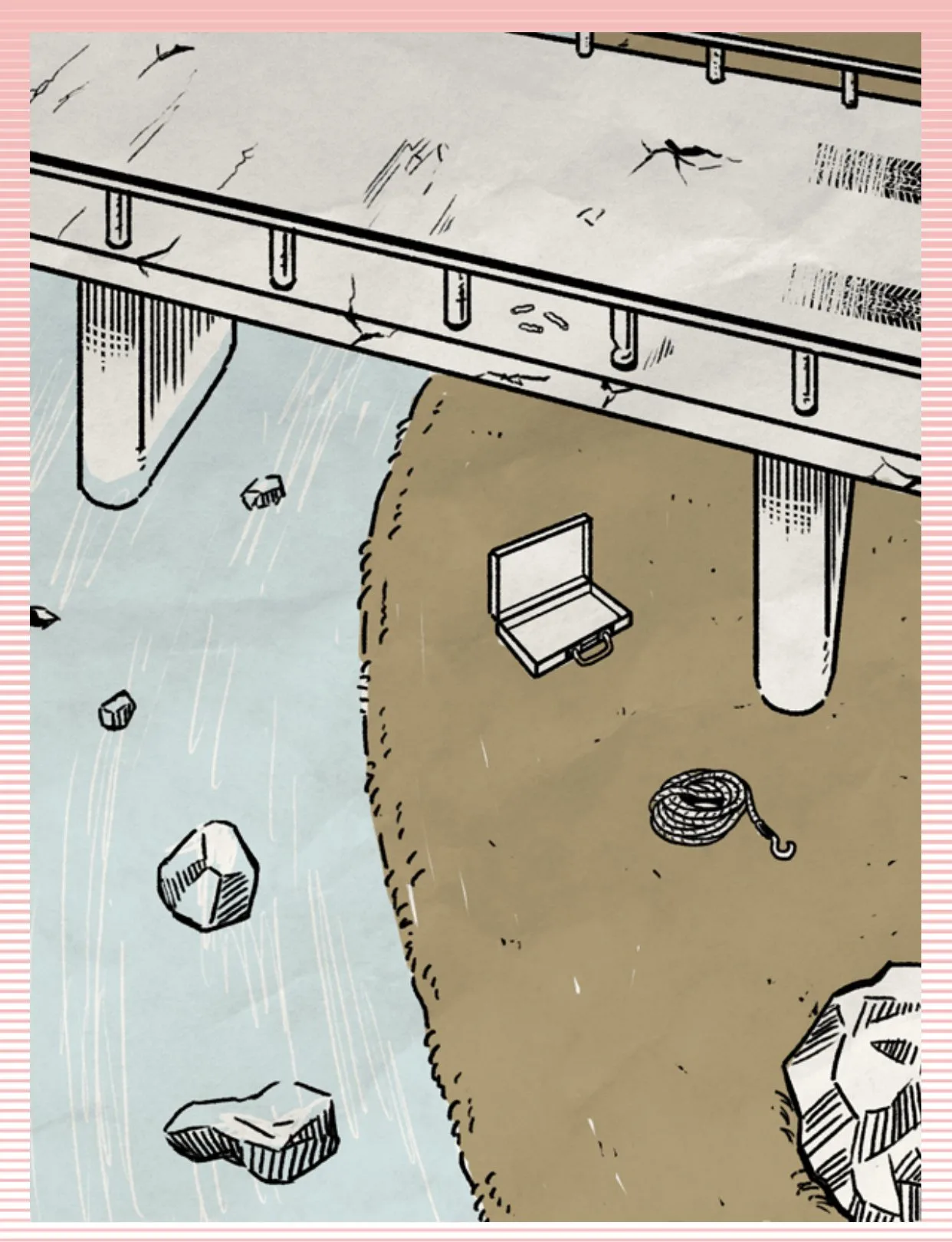
Question 220: The hacker successfully made a deal for the gold. You can tell because the briefcase under the bridge is empty.
Question 221: The rope under the bridge is what was used to get the suitcase in order to retrieve the gold. You can tell because there are no footprints despite the rain and mud.
Question 222: There are three cigarette butts on the bridge that were left behind by the hacker. This is how you can tell that the hacker was there, despite no footprints.
Question 223: There are also tire tracks that have been left on the bridge where the hacker was. This shows that the 44lb briefcase was actually lifted up using a vehicle, not simply by himself.
Stage 58:
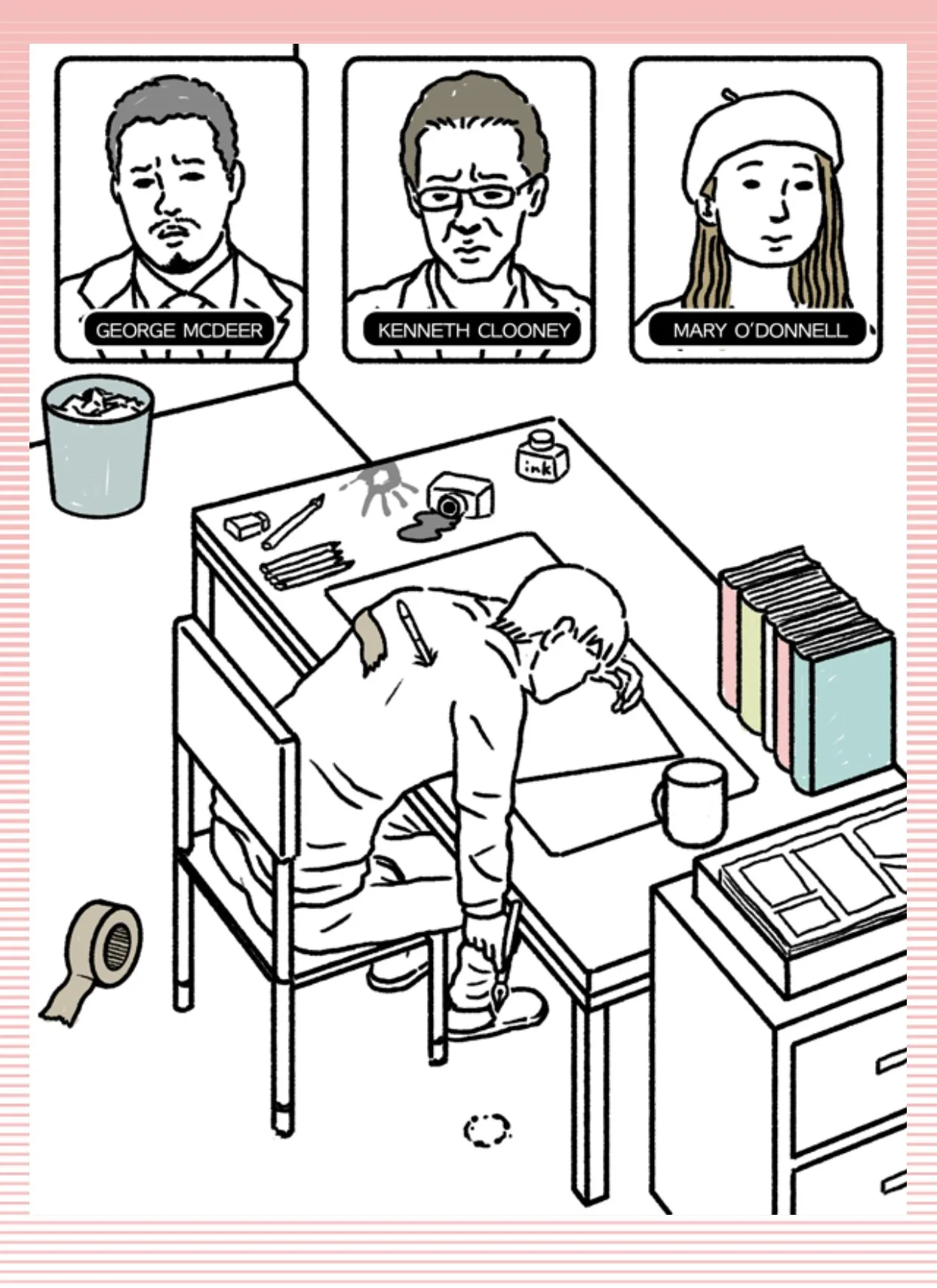
Question 224: The pen that was stuck in the back of the victim was the weapon used to kill him.
Question 225: The tape on the victim’s back shows why he was not able to call for help. The victim had been taped to the chair.
Question 226: The spilled ink bottle and the hand print next to it can be used as identifying marks to discover who was the assailant.
Question 227: In addition to the hand print, the O that was dripped on the floor can also help, because the artist put the O there to hint at the first initial of the perpetrator.
Stage 59:
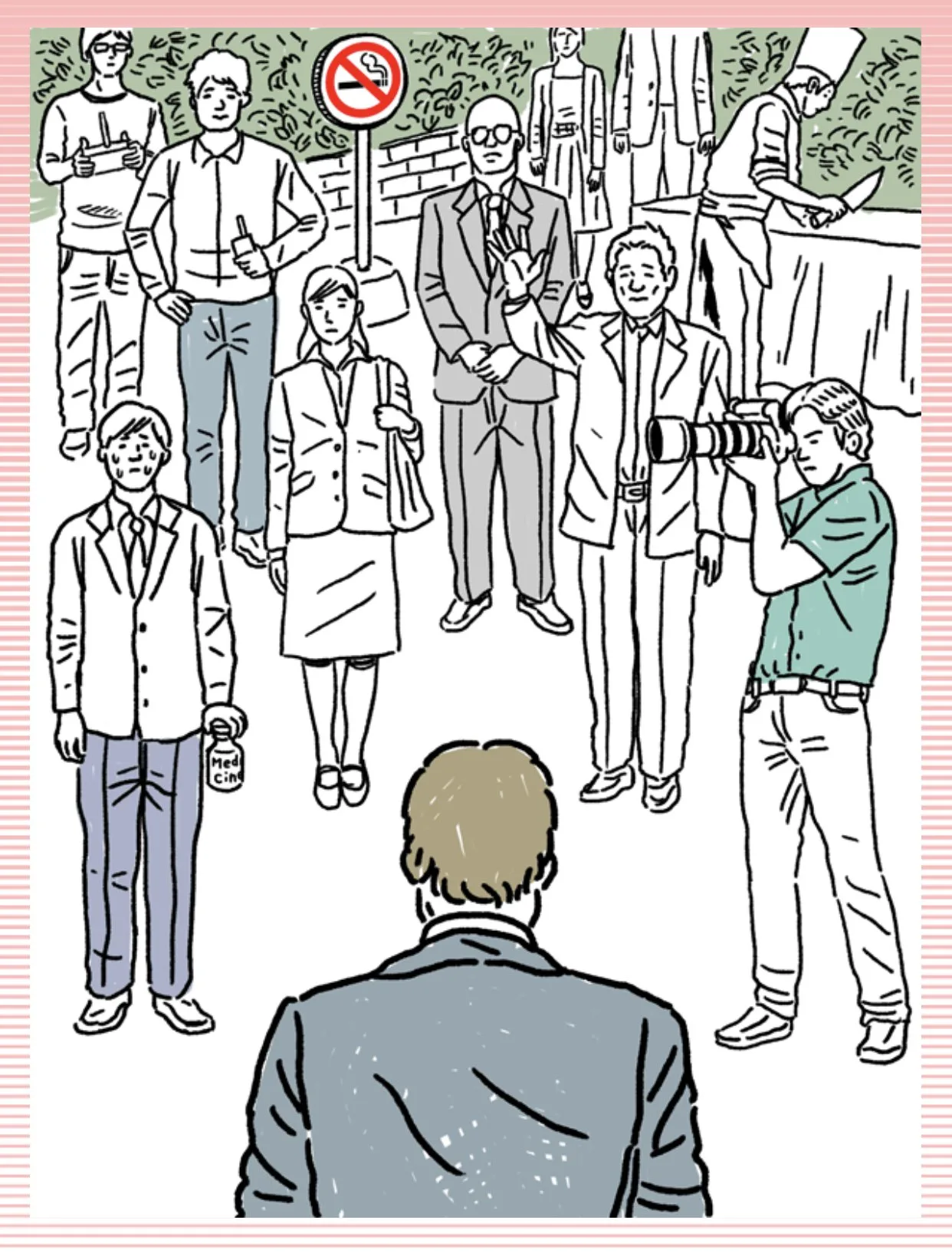
Question 228: The cameraman is the most likely one at the Presidential meeting to have a gun. He could have modified his telephoto lens into a weapon.
Question 229: The chef is the most likely one to attack with a knife, since he is the only one who has a visible knife in the first place.
Question 230: The doctor is holding the medicine, and if poison were involved in the threat to the president, it would have been mixed into the medicine.
Question 231: The man with the controller is using the controller to control a drone. The drone could be packing a bomb, which could make the “loud and wild” threat come true.
Stage 60:
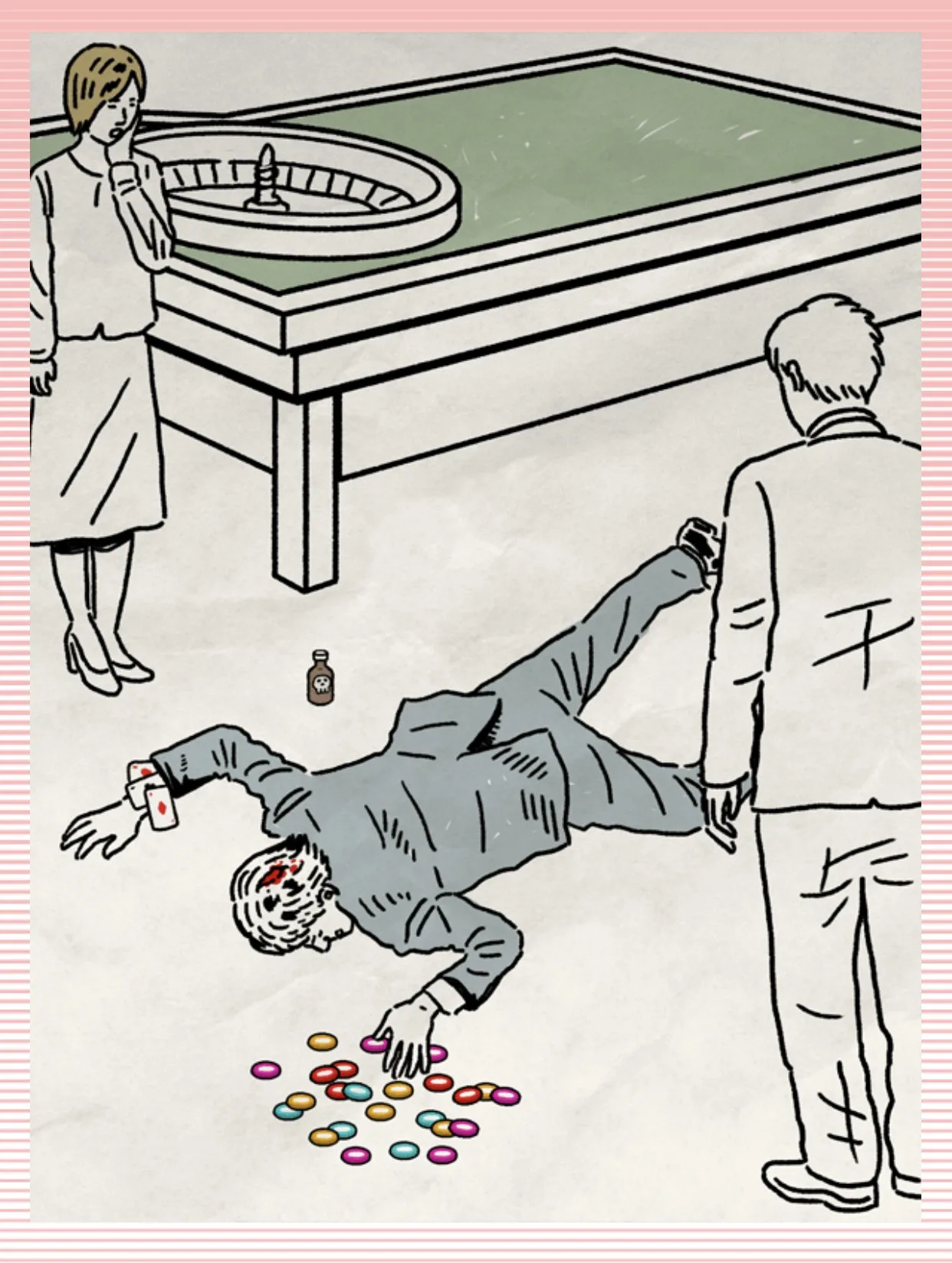
Question 232: The huge collection of chips that were in the hand of the gambler are an indicator that he was a skilled regular at the casino, and a high roller.
Question 233: Ultimately, the cause of death was the wound in his head. The poison didn’t kill him all the way so whoever did it used blunt force to finish the job.
Question 234: The poison had the lid screwed back on after he drank it. This indicates that he drank it by accident, and not as a suicide attempt.
Question 235: The cards up his sleeve indicate the motive for killing the gambler. He had been cheating all along, so the owner of the casino decided to have something done about it.
Stage 61:
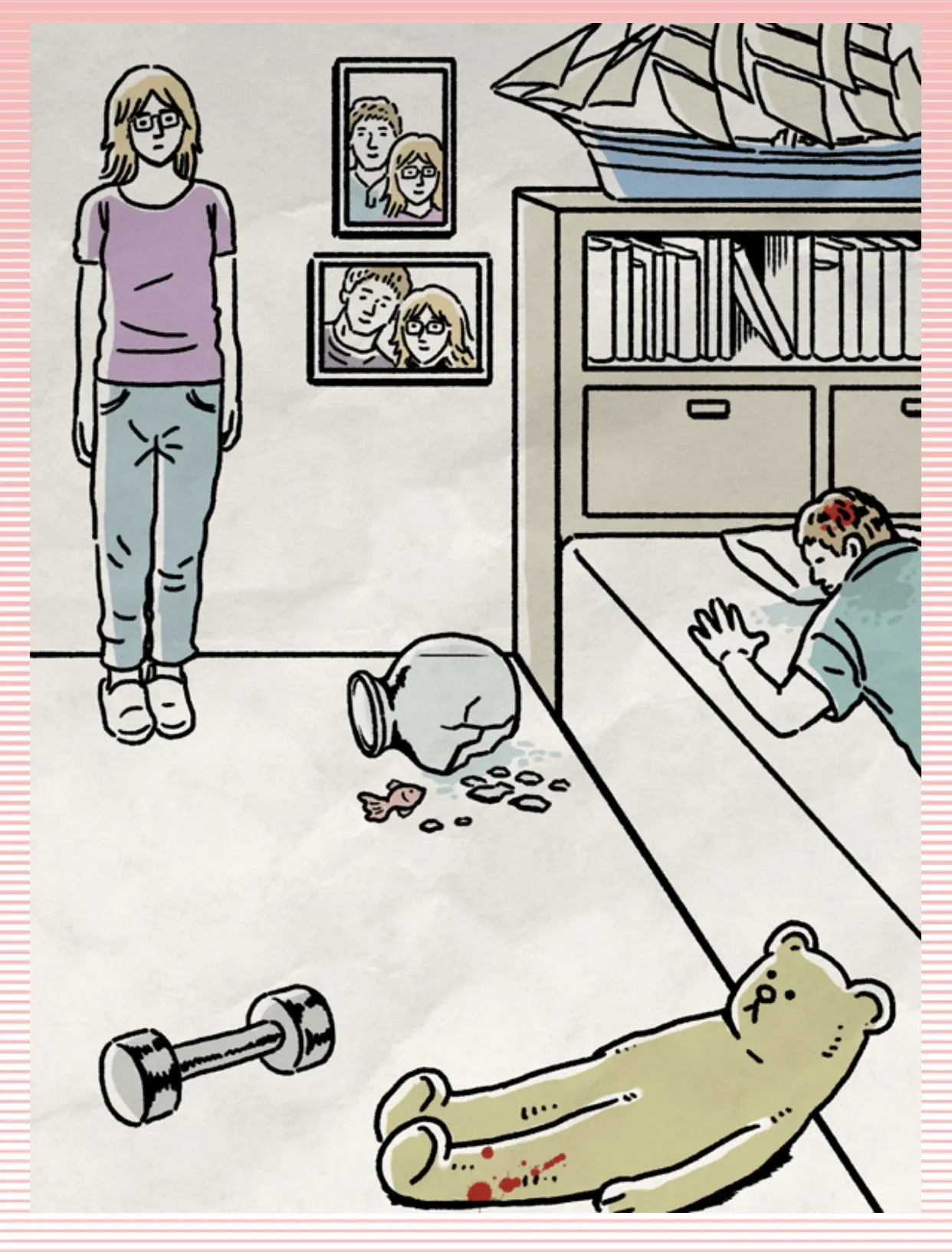
Question 236: At first glance, the fish bowl appears to be the only thing that could cause the fatal wound, because it’s laying on the floor, broken. However…
Question 237. The dumbbell is actually what caused the fatal wound. Being hit with a dumbbell would do a lot more damage than being hit by a fish bowl.
Question 238: The blood stains on the teddy bear make the scene look suspicious. The location of the teddy bear is not in the bed, so this makes investigators think that he died outside of the bed.
Question 239: The model ship on the top shelf above the bed takes up all of the space, and the books take all of the space on the bottom shelf, making it impossible for either the fish bowl or the dumbbell to have fallen on his head.
Stage 62:
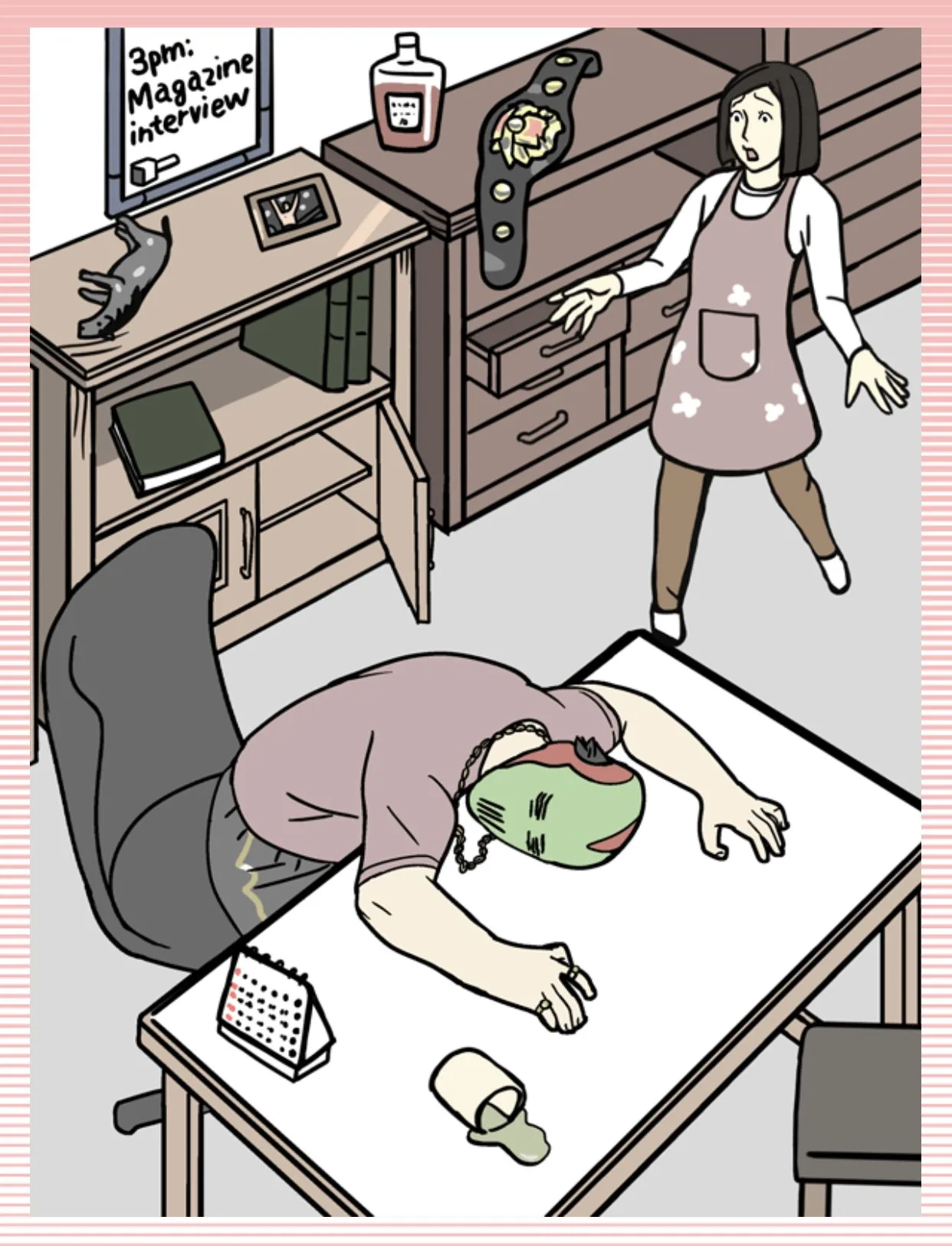
Question 240: You can tell that it was a robbery gone wrong because items were found missing from the wrestler’s shelf, and the shelf looked like someone had rummaged through it.
Question 241: The cup on the desk contained poison instead of tea, which you can tell by the sickly green color. The poison is not what finished off the wrestler though.
Question 242: Instead, take a close look at the face mask. Whoever killed the wrestler turned his mask backwards and strangled him. You can see his eyes, nose and mouth poking out from behind the back of the mask.
Question 243: The clue is the 3PM Magazine Interview note written on the whiteboard behind the wrestler’s desk. The interviewer is the one who killed him.
Stage 63:
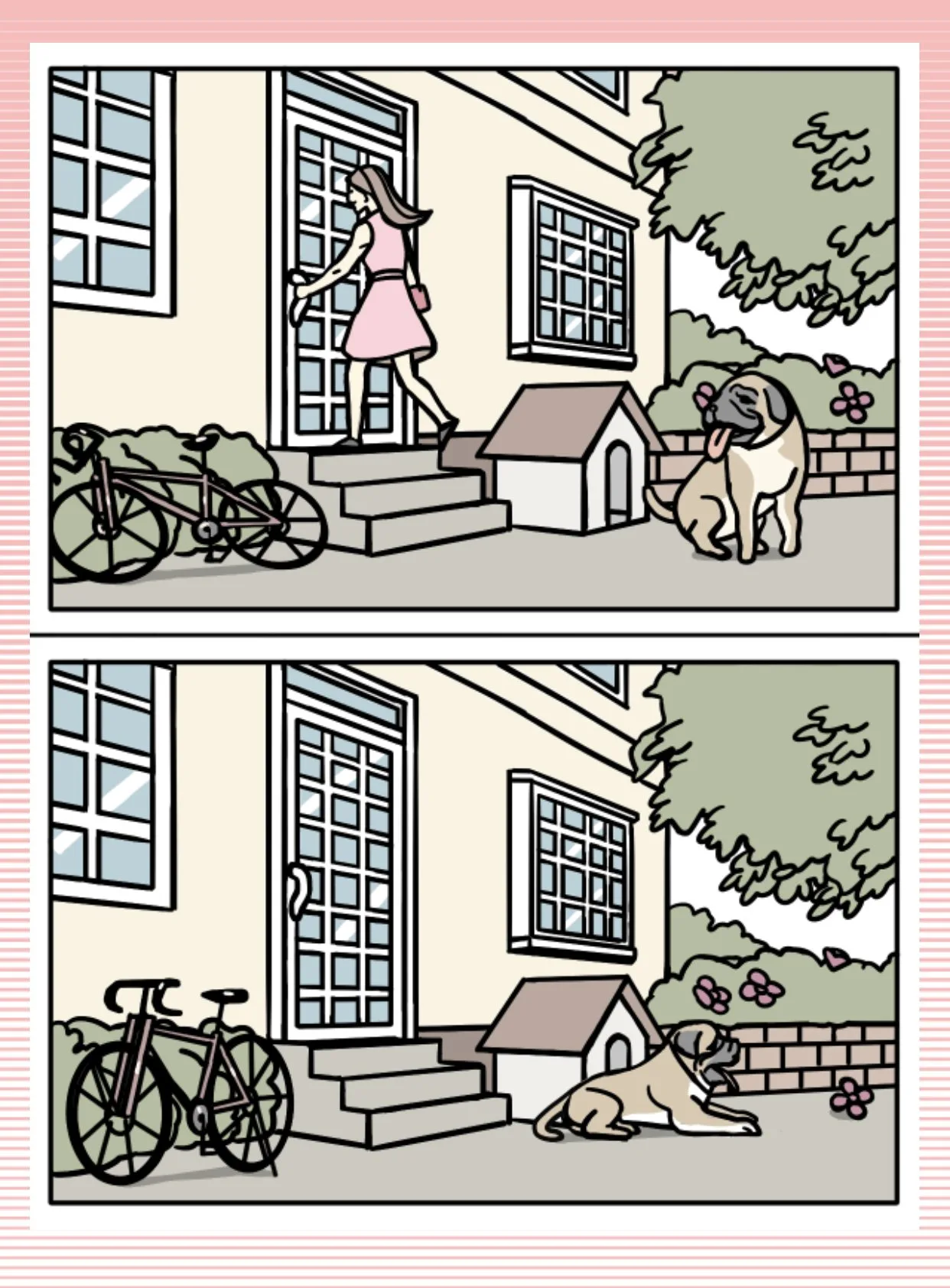
Question 244: A flower had fallen from the bush, which is something that cannot be undone or reversed, proving right what the witness was saying about the time stamps.
Question 245: The dog is looking at the woman in the top photo as if it knows her, not acting like the lady is an intruder.
Question 246: The key was hidden in the doghouse. So not only did the dog not bark at her, but the dog actually let her take the key without barking.
Question 247: What proves once and for all that she is not the robber is the fact that she stood the bike up when she left. No robber would bother to stand the bike up and make it look neat. Turns out, the robber was the neighbor’s son, who had transitioned into a woman but was afraid to say anything.
Stage 64:
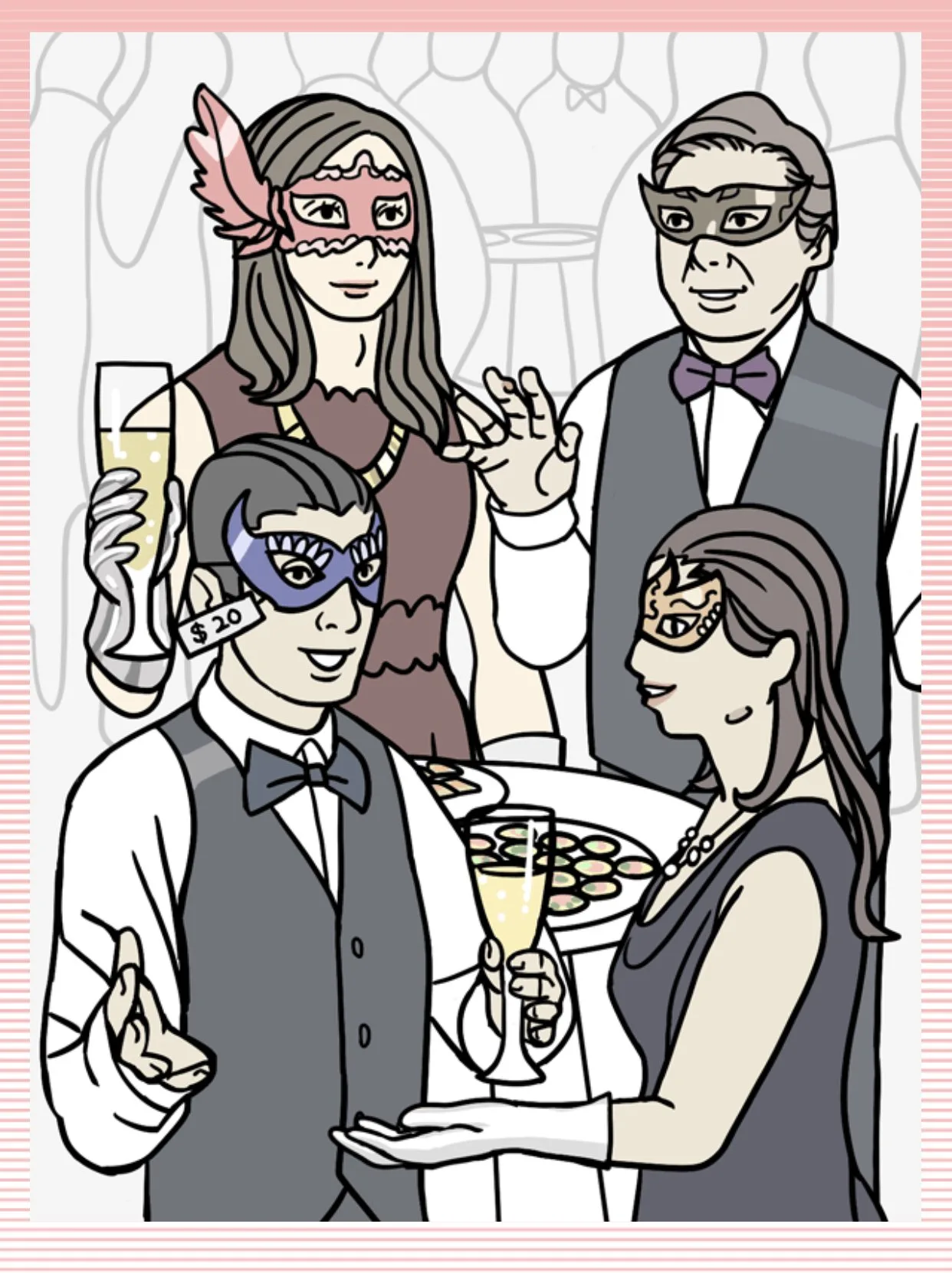
Question 248: The woman in the lower right corner is the one who is performing later. She has a neck callus that signifies a player of a string instrument such as a violin.
Question 249: You can tell who the writer is because he has a red bump on his finger, which is a callus that developed due to holding writing utensils.
Question 250: The guy in the lower-left corner came to the ball in a hurry, which you can tell because the price tag is still on his mask.
Stage 65:
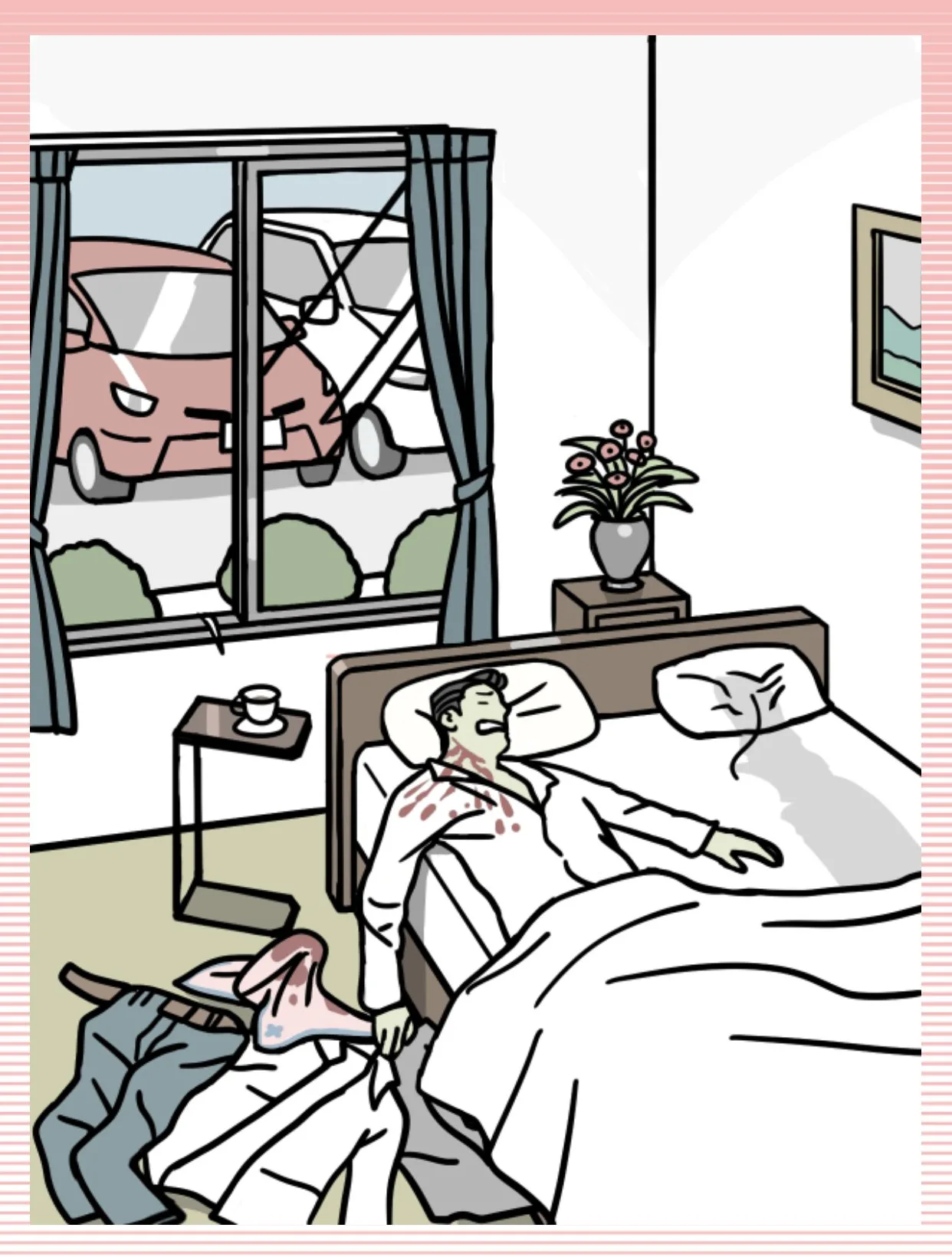
Question 251: You can tell that he was with someone because there is a person-shaped dent in the bed and pillow, and a strand of hair on the empty side of the bed.
Question 252: The bloody towel on the floor is the reason why there is no fingerprint on the knife, because the knife was held using the towel.
Question 253: The scratch mark on the window sill is the other indicator that shows something might have been off with the initial explanation of the crime.
Question 254: The man tied a knife to the car using a thread, so that when the car drove off, it would take the knife with it, allowing him to frame his girlfriend for the murder as revenge for an affair that she had.
Stage 66:
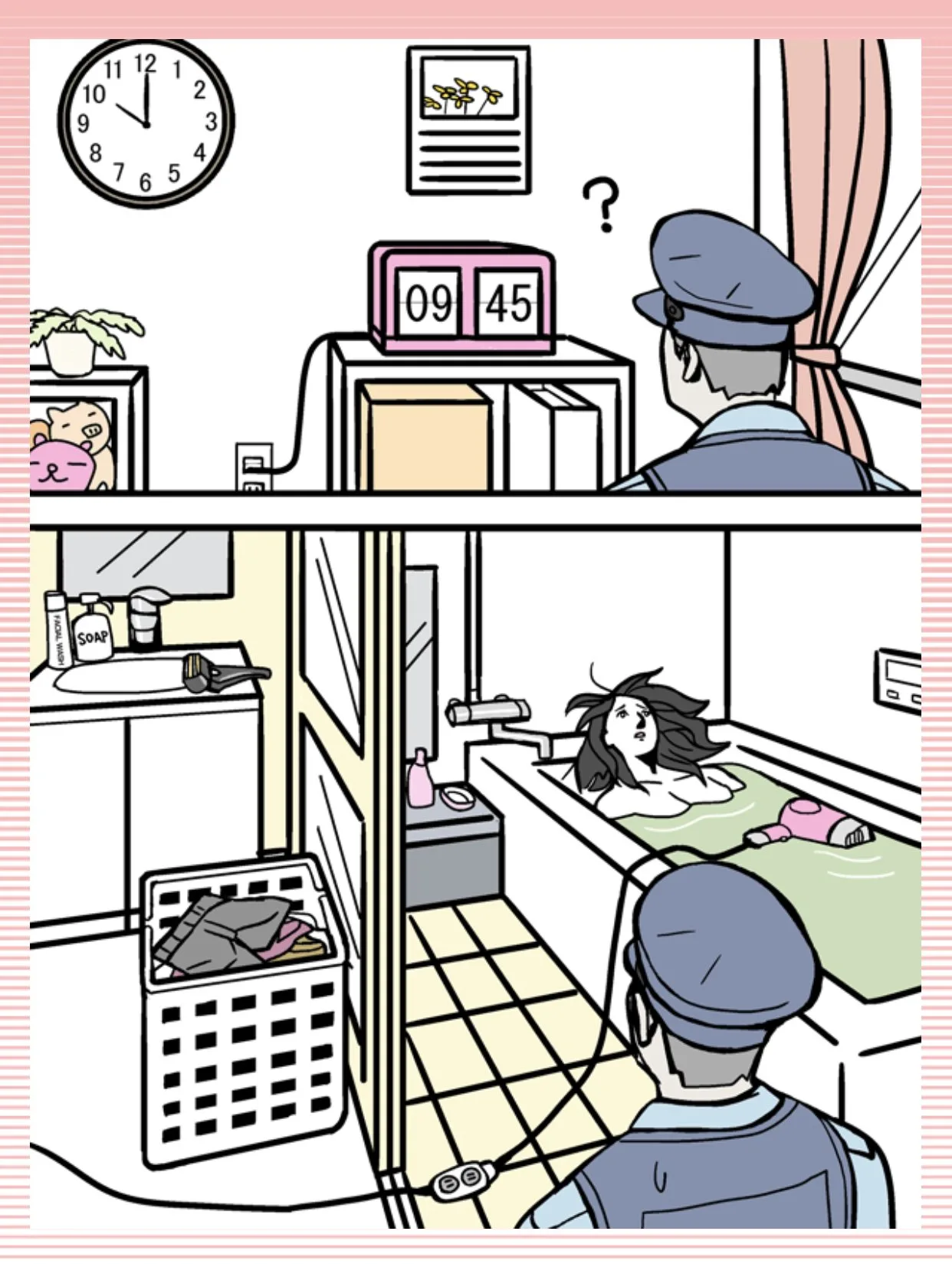
Question 255: Even though the clock said 10 AM, the alarm clock that was plugged into the wall said 9:45, striking the police as odd.
Question 256: The object that killed the woman was a hair dryer that had been thrown into her full bathtub, which is why she had no outside wounds.
Question 257: The razor on the counter is a men’s razor, and indicates the regular presence of a man who visits her frequently.
Question 258: The reason that you know that the man was present is that men’s underwear is the top thing on the laundry pile, showing that he was here very recently.
Stage 67:
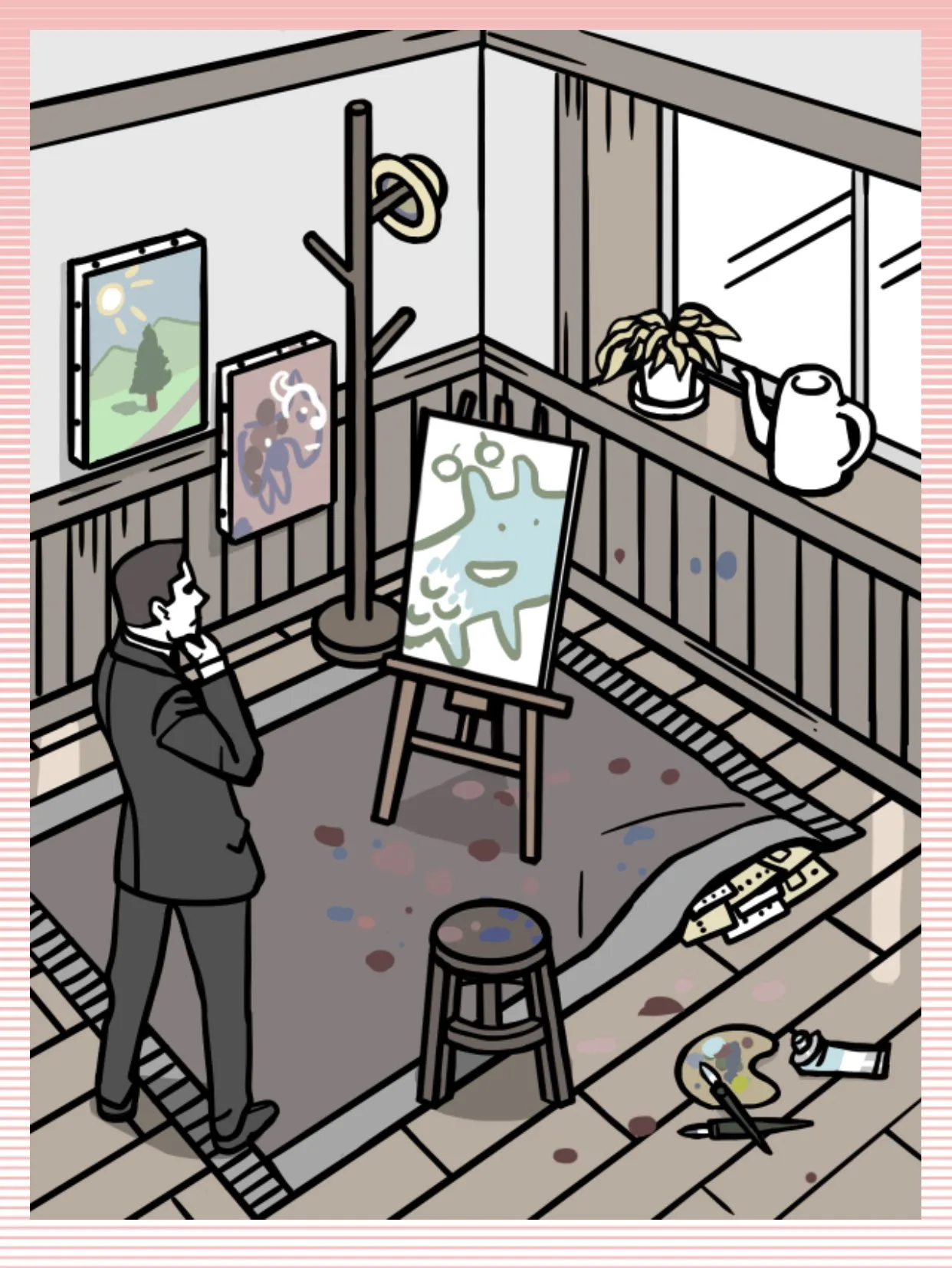
Question 259: The dead plant on the window indicates that the son has been gone for awhile, because he hasn’t been around to water the plant.
Question 260: The painting on the wall of the tree with the sun shining on it indicates that the son was a starving artist. The shadow in the painting is pointing in the wrong direction.
Question 261: The empty tube of blue paint on the floor indicates that the son was making a run to the art supply store to buy more paint when he disappeared.
Question 262: The collection letters under the rug indicate that the son was in serious financial trouble. The investigator concluded that the son is alive and well, trying to make some money and sell some art.
Stage 68:
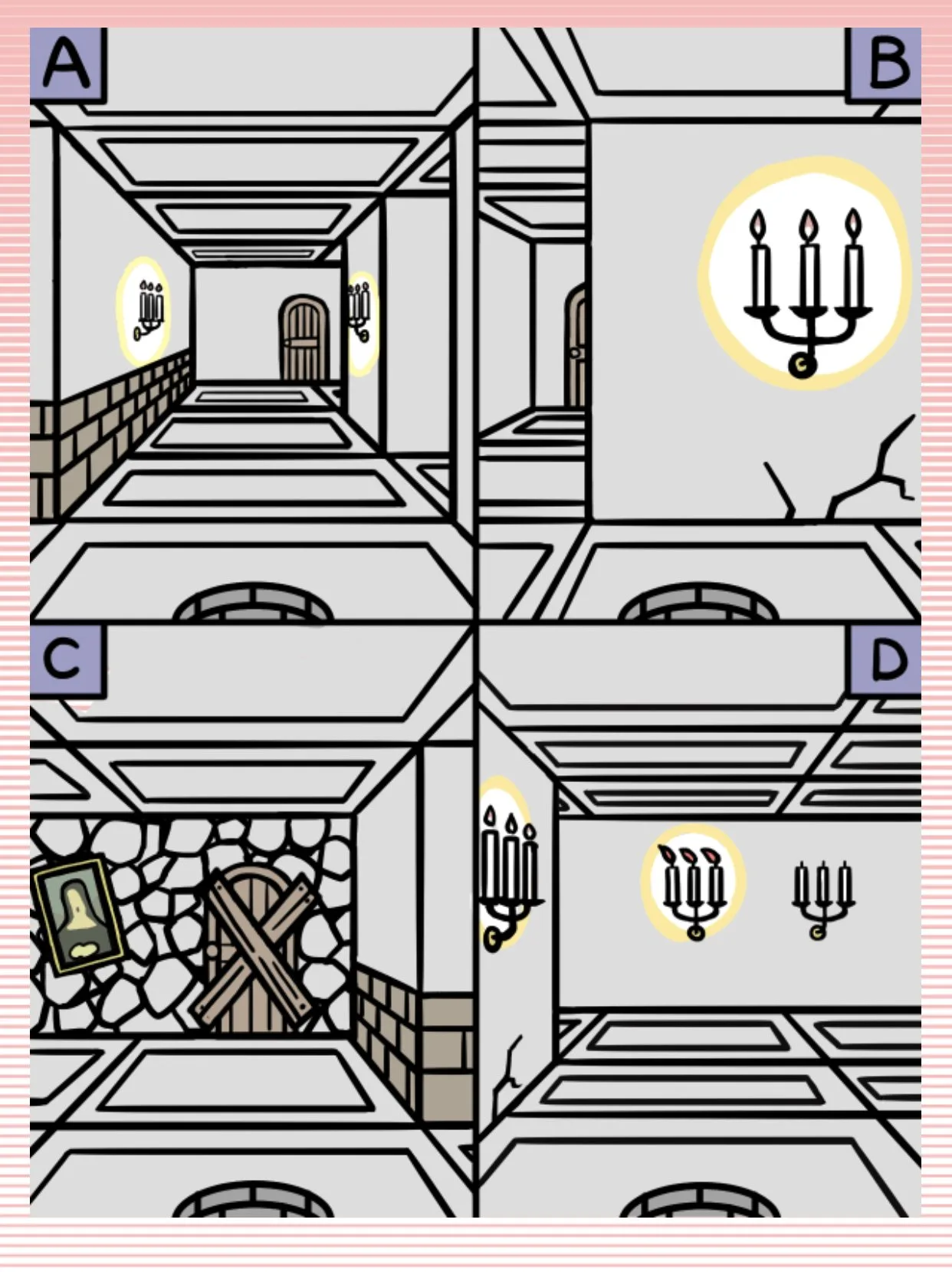
Question 263: The left wall in picture A also shows up at the very right edge of picture C. You can tell by the row of bricks at the bottom of the wall and the lack of cracks in the wall.
Question 264: The candle holder in picture B is at the left side of picture D.
Question 265: The candles in the candle holder in picture D are pointing to the left, which is where the exit to the mansion is.
Question 266: The hidden exit is on the left side of picture C, behind the crooked painting on the wall. There is a small hole to exit through behind the painting.
Stage 69:
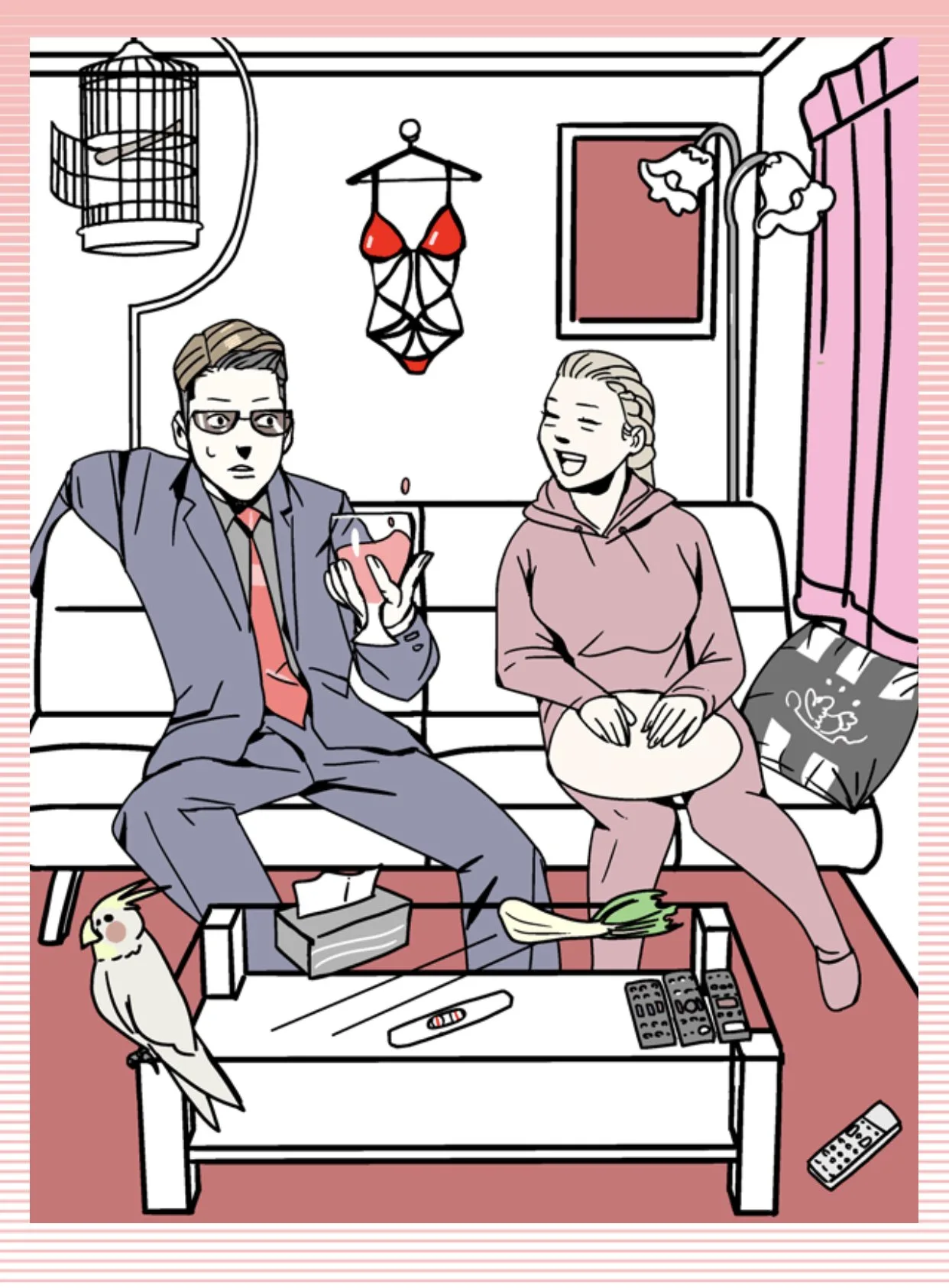
Question 267: The positive pregnancy test on the table is the indicator of what might have motivated the man to want to off the woman.
Question 268: The lingerie hanging on the wall indicates that the woman was in the escort business, which is why the man did not want to marry her.
Question 269: The parrot standing on the table is the bird that pooped on the shoulder of the man.
Question 270: There is a raw fish tail on the table, which is what the woman was using to feed her parrot.
Stage 70:
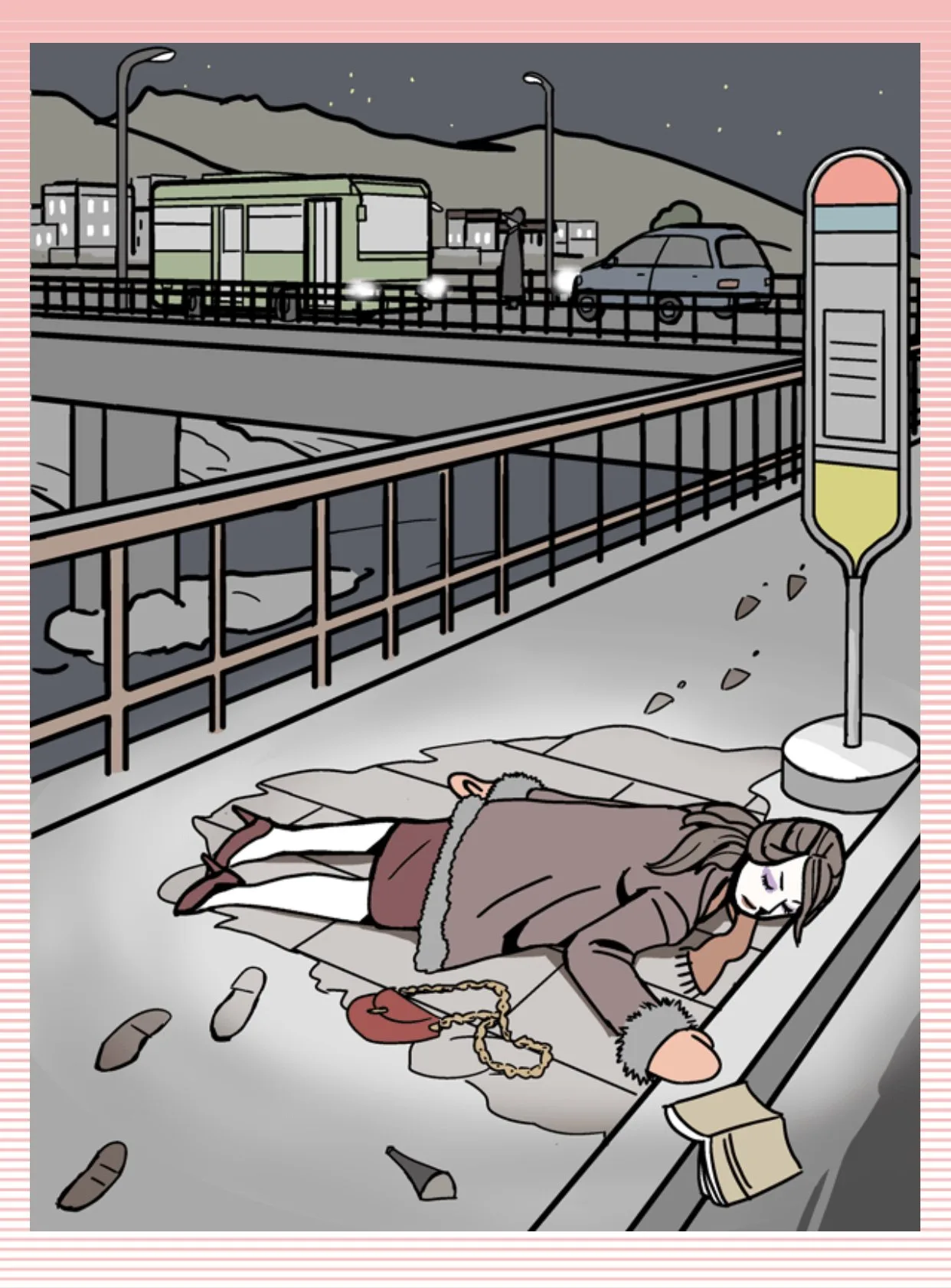
Question 271: The set of footprints on the bottom left corner of the scene are the ones belonging to the murderer. The victim was wearing heels.
Question 272: The broken heel on the ground indicates that the killer was also wearing a set of heels, and switched to normal shoes after doing the crime.
Question 273: The bus stop sign (sign with red, yellow, and green on it) on the right side of the bridge shows that the woman was waiting for the bus, which is why she stayed in the middle of the snow.
Stage 71:
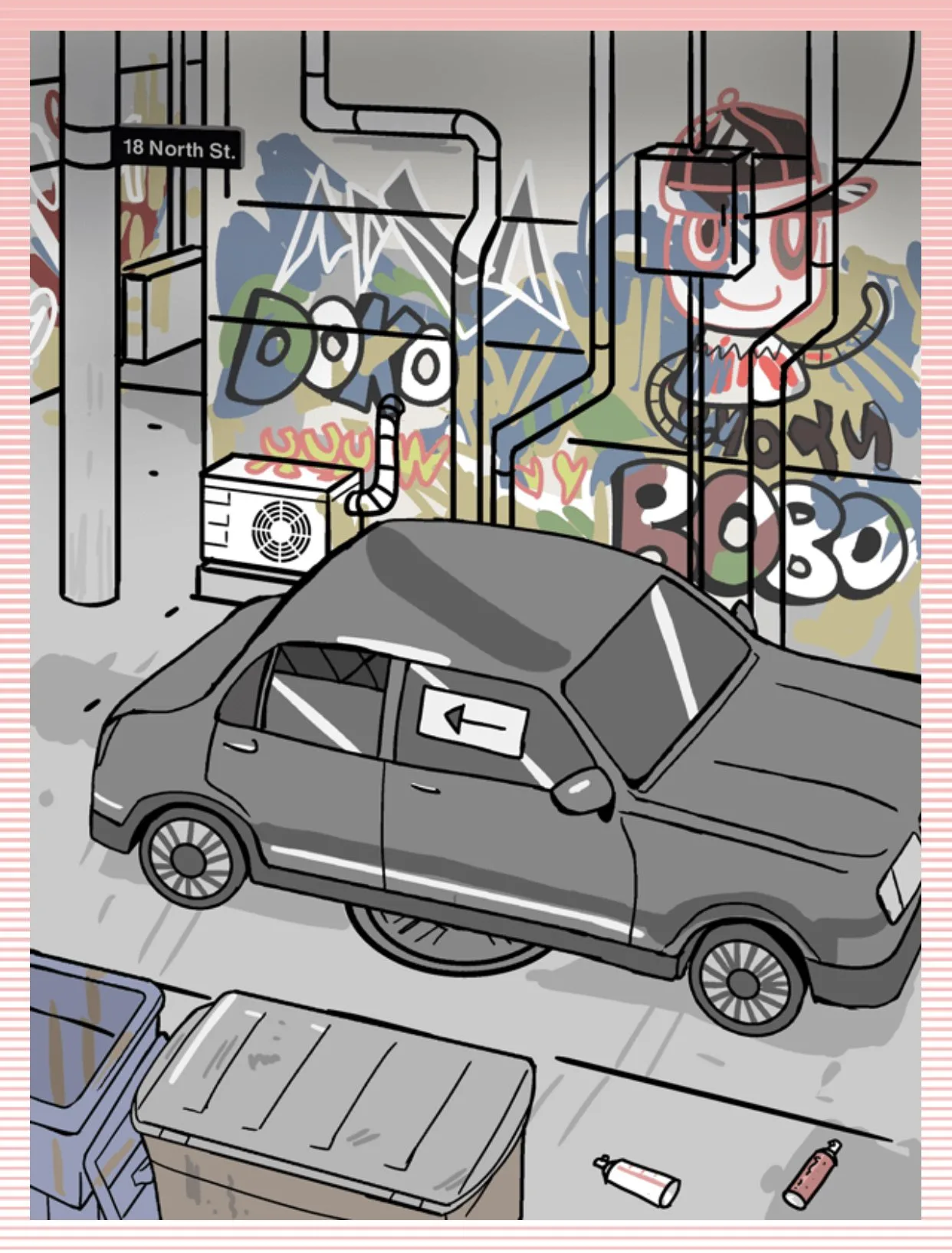
Question 274: The person paying the ransom will hand over the money by sticking it through the open window, as indicated by the sign. Tap the sign, not the window.
Question 275: The empty garbage bin on the left side of the screen (the one with the lid off) is where the kidnapper hid to wait for the money.
Question 276: 18 North St is the address that the police should show up at, as indicated in the street sign.
Question 277: The kidnapper crawled out from underneath the manhole cover under the car, and took the money that way.
Stage 72:
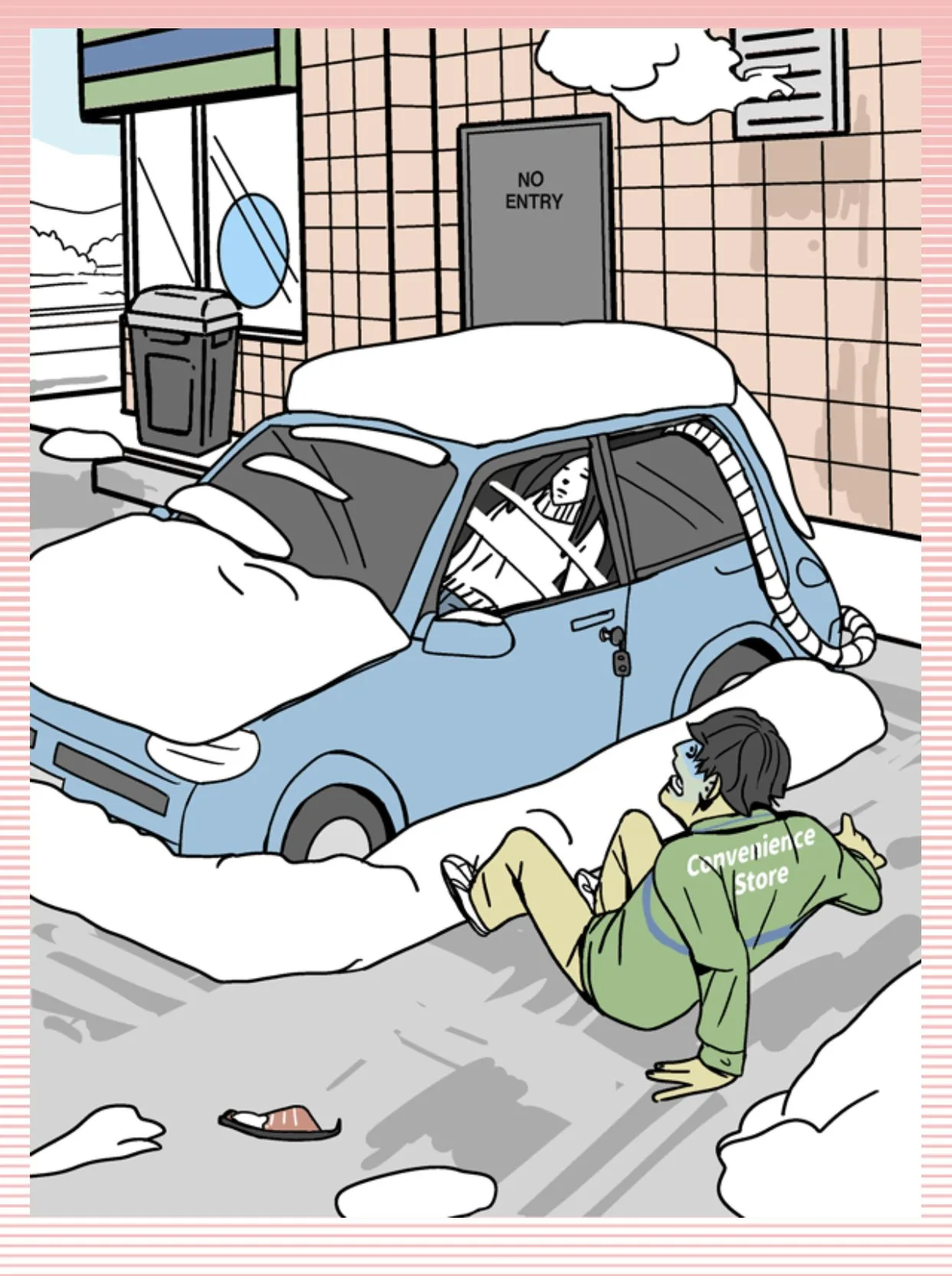
Question 278: The man works at a convenience store, as evidenced by the “convenience store” on the back of the jacket.
Question 279: The hose feeding into the rear passenger door window is what makes the convenience store workers think that this was a suicide. The hose is connected to the car exhaust pipe.
Question 280: The question gives away the answer. The snow would have melted off of the hood if the engine was on, but there is snow on the hood, leading police to believe it’s a homicide.
Question 281: There is a key stuck in the door of the car, which is what leads police to believe that this was a homicide and not a suicide.
Stage 73:
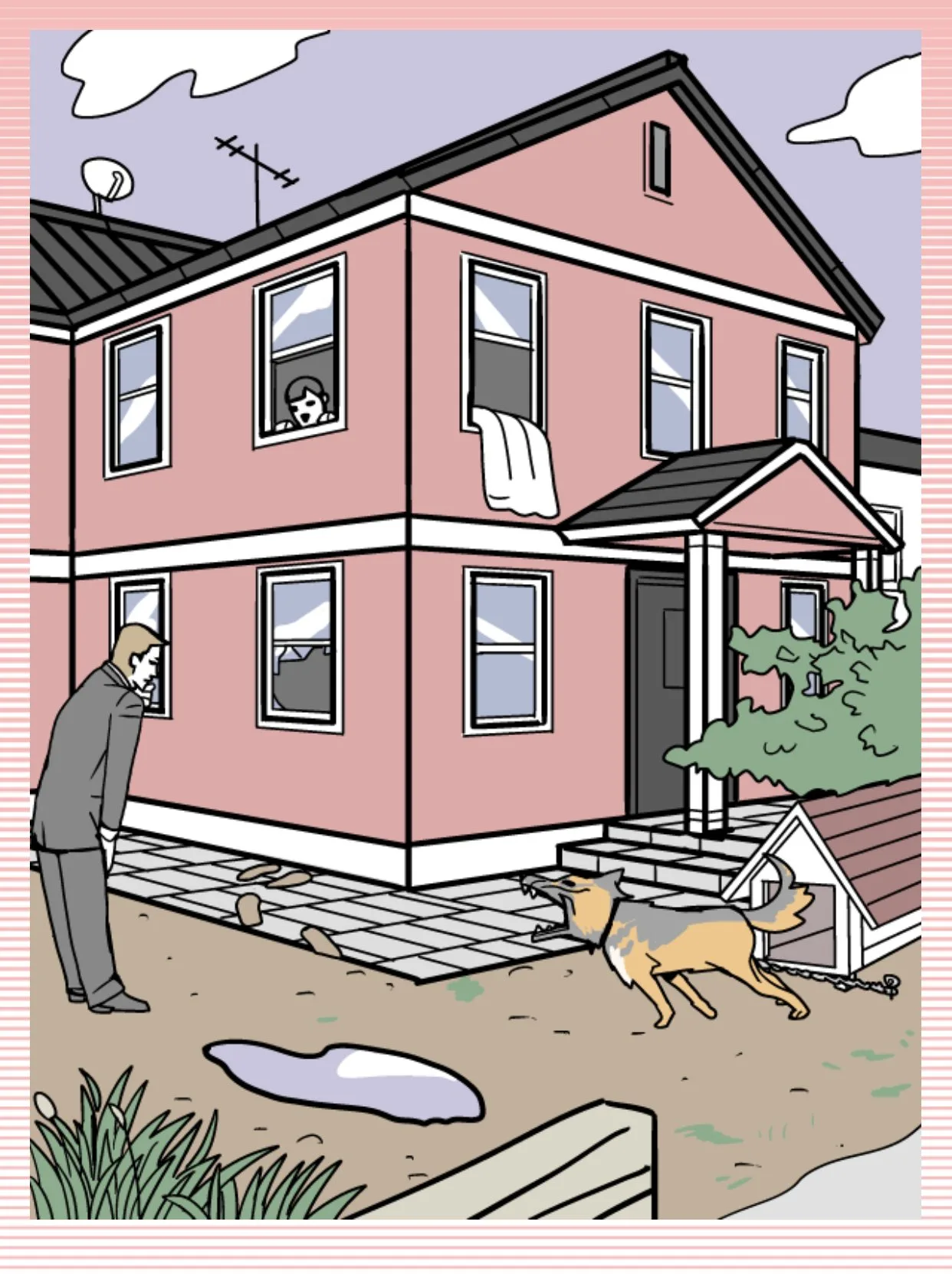
Question 282: The broken window on the first floor is where the burglar got into the house.
Question 283: In front of the window there are footprints, but they are only facing toward the window, not away from the window.
Question 284: The puddle of water indicates that it was rain that helped to preserve the footprints.
Question 285: The dog is the reason that the burglar took another route. It was barking so much that the burglar ran into the house without wiping or clearing his footprints first.
Stage 74:
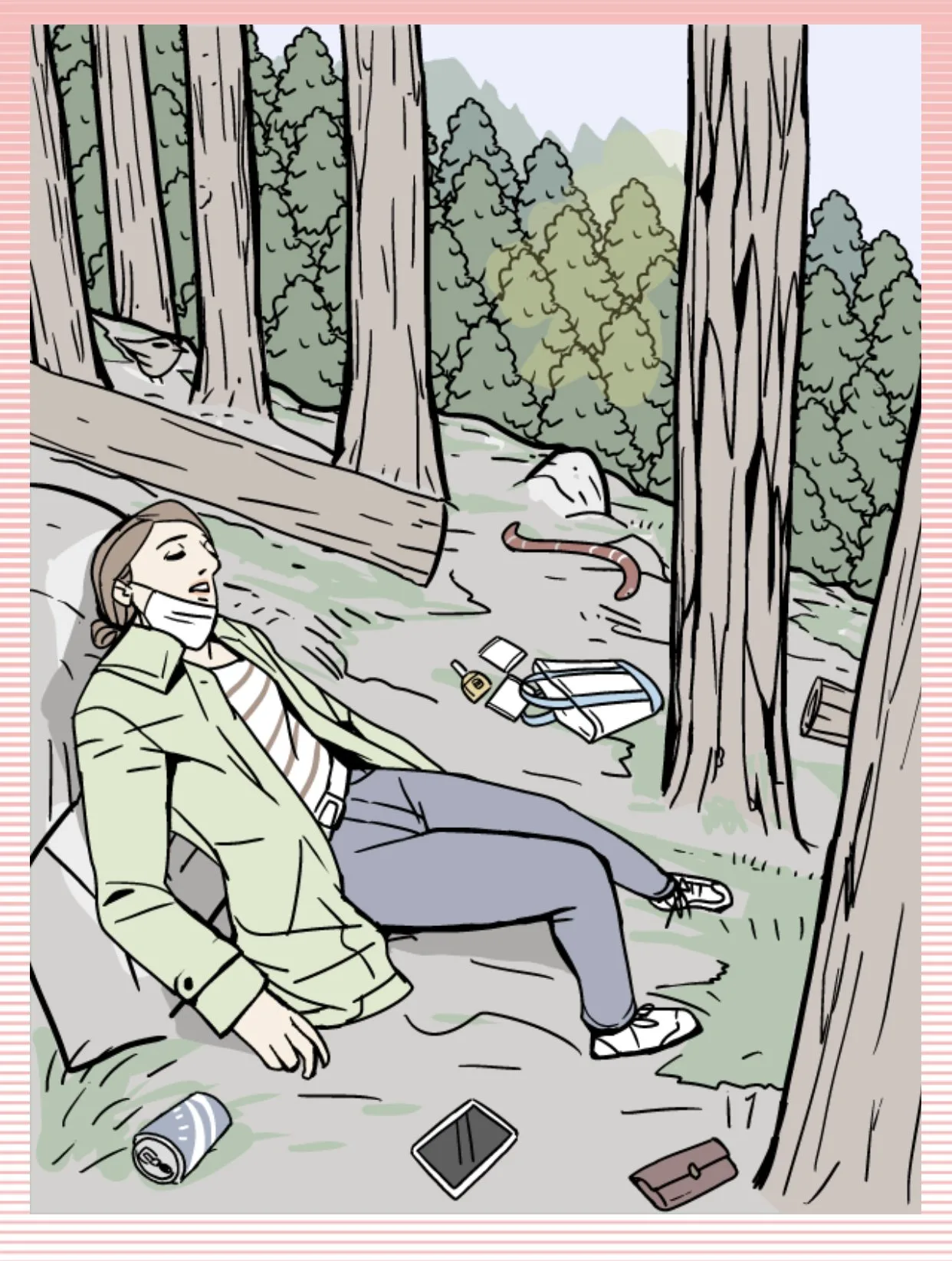
Question 286: The can of soda is the container that probably contained the poison that killed the woman in the picture.
Question 287: The mask on her face is what indicates that this wasn’t a suicide. Likely, she would not have bothered covering her face if she wanted to die by suicide.
Question 288: The woman’s purse contains eye drops and tissues, which indicates that she had some kind of allergy.
Question 289: There are a ton of evergreen cedar trees nearby, which is the allergy from which the victim was protecting herself. She wouldn’t have taken all of these steps to protect herself if she planned on killing herself.
Stage 75:
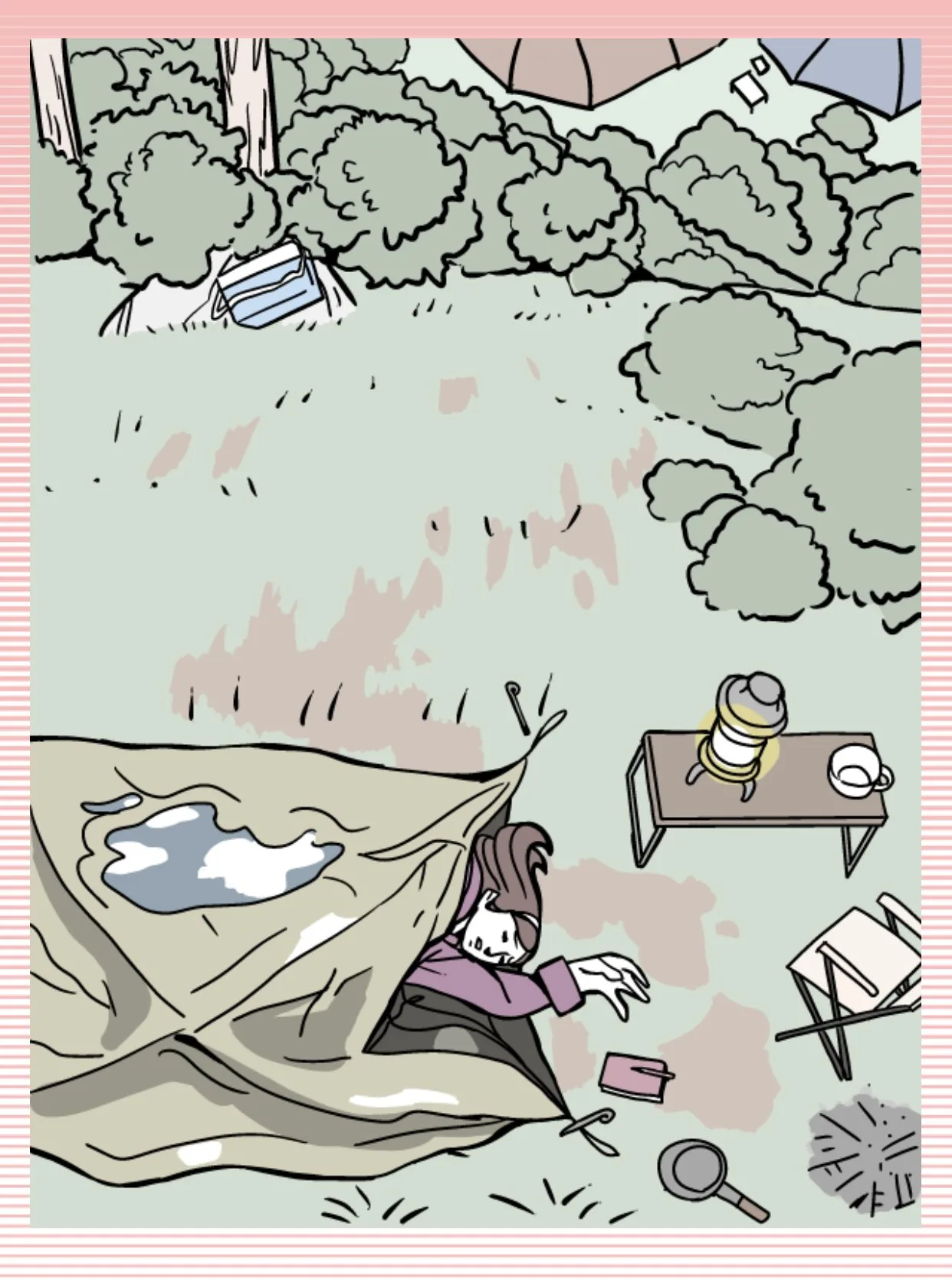
Question 290: The woman’s wallet is what made it easy for the police to identify who she was.
Question 291: The lantern is still burning as if it were nighttime, and if the woman wasn’t killed at night, the lantern would have been turned off.
Question 292: The blue blob on the tent is a puddle of water, which makes the detectives think that the water is a hint at what killed her.
Question 293: The ice chest was the weapon. The water came from ice that was contained inside of the ice chest.
Stage 76:
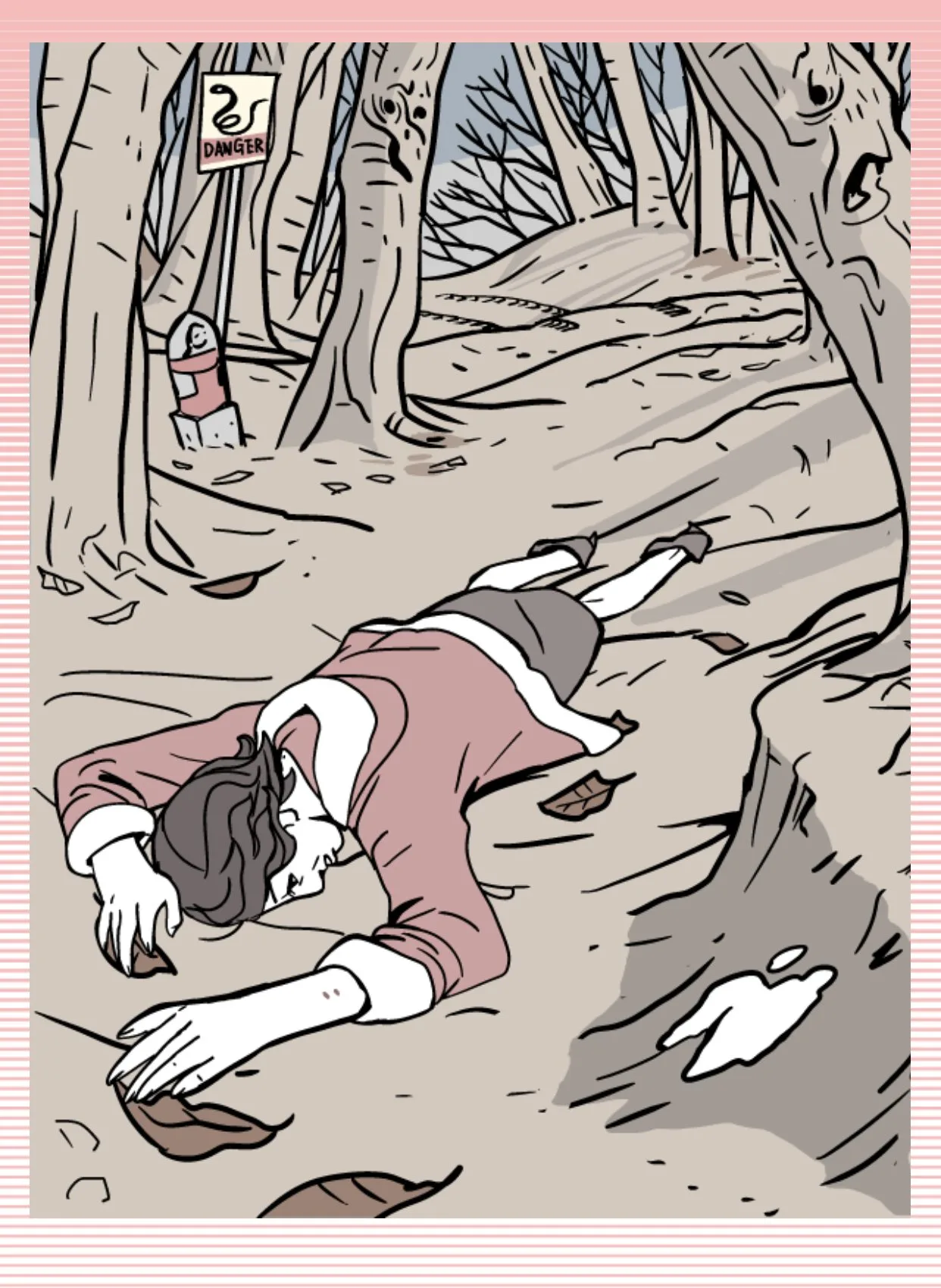
Question 294: The “danger” sign with the picture of a snake on it is the first hint at what might have killed the woman.
Question 295: The two red dots on her arm look like a snake bite, which is “proof” that she could have been bitten.
Question 296: The snow on the side of the hill indicates that it was not actually the snake, as snakes hibernate in the winter.
Question 297: The tire tracks in the background of the picture are the main clue that could lead to the location of the suspect. The suspect drove the body of the victim to this location.
Stage 77:
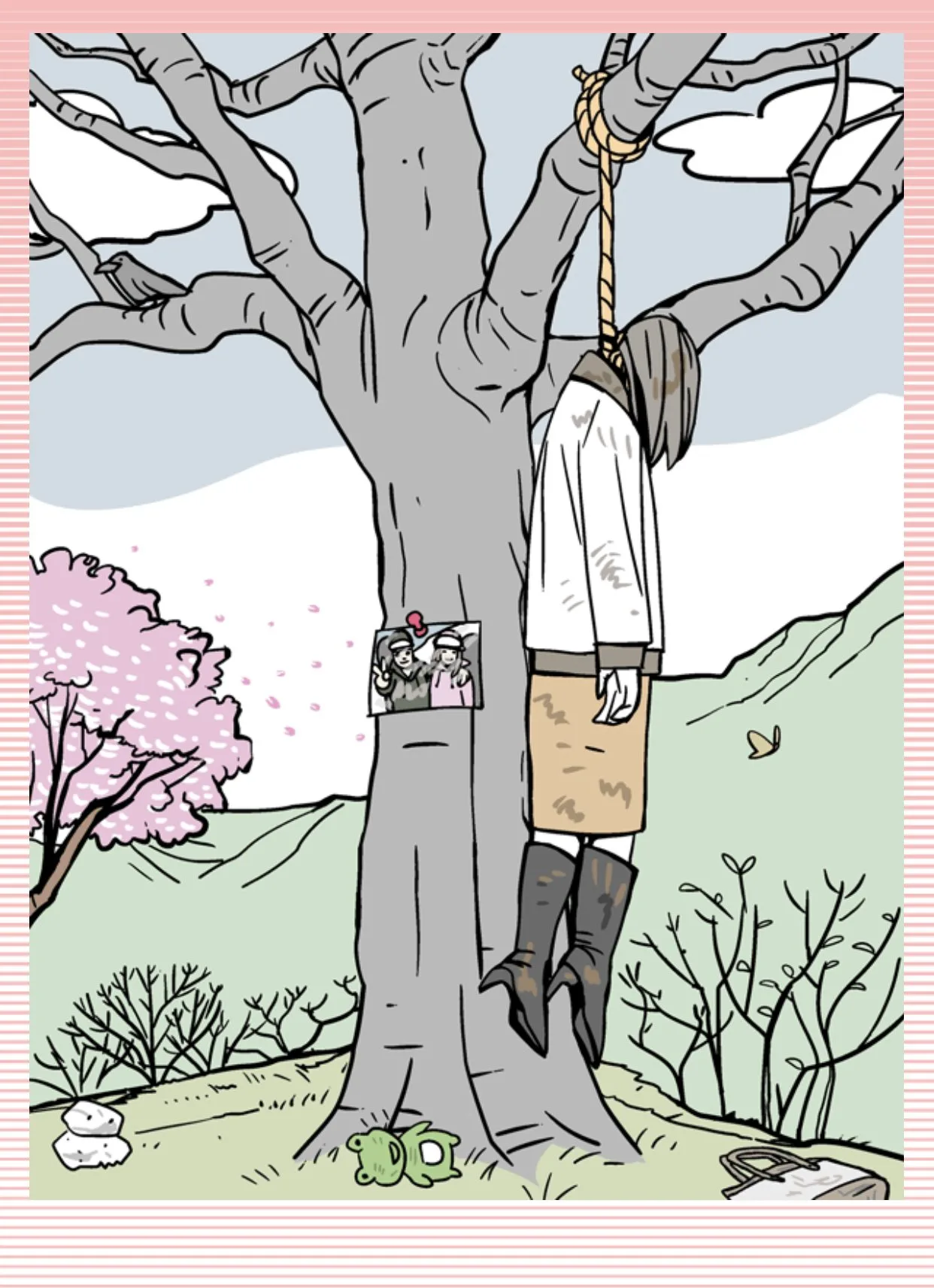
Question 298: Cherry blossoms on the tree indicate that the body was found in the spring.
Question 299: The height of the area where the rope was tied to the tree indicates that snow fell thick enough to allow her to tie the rope to the tree.
Question 300: A sign that she had been driven here is the fact that she is wearing high-heeled boots, which, according to this game, are not suited for either hiking in the snow or for driving.
Question 301: The man in the picture is the reason she decided to kill himself. He broke up with her, and she convinced him to come back up here for one more ski trip. Then she disappeared.
Stage 78:
Question 302: The man who died in the restaurant has a soda cup in front of him, indicating that he didn’t drink alcohol.
Question 303: Police suspect the two because of the candles on the table, hinting that the light at the restaurant was extremely dim.
Question 304: The sudden illness could have been caused by the shellfish, which had been in the small dish that is now empty in front of the man.
Question 305: The bowl of soup in front of the man is what caused the allergic reaction. The soup was shrimp-based but the dim light hid the shrimp.
Stage 79:
Question 306: The belt came from around the waist of the woman. She has belt loops on her dress, but no belt at the moment.
Question 307: The broken glass bottle is what was suspected as the item that knocked the woman out first.
Question 308: Police suspect that the assailant is still there because the door has been locked from the inside, hinting the the killer didn’t escape.
Question 309: The killer locked the inside lock from outside using snow on the outside, which melted inside and caused the door to lock. The puddle on the floor hints at the snow melt.
Stage 80:
Question 310: The broken flower pot on the ground hit the girl in the head, causing her to collapse and fall to the ground.
Question 311: The balcony with eight other flower pots on it is where this flower pot happened to fall from.
Question 312: The actual target of the flower pot drop was the woman on the left, wearing a hat and walking the dog.
Question 313: The dog was the cause of the dispute. The dog’s barking angered the woman, and the landlord didn’t do anything about it, so the woman took matters into her own hands.
Stage 81:
Question 314: The blood stain on the rocks is an indicator of what caused the death of the woman in the onset.
Question 315: The other set of towels and soap on the rocks was an indicator that someone else was in the hot springs, too.
Question 316: Suspect C is wearing a bathrobe and has her hair tied back, indicating that she was in the bath at the time of the incident.
Question 317: The sake bottle near the woman shows that the woman got drunk and began harassing C, which is why C took matters into her own hands.
Stage 82:
Question 318: The high heel missing off of the foot of the woman hints that she actually did trip and fall down the stairs.
Question 319: The arrow in her back is not broken, and if the crossbow caused her to fall down, the arrow would be broken.
Question 320: The police wanted to check the man’s rolling suitcase, because that’s the only thing he had that would be big enough to hold a crossbow.
Question 321: The picture of the victim and the witness together on the victim’s phone is what led to the conclusion that the witness was actually the perpetrator.
Stage 83:
Question 322: Police had a hard time entering the room because of the chain lock on the door.
Question 323: You can tell that the main either just got home or was about to go out because he still has his shoes on.
Question 324: You can tell that the man was attacked somewhere else because the vase on the table hasn’t been moved, like it would have been if there was a struggle inside.
Question 325: The victim died with the phone in his hand. He got stabbed outside, ran inside and locked the door, then called the police.
Stage 84:
Question 326: The poison must have come from the paper cup, since the man was using it to drink the water from the water dispenser.
Question 327: The pill bottle is the reason that the man had to drink water, so that he could use it to make the pills go down more smoothly.
Question 328: The manager was in the doorway and had a car key in her hand, indicating that she had to rush in the room too quickly for her to have had the time to poison the cup.
Question 329: The police stopped suspecting the assistant director because he had the word “cup” on his hand, which indicates that he had to be reminded to prepare the cup.
Stage 85:
Question 330: The victim had a pen with her. That pen might have been used to write down the code to the alarm system.
Question 331: She wasn’t suspicious of the package because all of the boxes in the bottom picture indicate that she was a frequent shopper.
Question 332: The victim shopped for almost everything on line due to her disability, which is hinted at by the cane leaning on the door in the first picture.
Question 333: The camera next to the computer shows that the victim was a popular streamer, and that her killer was a crazed fan.
Stage 86:
Question 334: The coach’s death was due to the pair of scissors sticking out of his back.
Question 335: The gap in the sand under the benches is where the killer hid while waiting for the coach to come into the locker room.
Question 336: The captain was ruled out as a suspect due to his sheer size making it difficult for him to hide under the bench.
Question 337: The assistant manager’s skirt has dirt on it that’s hidden by the jacket tied behind her waist, indicating that she is the one who did it.
Stage 87:
Question 338: Number 3 is the one who is definitely not the thief, because she was in a bikini, and she wouldn’t be able to hide anything in it.
Question 339: Number 2 can be ruled out by the gorgeous hair criteria, simply because her hair was short and not that thick.
Question 340: Number 5 is paying no attention to the undercover cop, indicating that she has nothing to fear and thus is not the thief.
Question 341: Number 4 turned out to be the thief, because number 1 has a see-through bag with her, which can’t hide anything.
Stage 88:
Question 342: The squawking parrot was making a ton of noise, and was able to alert the neighbors to the body extremely quickly.
Question 343: The pill bottle on the bed is indicative of what killed the woman. It’s filled with poison.
Question 344: The parrot’s words were what led police to believe it was actually a homicide. The parrot was yelling “Who’s that guy, huh?”
Question 345: The man in the picture on the floor is the one who is suspected of killing the woman.
Stage 89:
Question 346: The killer beat the victim on the head where there is blood near his ear.
Question 347: There is a left-handed glove next to the body. That means the killer was most likely left-handed.
Question 348: Victim C has the right-handed glove on, thus he could not be the killer. The killer was left-handed.
Question 349: B is the killer. You can tell because his jacket is zipped up all the way to his neck, covering up the rest of his uniform, and any possible stains on it.
Stage 90:
Question 350: The bottom rifle on the wall is the one that discharged and killed the man. You can tell because it’s at the same level as the wound.
Question 351: The wine bottle on the table caused the discharge. The light magnified when it shined through, burning the rifle detonator.
Question 352: The wine glass on the end table next to the man on the couch is a clue why the wine was out. He was drinking it.
Question 353: The picture of the man and the guns shows that the rifles used to point away from the sofa, not toward it, hinting that this was a homicide.
Stage 91:
Question 354: The ventilation pipe coming out of the gas furnace is why police initially thought it was a suicide.
Question 355: The calendar on the wall of the victim is what indicated to police that this was, in fact, not a suicide.
Question 356: The vacuum cleaner outside of the door was used to cause the duct tape on the outside of the door to seal on completely.
Question 357: The earmuffs on her eats explained why she didn’t hear the vacuum, clearer when it was run.
Stage 92:
Question 358: The thief broke in through the big hole in the glass on the sliding glass door.
Question 359: The masterpiece was stolen from the big dark rectangle spot on the wall.
Question 360: There is a footprint near where the painting was stolen from, which will be easy to use to identify the killer.
Question 361: There is water on the ground outside near the plants, so their recent waiting left water behind, which then became footprints after it had been stepped in.
Stage 93:
Question 362: The clock on the pole shows what time the body of the victim had been found.
Question 363: The weapon that killed the woman is the bloody pair of scissors, which is sitting on the ground behind her.
Question 364: The runner has tape around her right ankle, which shows where the previous injury had been located.
Question 365: C was the one who committed the crime. You can tell because she has a cut on the palm of her right hand.
Stage 94:
Question 366: This is the picture from the title of the game. The woman’s fatal hit occurred on her head. No wounds were left because it was blunt force.
Question 367: The broken glass item on the ground is what gave the woman the fatal wound.
Question 368: The fish bowl came from the top of the cabinet, where there are also other fish bowls located.
Question 369: You can tell that it was not the fish bowl, because none of the water spilled out onto the woman, as it would have if it were an accident.
Stage 95:
Question 370: The archeologist was in Egypt to visit the pyramids at the time of the crime.
Question 371: Another thing that proves what he is saying is that the man also has a watch-shaped tan line on his wrist.
Question 372: The archeologist is riding a Bactrian camel which has two humps, while the nomads in the background are herding Arabian camels. Bactrian aren’t found in Egypt.
Question 373: The man in front of the archeologist’s camel has “ZOO” on his sleeve, indicating that he actually worked for the zoo.
Stage 96:
Question 374: The coach is holding a football helmet, which is a clue as to who the murderer really was.
Question 375: The coach had a bite mark on his arm, because he was trying to persuade a student to have intercourse with him, and she bit him to get away.
Question 376: The pool of blood by his head is an indication that it was not the bite mark that killed him.
Question 377: The coach’s hint described The member of the fencing club, the girl in the lower-left corner, who used her saber to stab the coach.
Stage 97:
Question 378: Tap the coconuts in the tree. A coconut fell on the man’s head, but no coconuts are on the ground.
Question 379: The girlfriend thinks that the giant lobster on the tree knocked down the coconut that hit the man on the head.
Question 380: The surfboard is actually what hit the man in the head and knocked him unconscious. The girlfriend confesses that she is the one who hit him with it.
Question 381: She hit him because his phone hinted at an affair. His phone shows a lot of messages.
Stage 98:
Question 382: Tap on the skis. The man is skiing, which is why he is away on vacation in the mountains.
Question 383: The cherry blossom tree is in bloom, indicating that the picture was actually taken in the spring.
Question 384: The man is trying to hand his phone to someone. If it were a selfie, he would have used his phone for it.
Question 385: The picture was taken by a woman, who can be seen in the reflection off of his goggles.

MilitaryGirl
Tuesday 12th of April 2022
(T+U` T) Hi! Do yоu wаnt to communicatе livе? Im hеrе – >>>ujeb.se/eTflAZ
MilitaryGirl
Tuesday 12th of April 2022
(0.-TKoj) Hi! Do yоu wаnt to communicatе livе? Im hеrе – >>>ujeb.se/eTflAZ
MilitaryGirl
Tuesday 12th of April 2022
(,bzBv}f) Hi! Do yоu wаnt to communicatе livе? Im hеrе – >>>ujeb.se/eTflAZ
Alease Dormane
Wednesday 12th of February 2020
tradmusic.com